Caravane Tighmert 2017
Heidi Vogels / Gilles Aubry
The first time I talked to Heidi Vogels it was in 2012, she had collaborated with a friend of mine, Karima El Filali, in a performance in Amsterdam, where she lives. Heidi works, among other issues, on landscapes, its stories, its heritage, its people... in the Netherlands, Spain and Morocco. I was interested by the project she does in Fez, Gardens of Fez and I tried to invite her to come to the desert, to lead a workshop on oases landscapes in Zagora, with my students from the National School of Architecture in Tetouan but we could not do it (lack of money). Some years later, I thought it would be great for her research in Fez and for what we were doing in Tighmert, to invite her and compare what a garden with dwellings inside looks like, as opposition to the medina of Fez. She finally came in May 2017.
At the same time, Swiss sound artist Gilles Aubry, contacted us through Lina Laraki (she came in 2016) because he was working on women singing in Morocco, using as a departure point the recordings Paul Bowles did in Morocco. He had already come to Guelmim and he interviewed some relatives of the musicians Bowles met in the 50s. When he watched our activities on Internet, he thought we could help him to work with women of the region, something he tried in Northern Morocco but he could not accomplished. At that moment, we realised the importance of working with inhabitants, not just for the artists' researches, also for themselves. Now they are used to see artists in the oasis and they use to work with them.
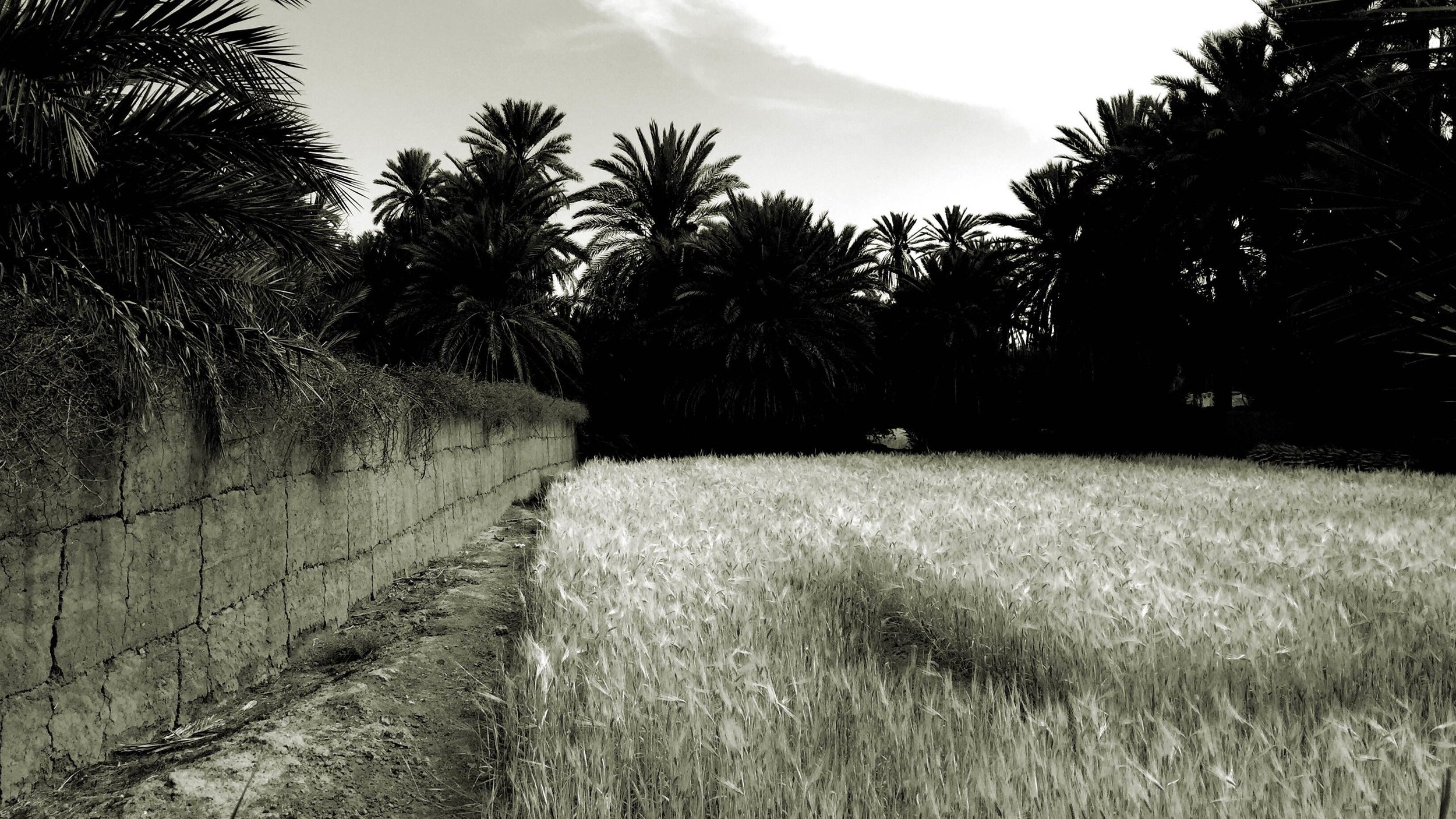
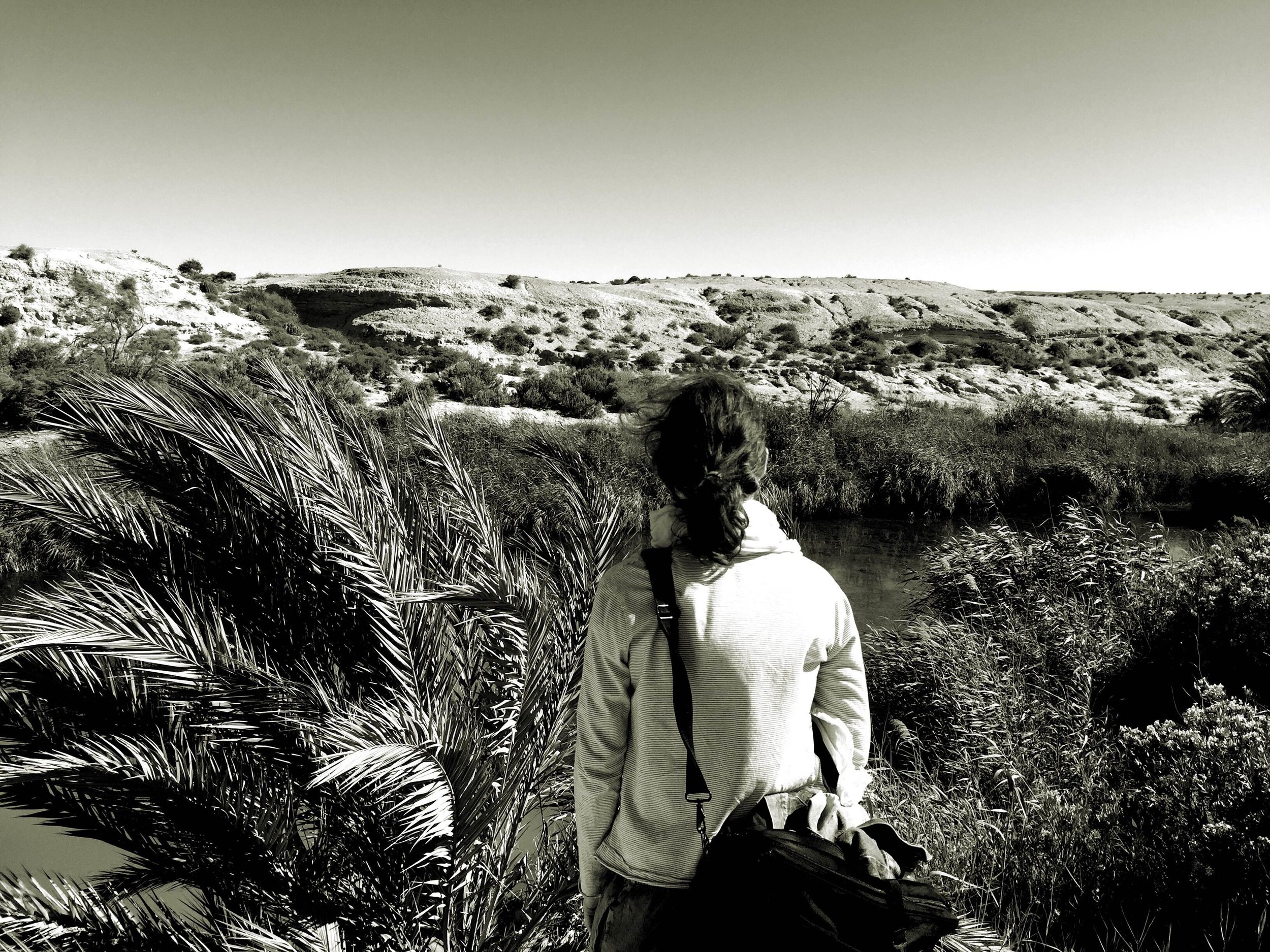
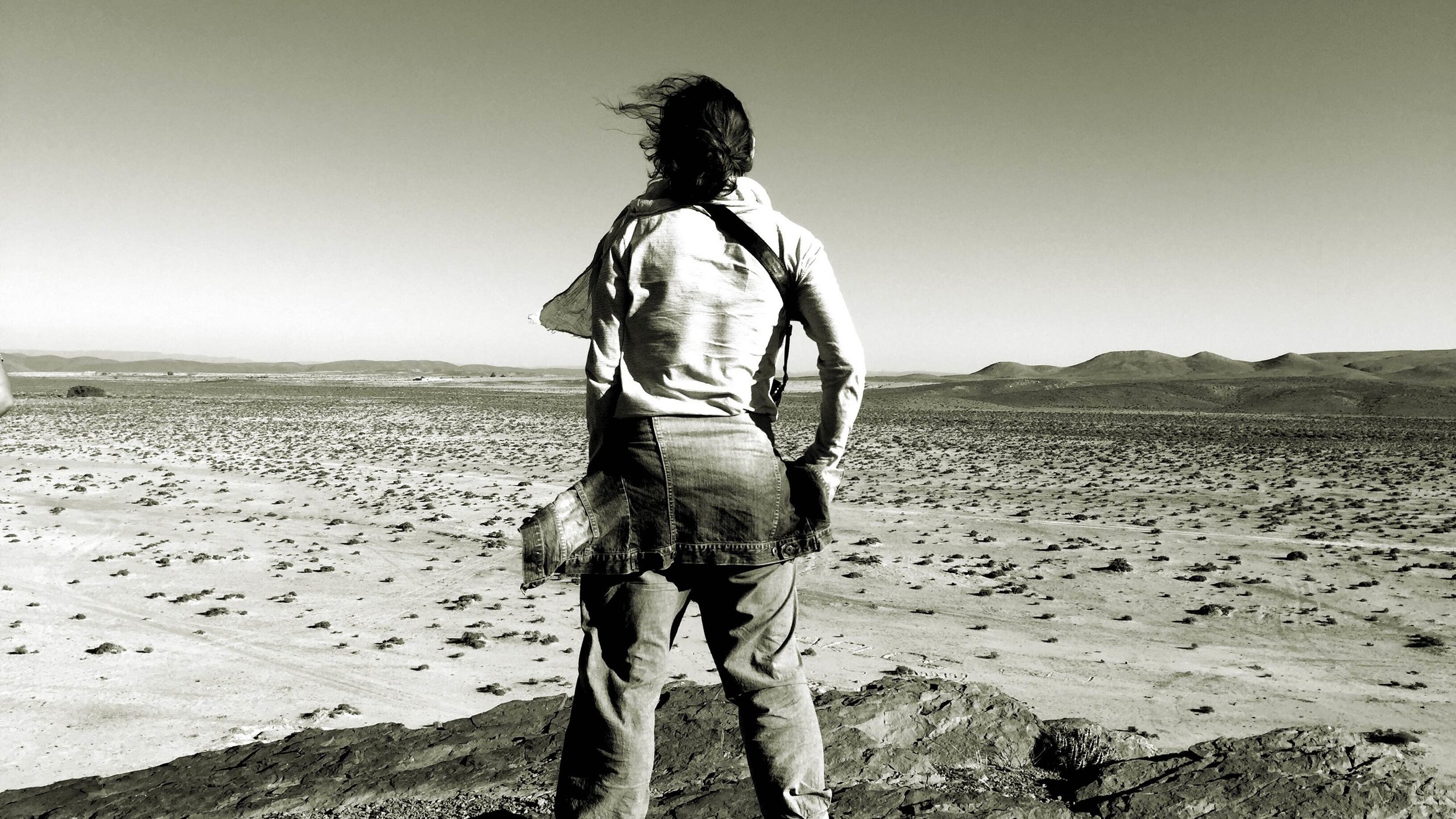
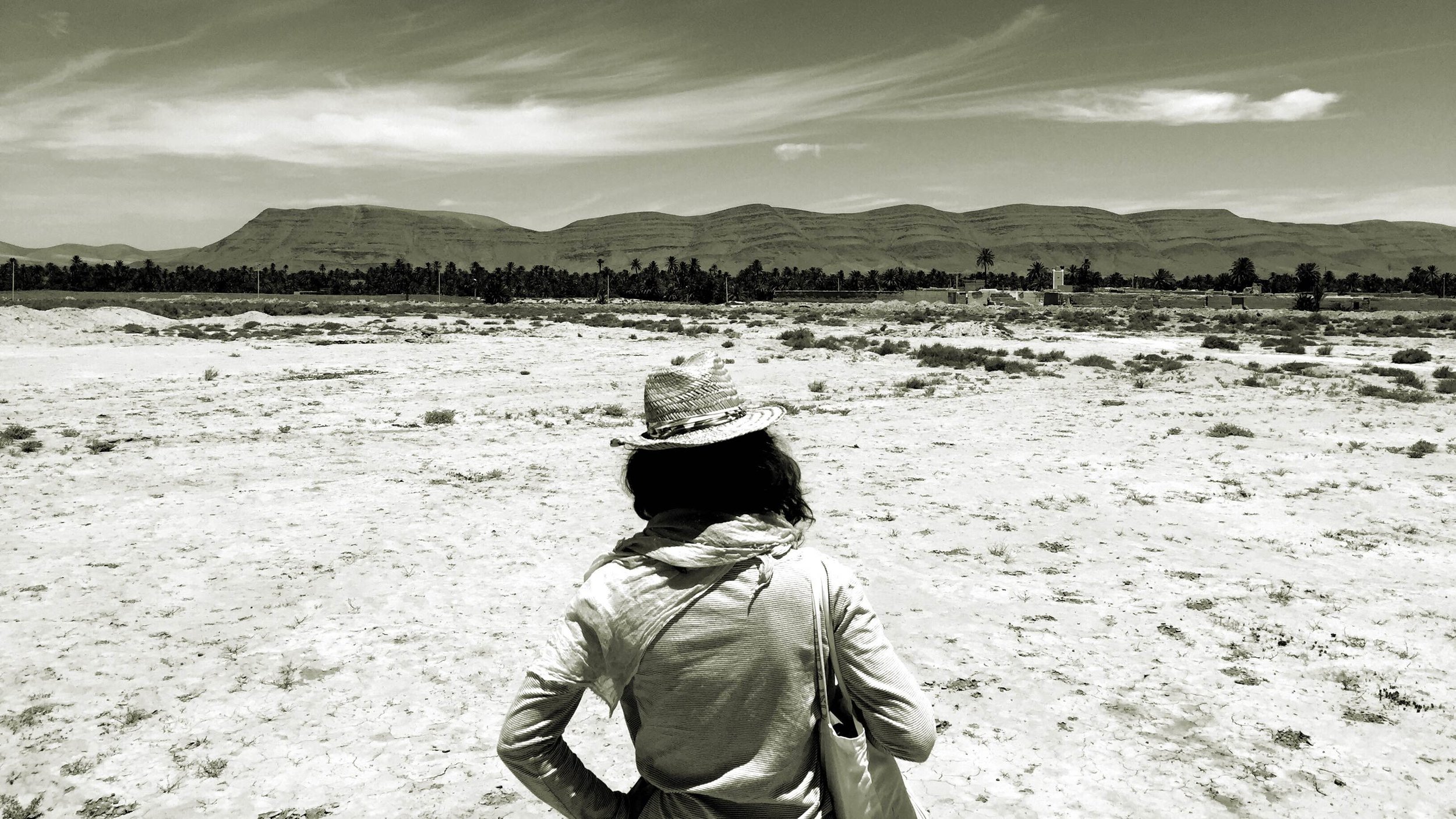
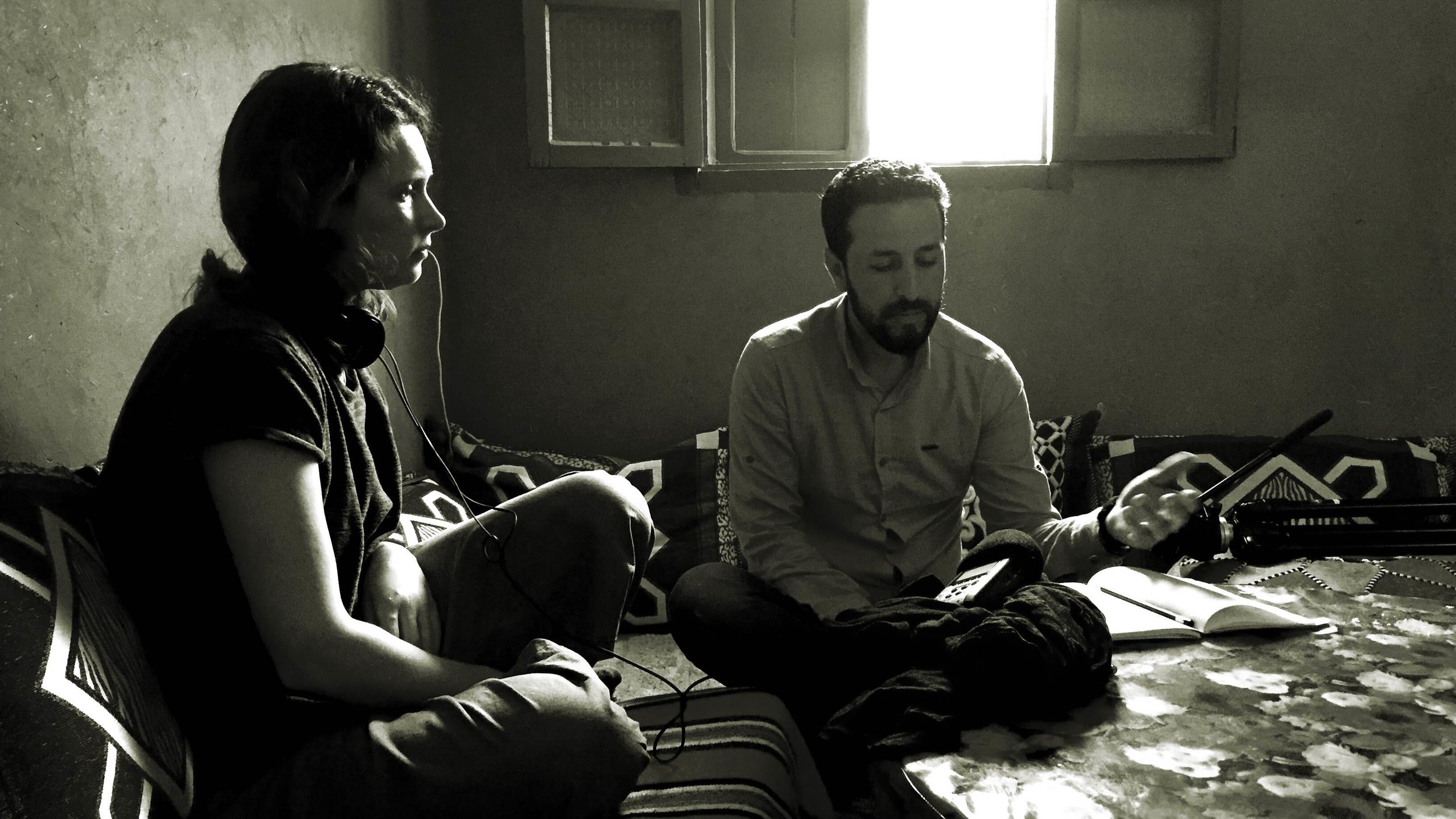
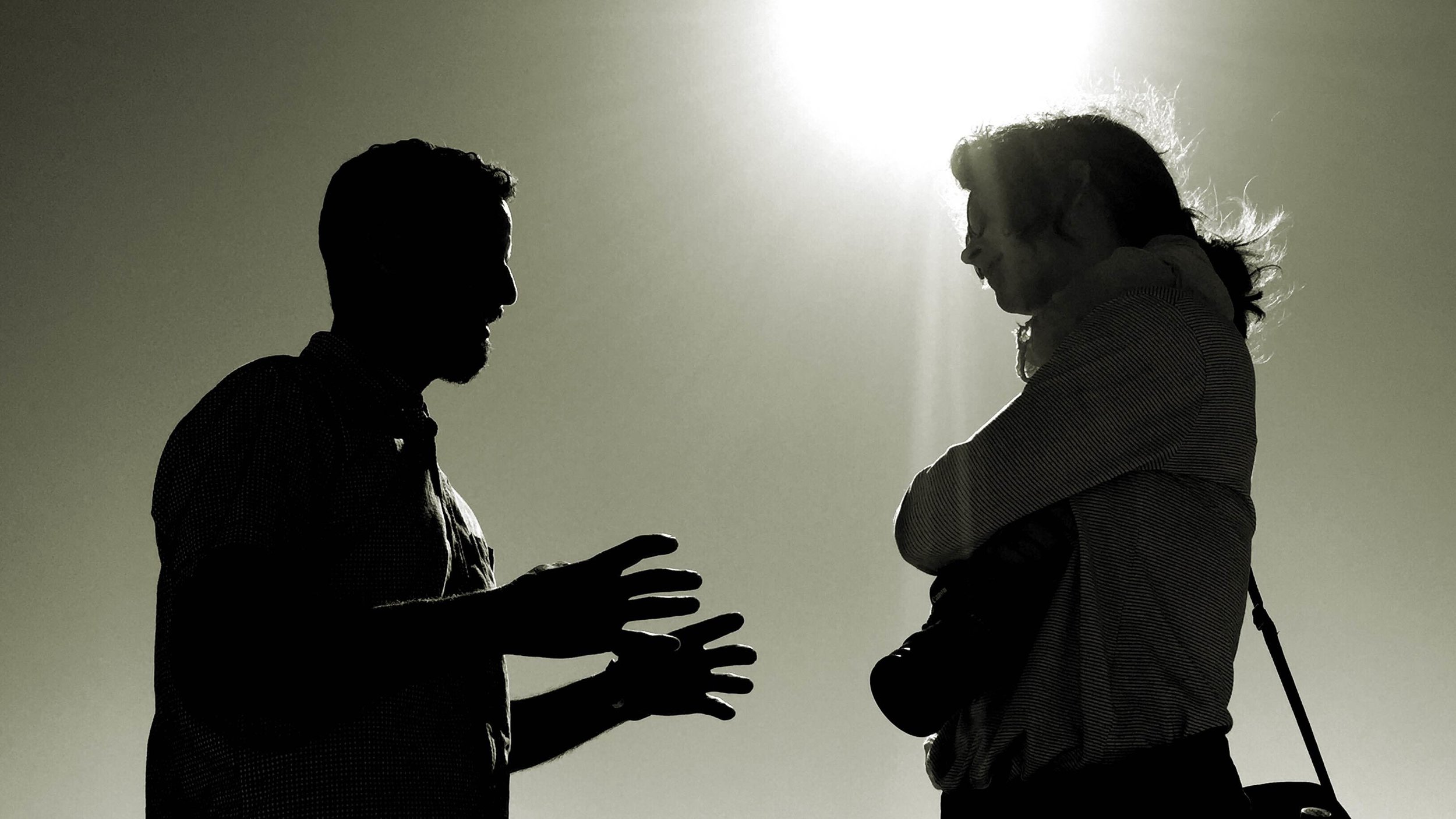
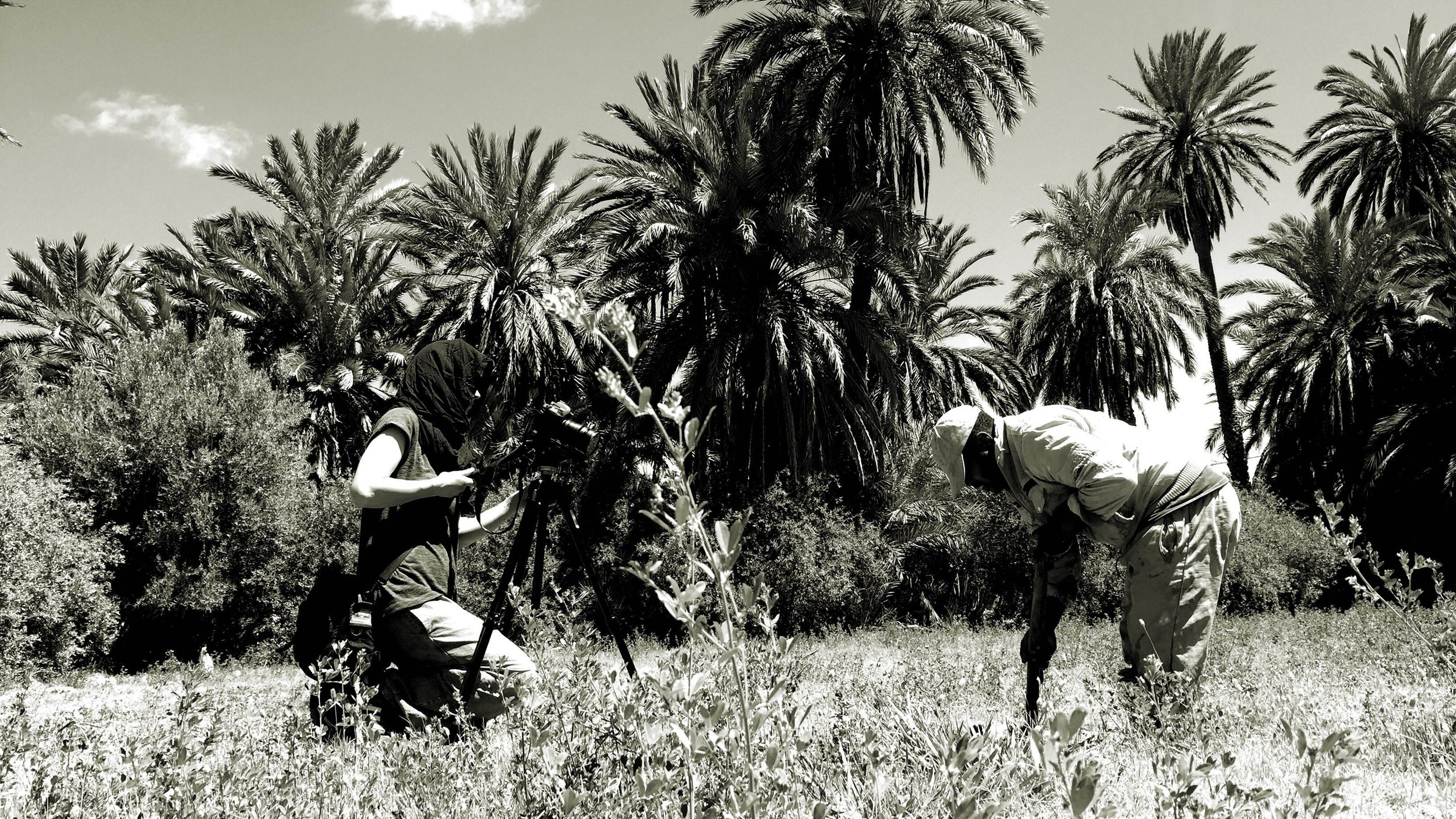
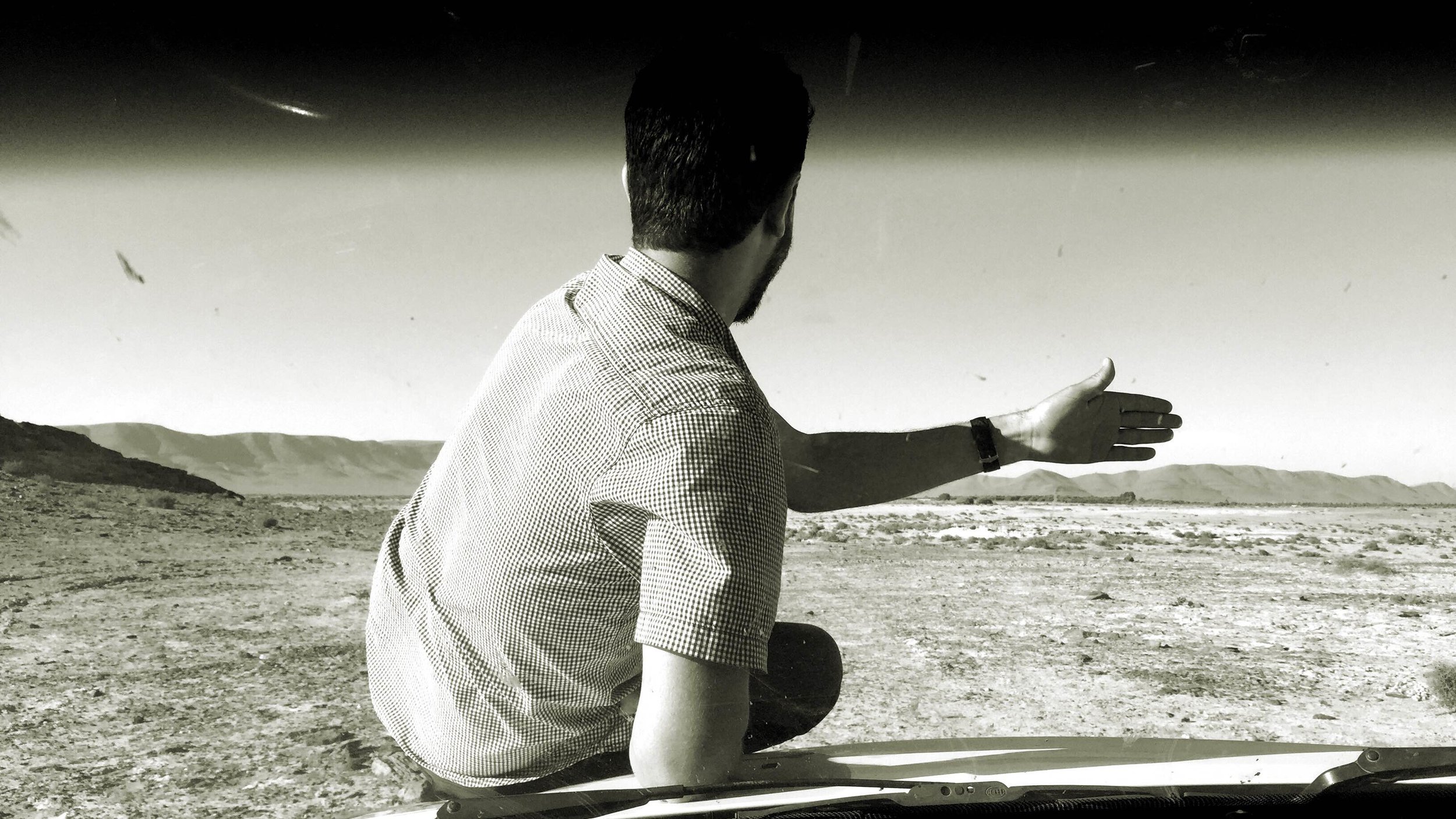
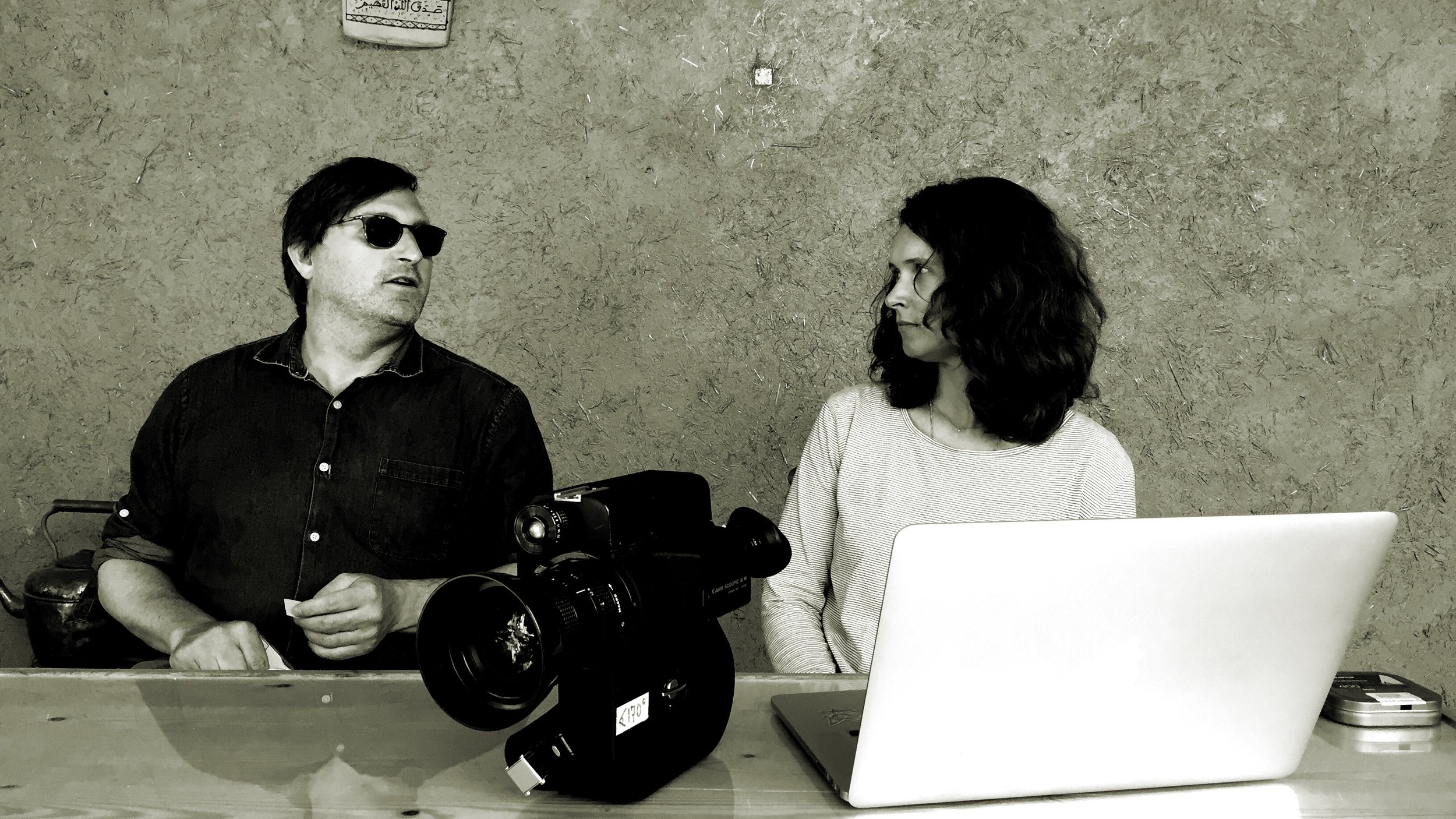
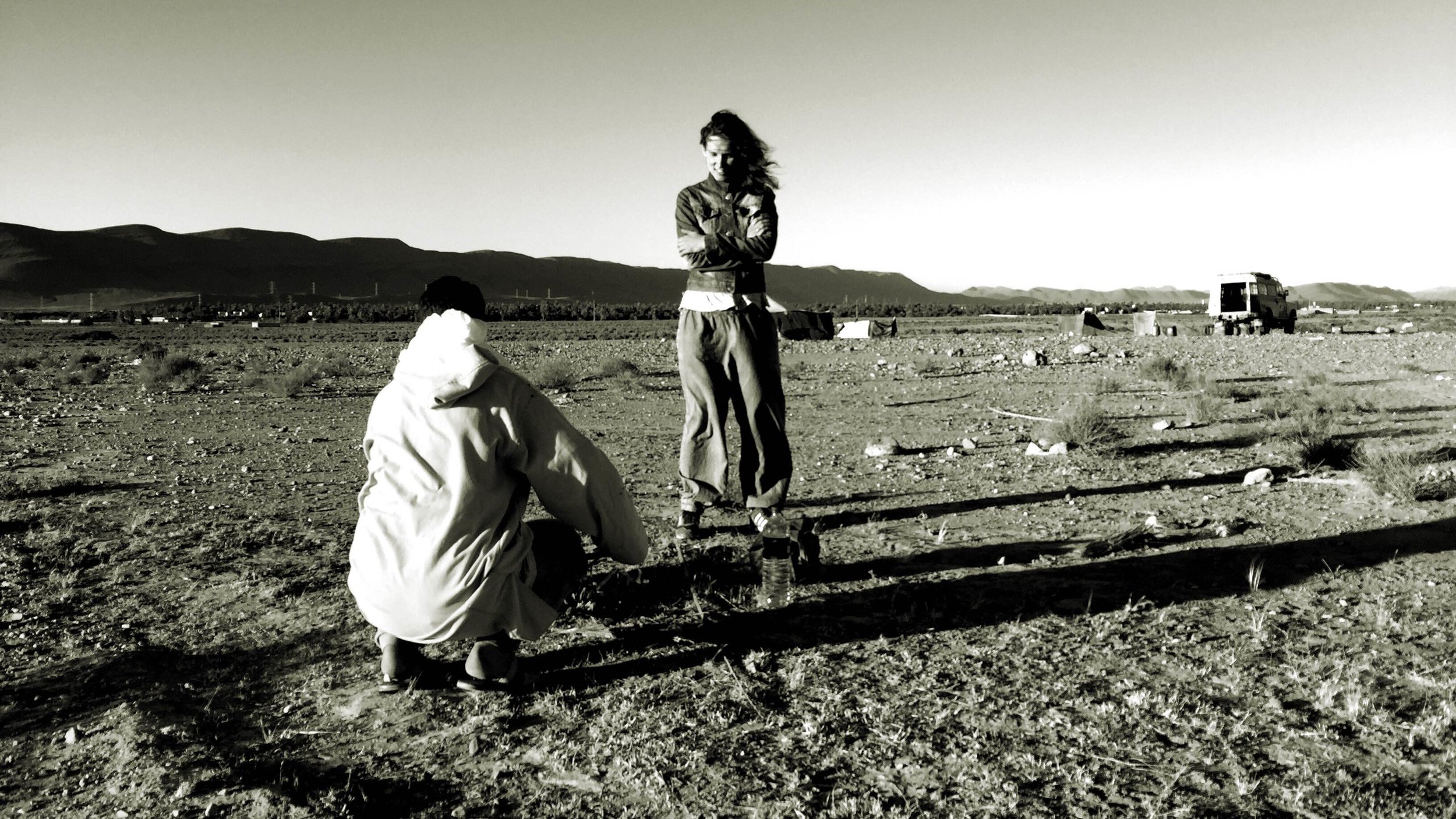
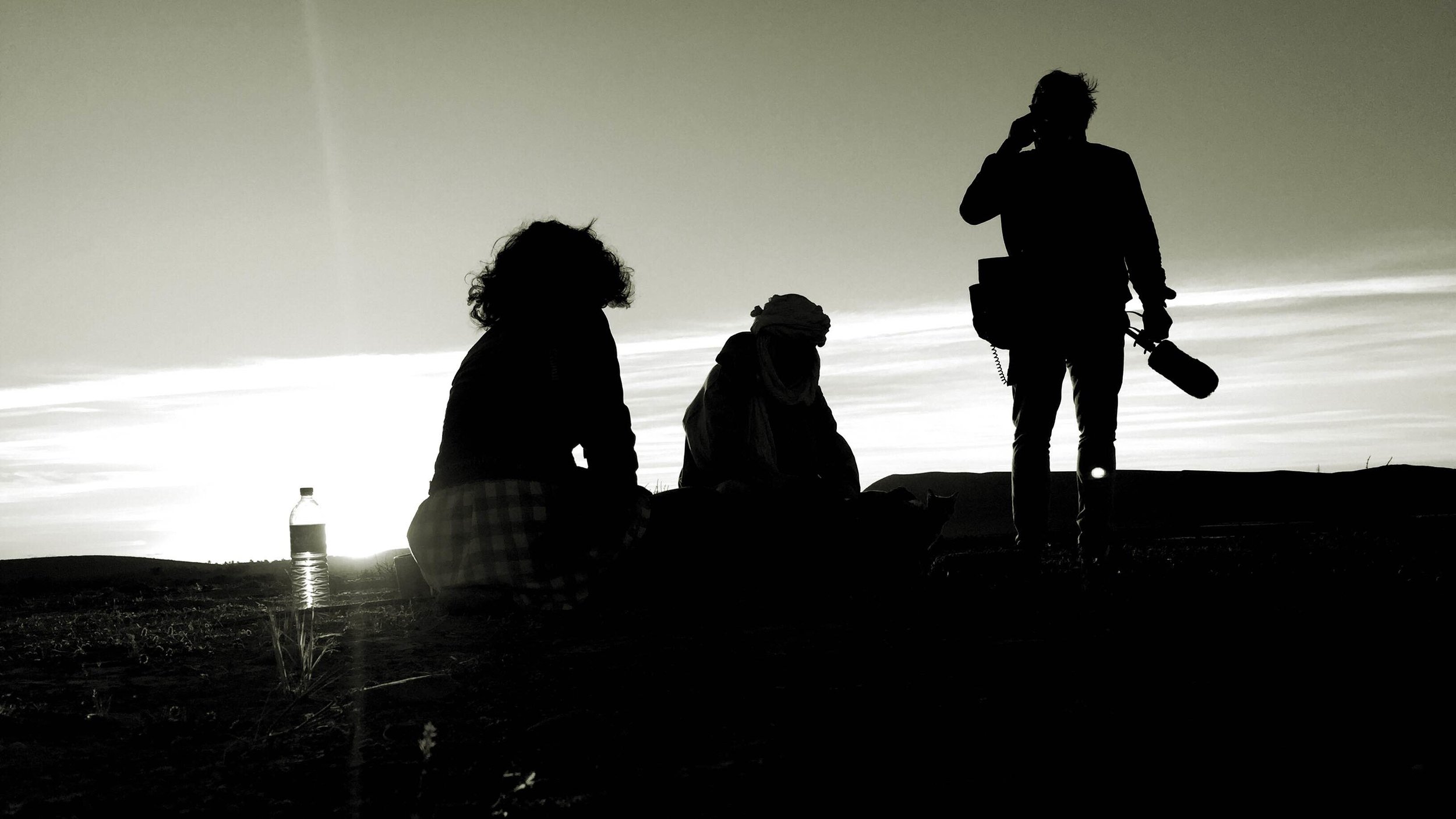

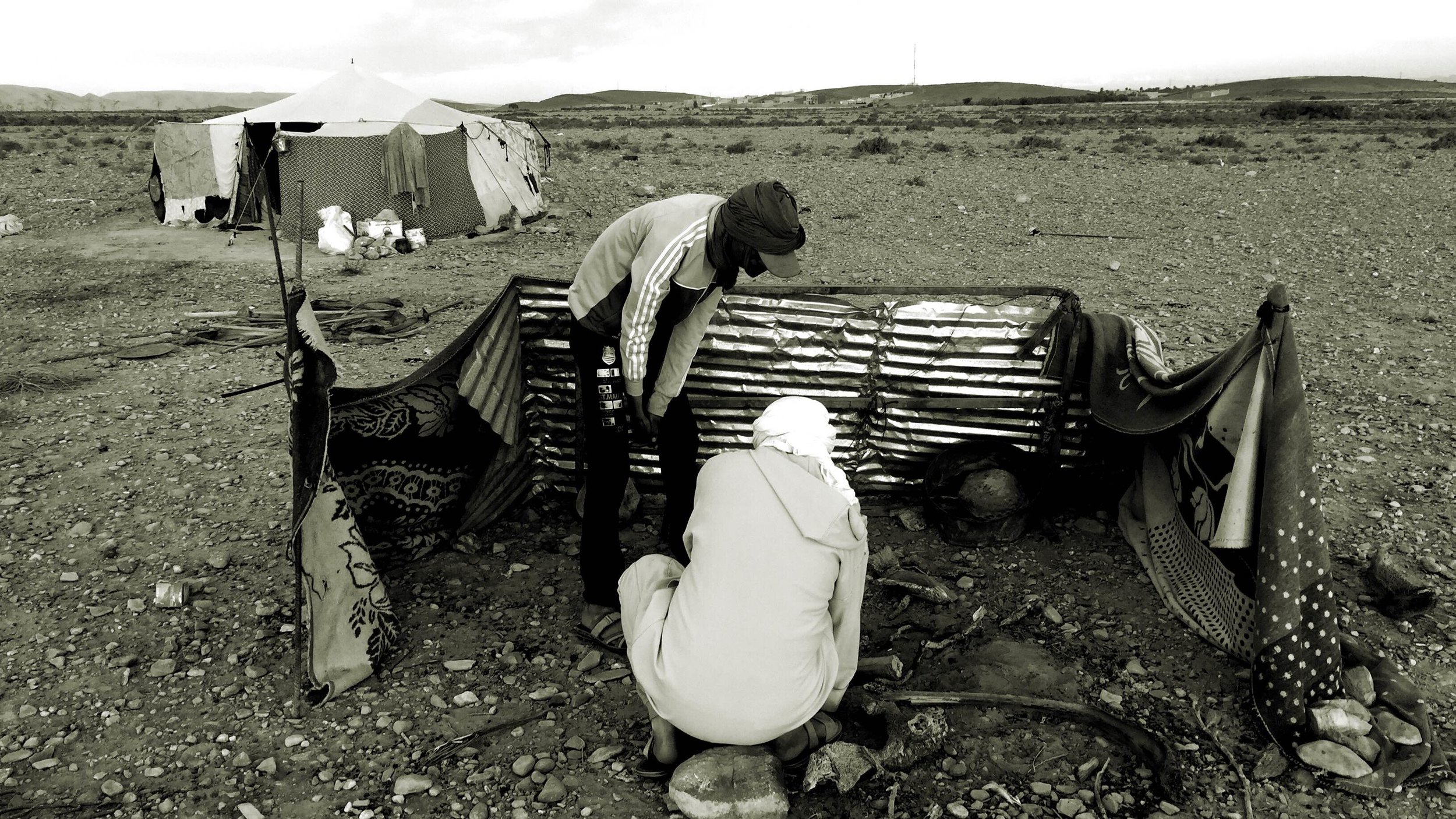

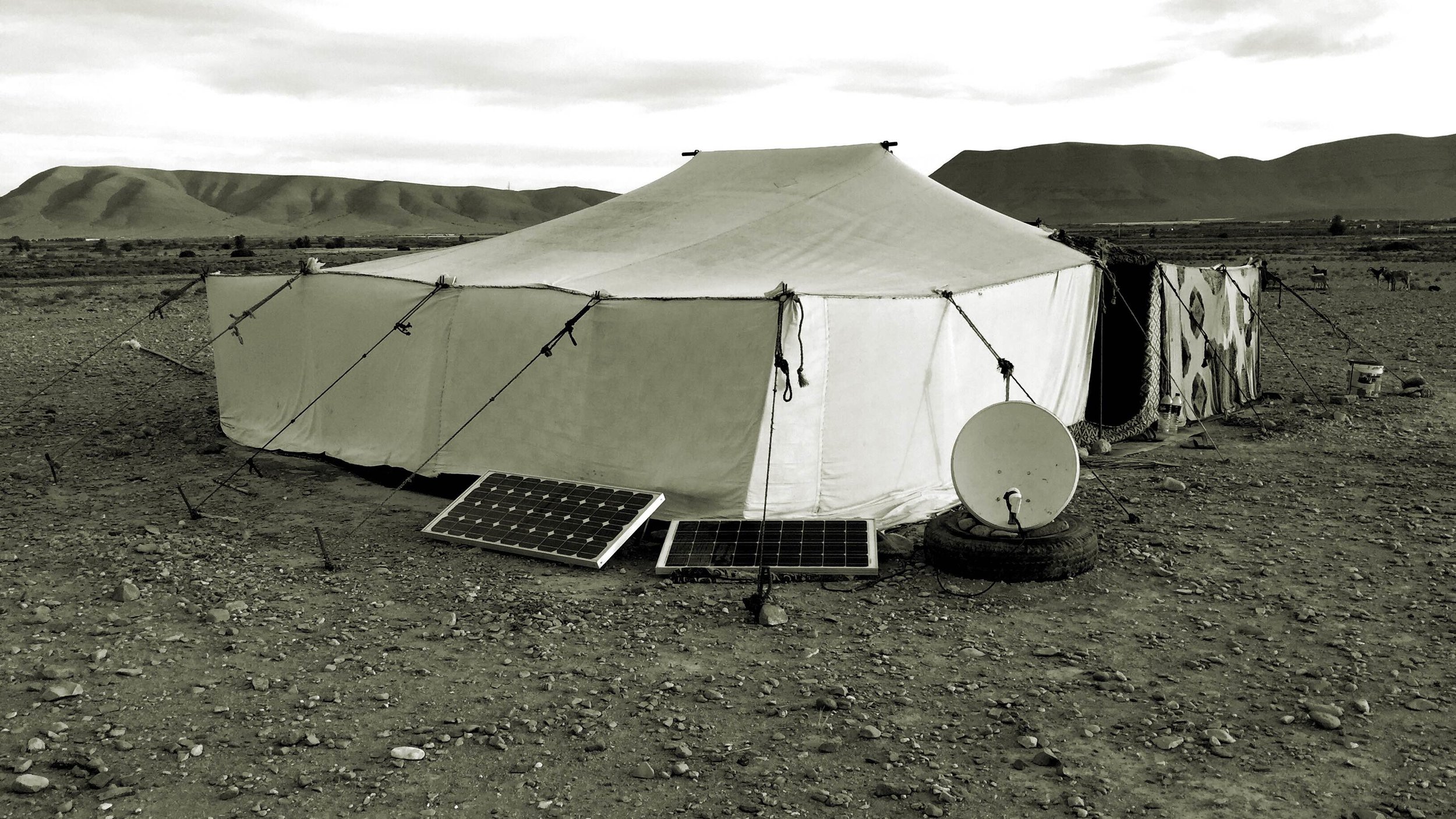
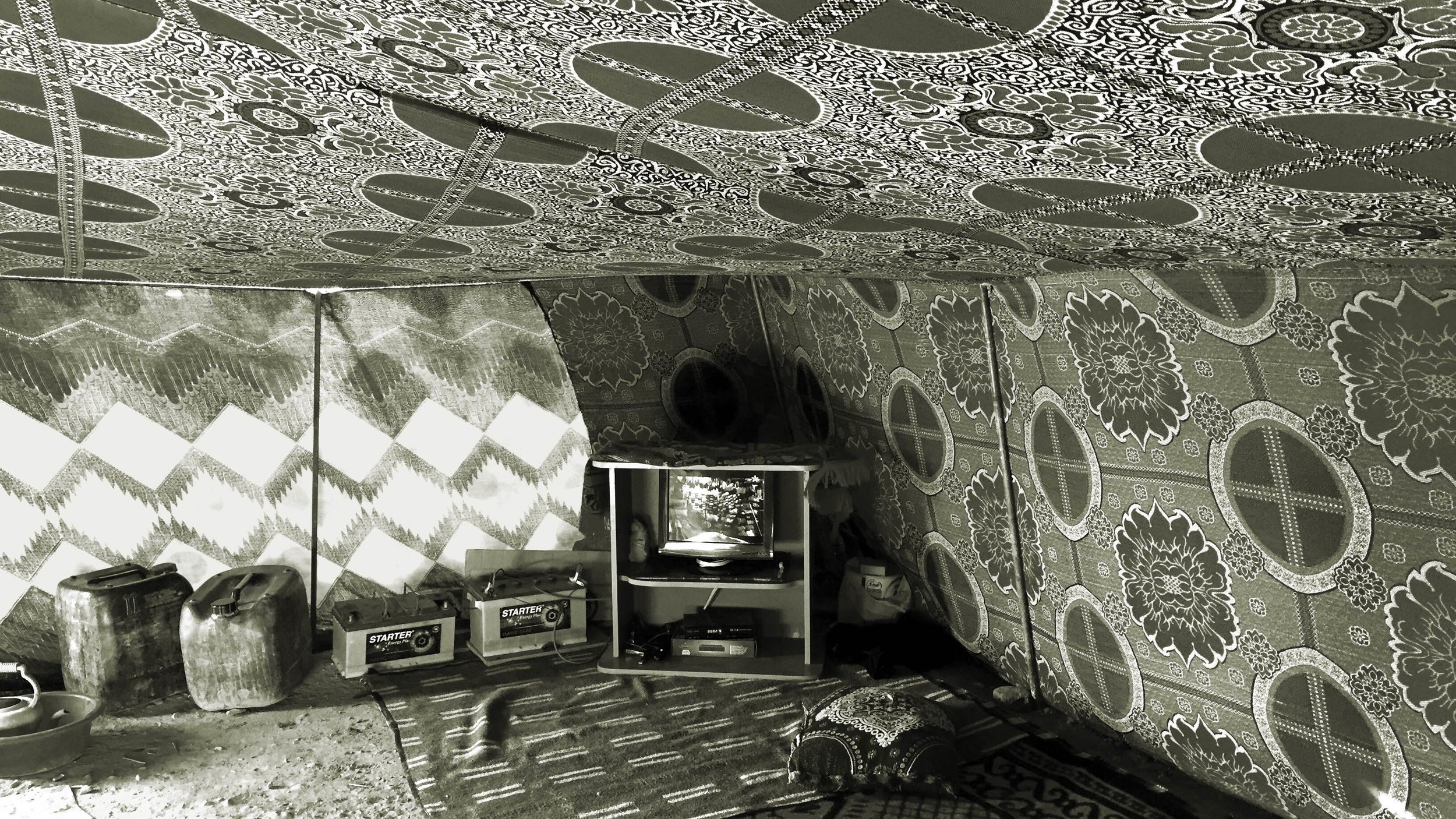
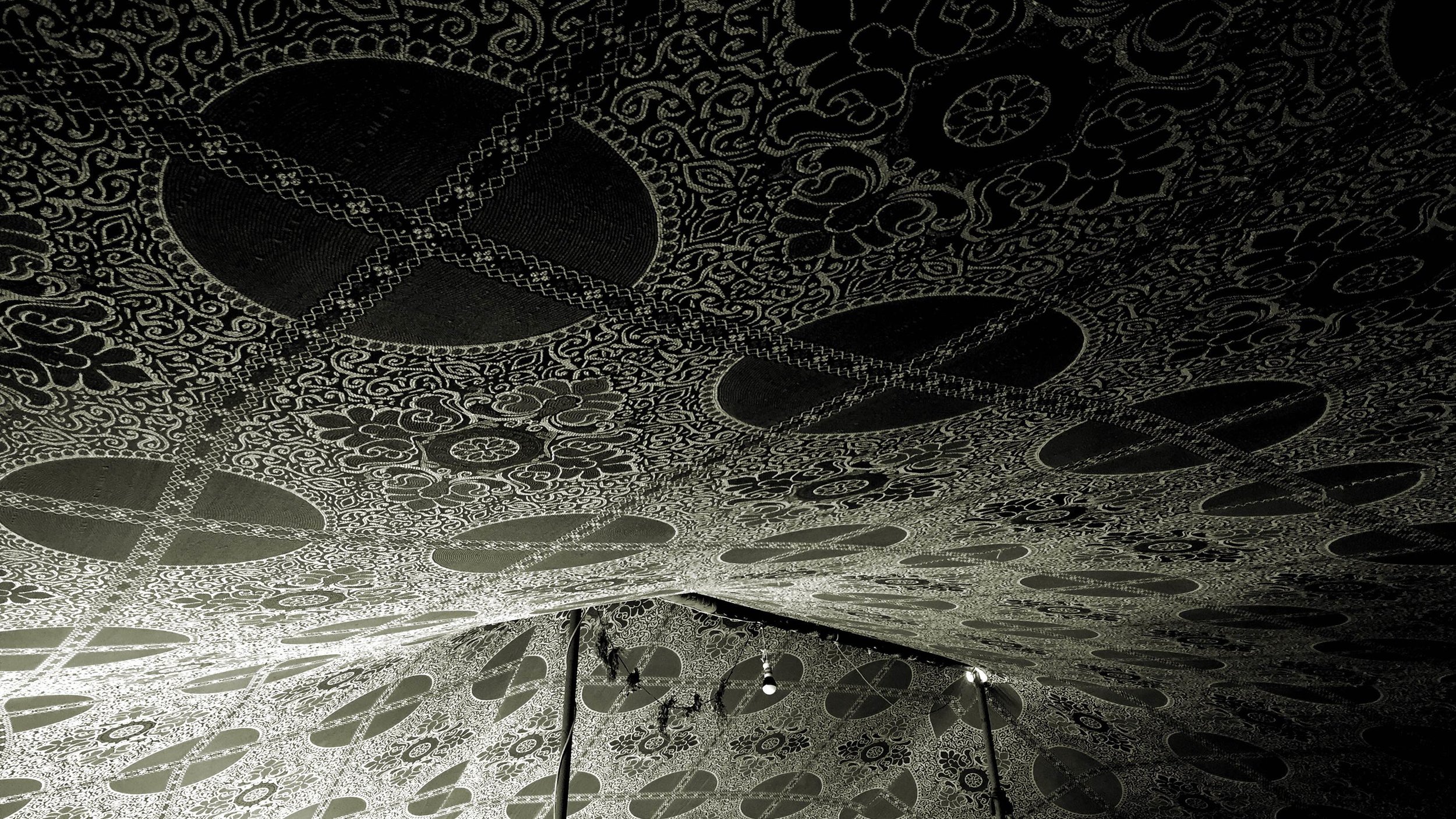
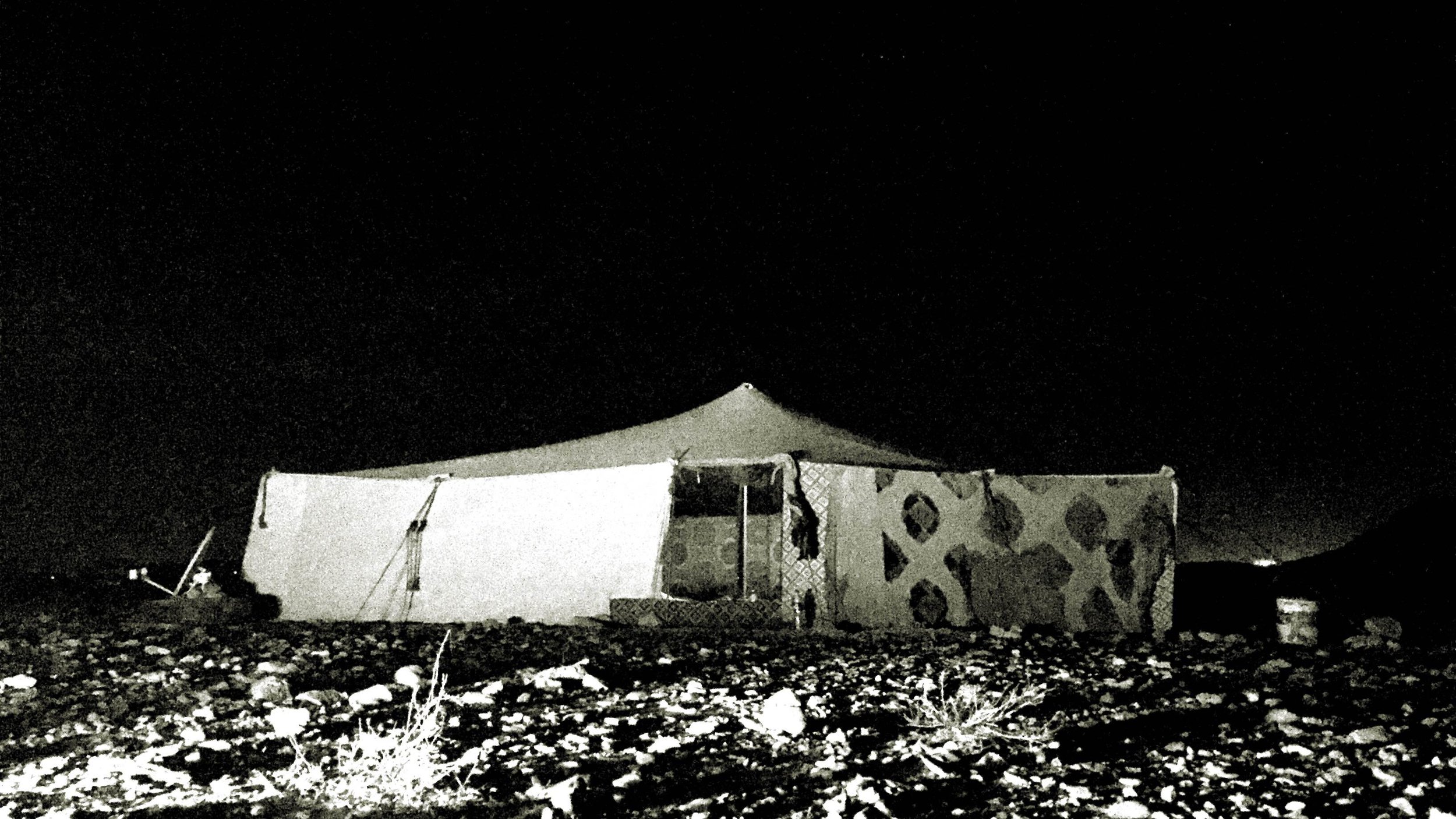
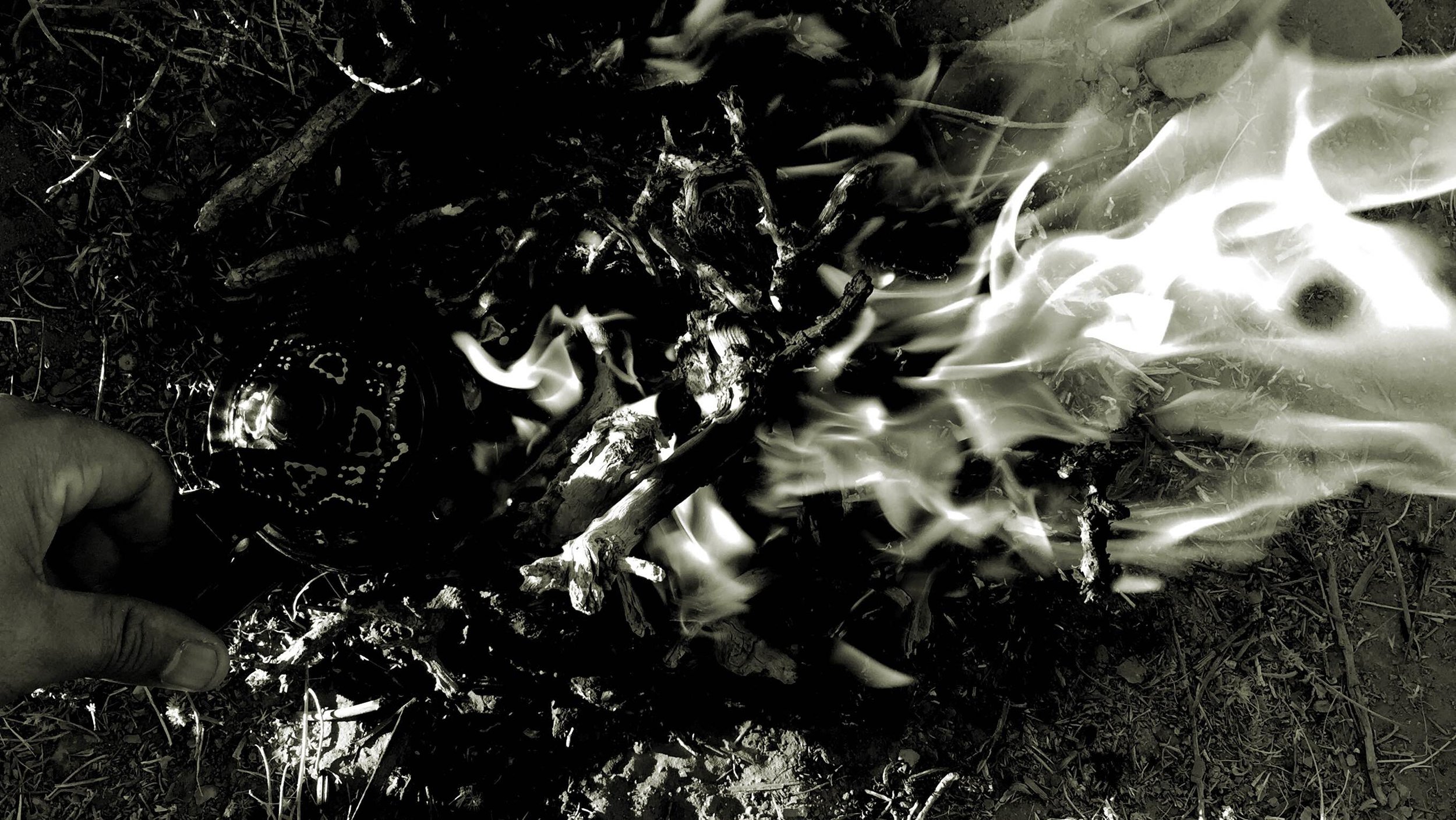
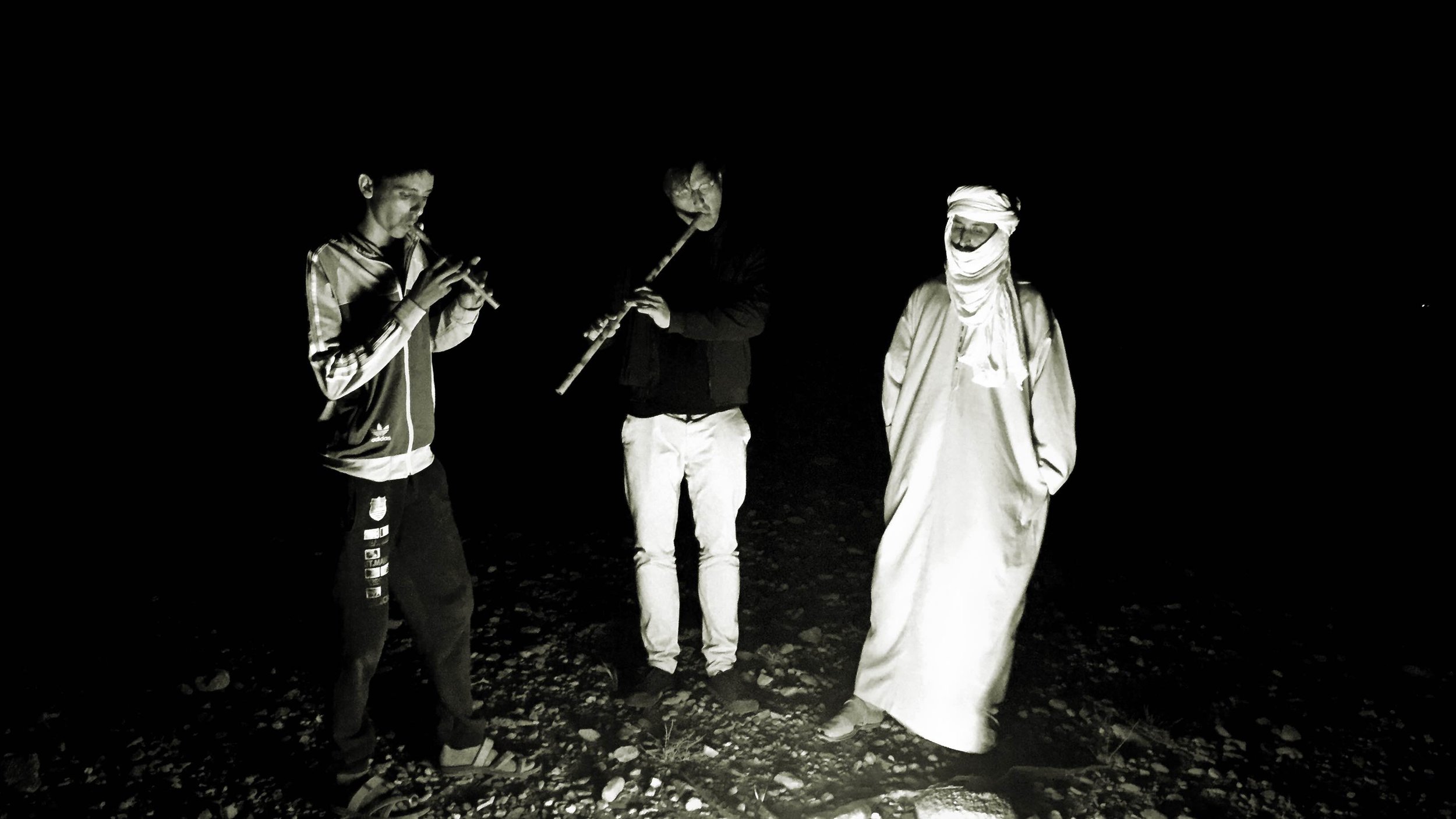
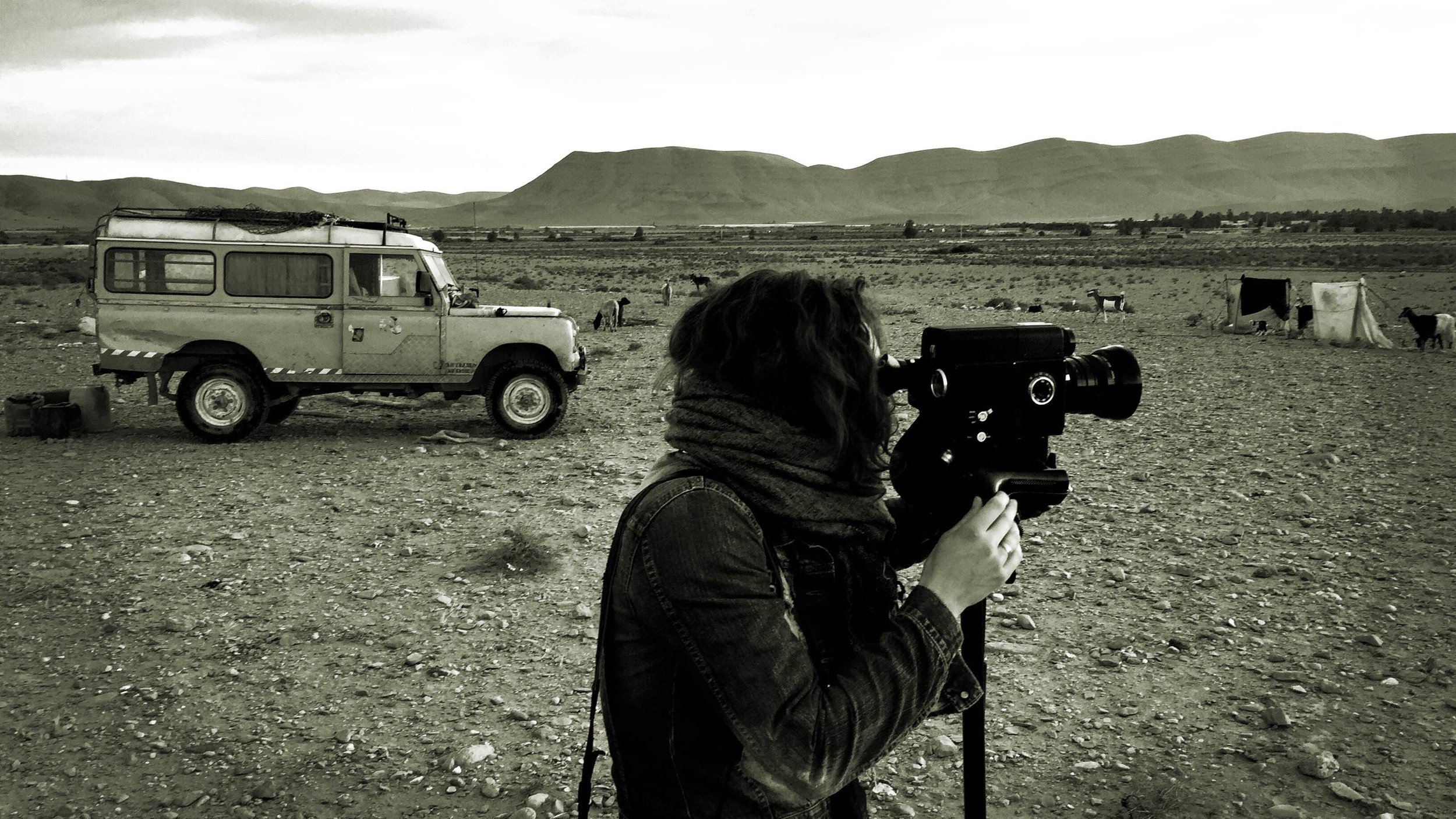
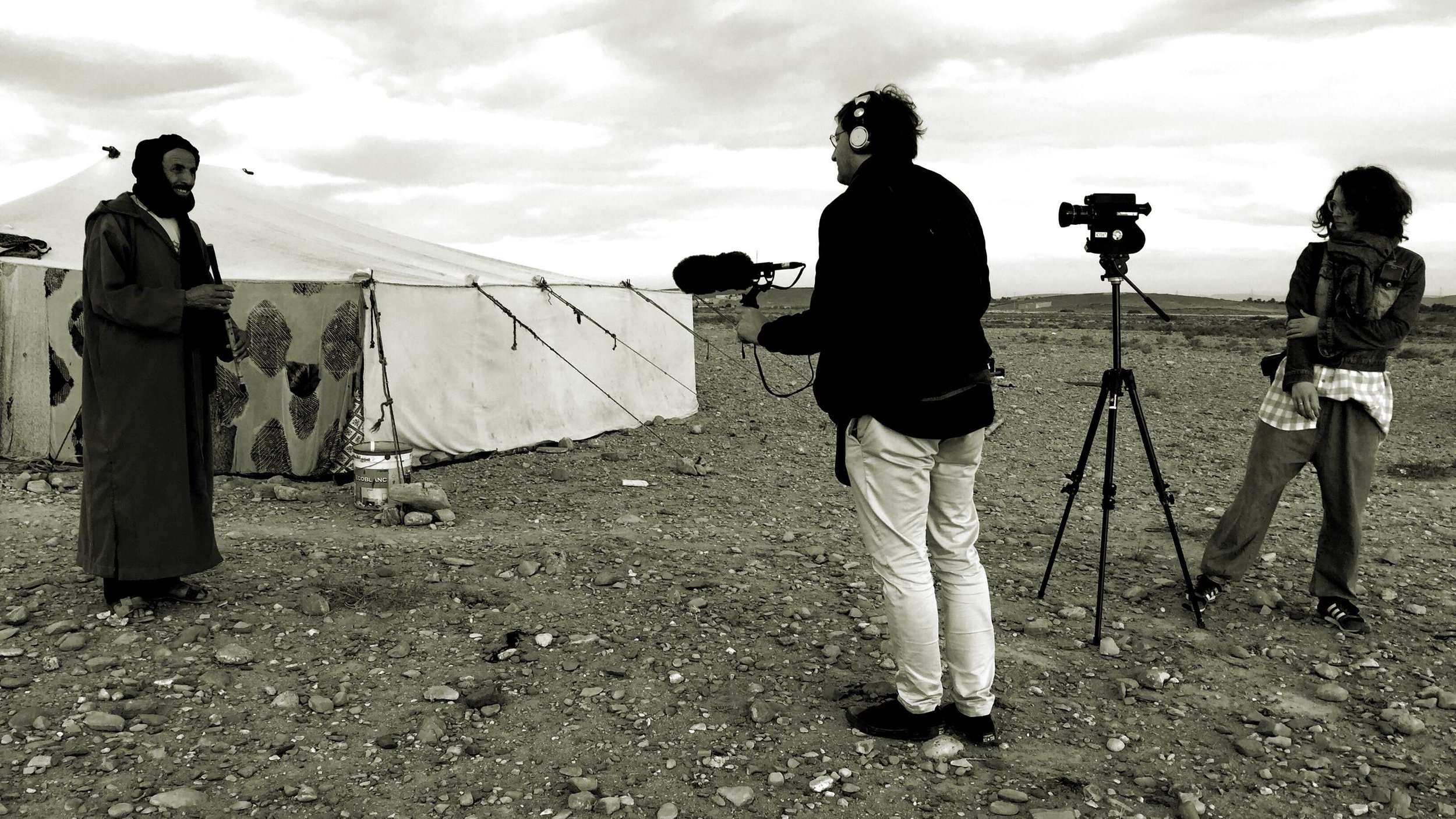
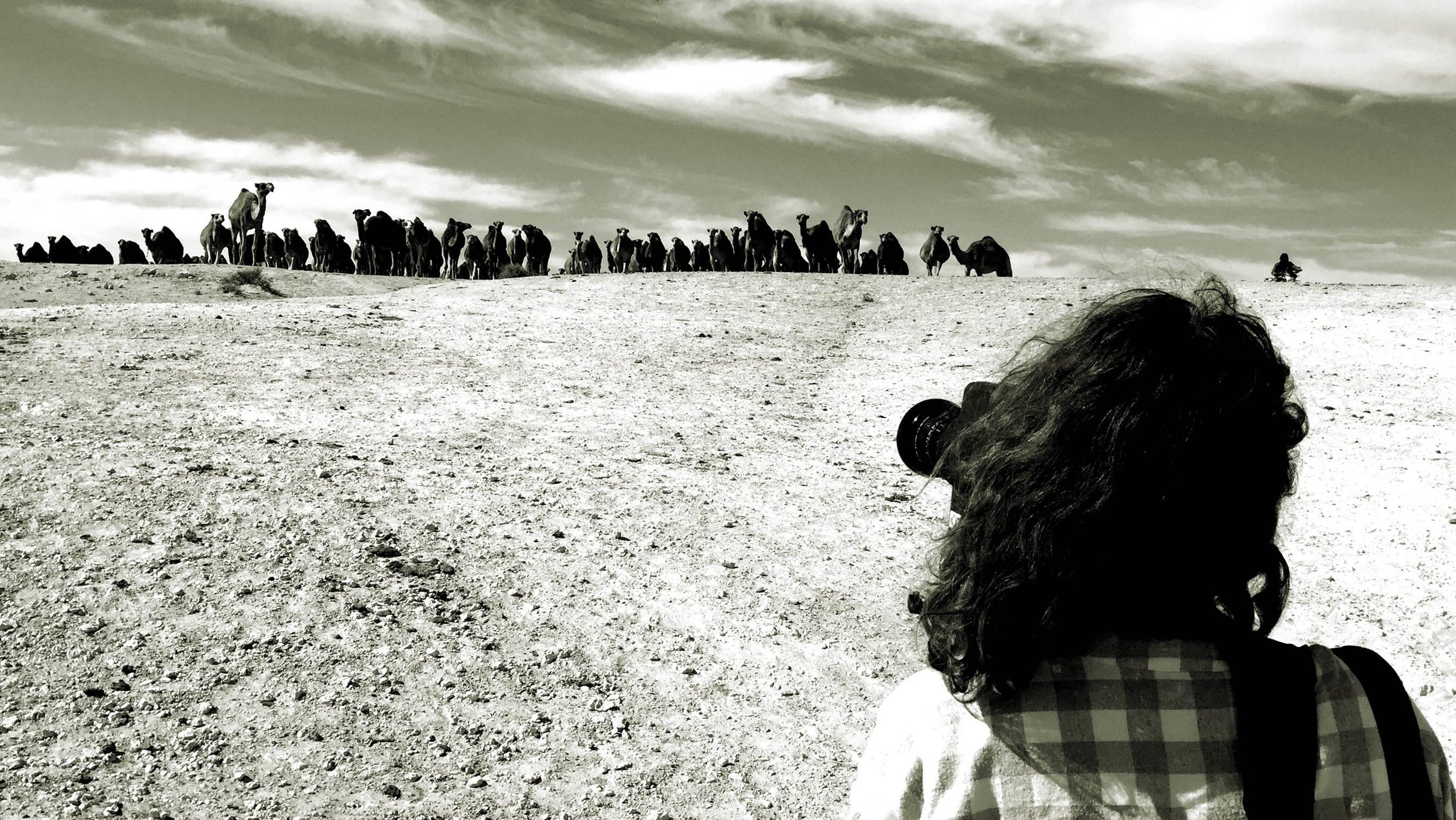
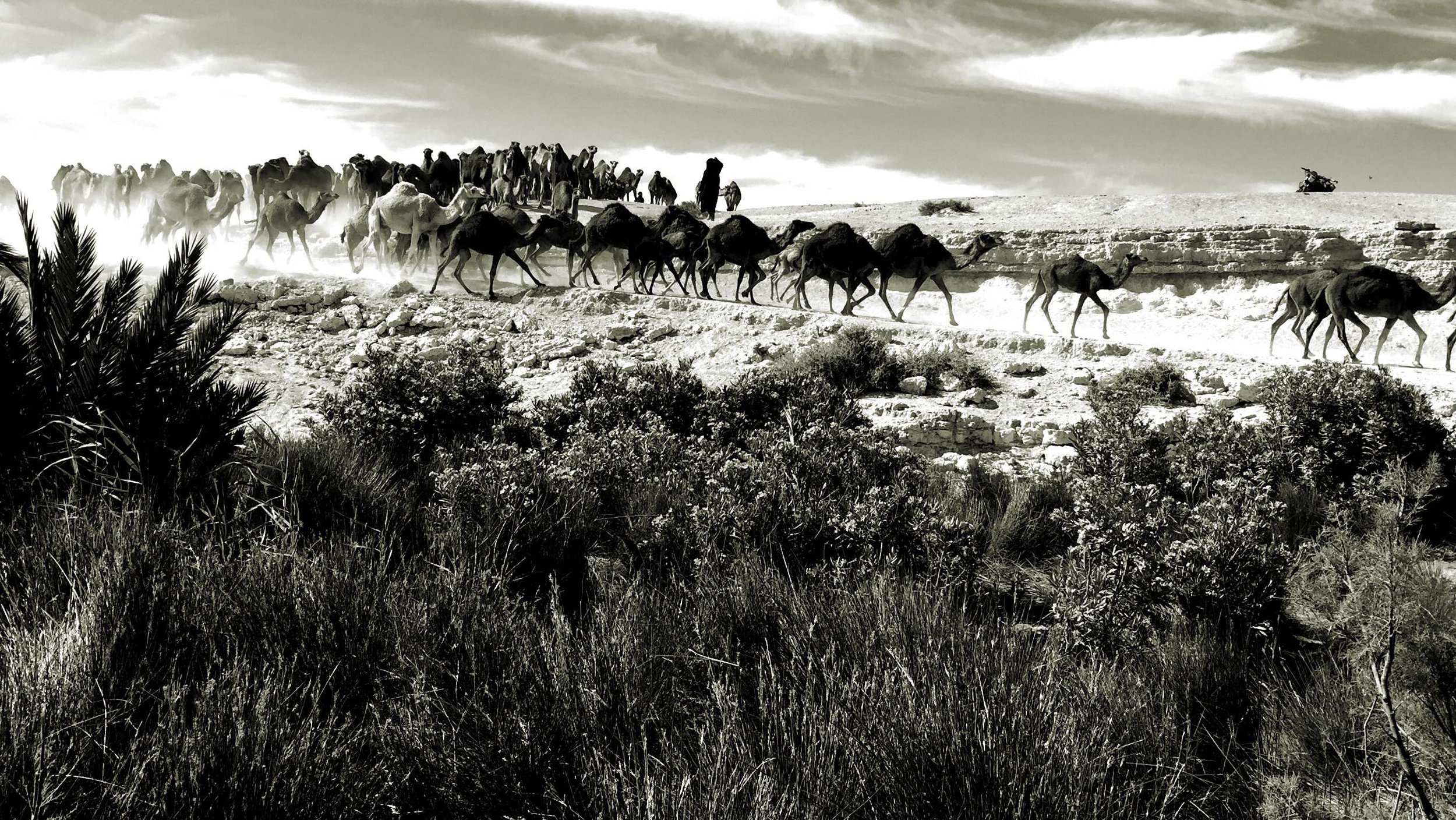
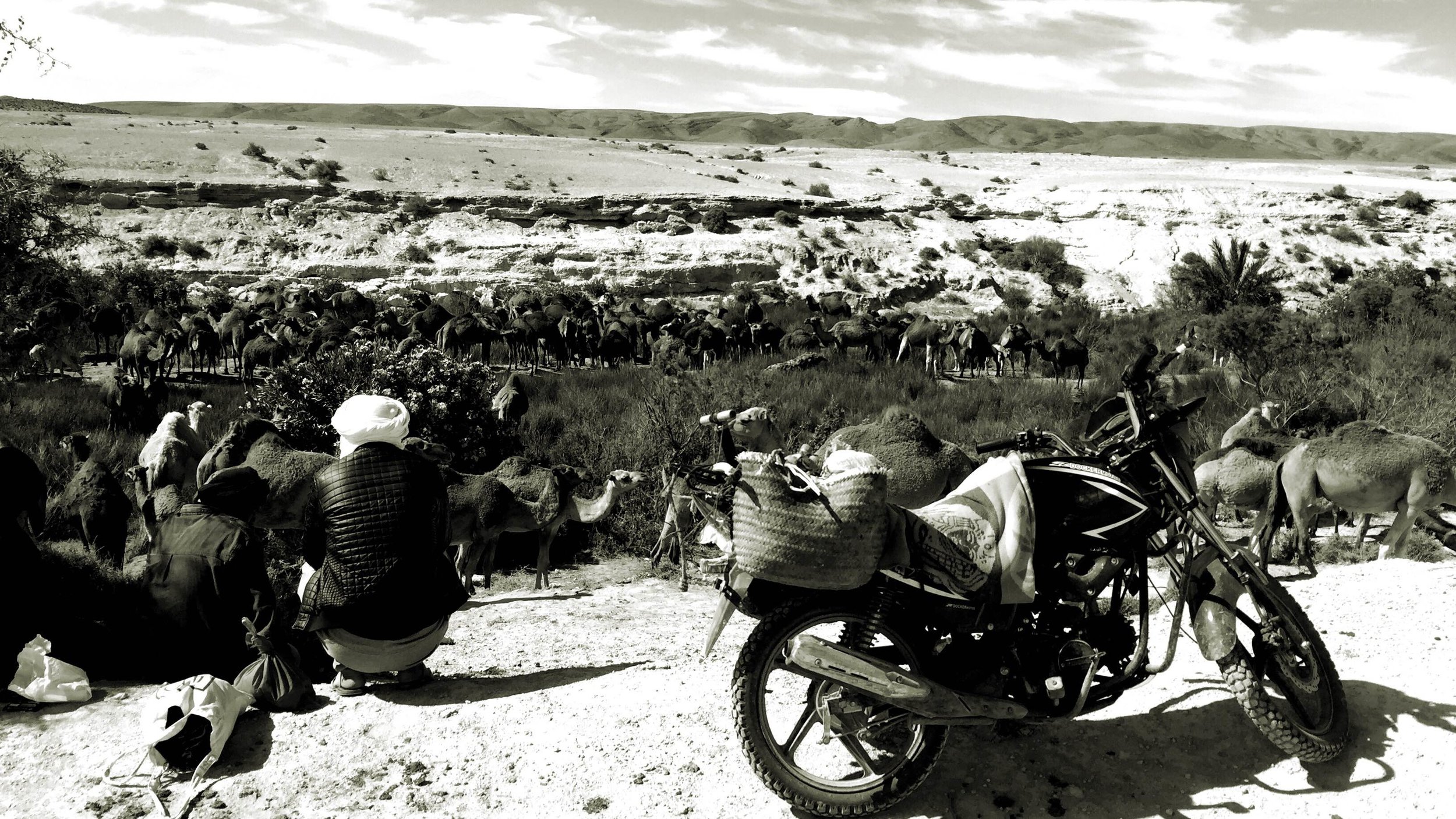
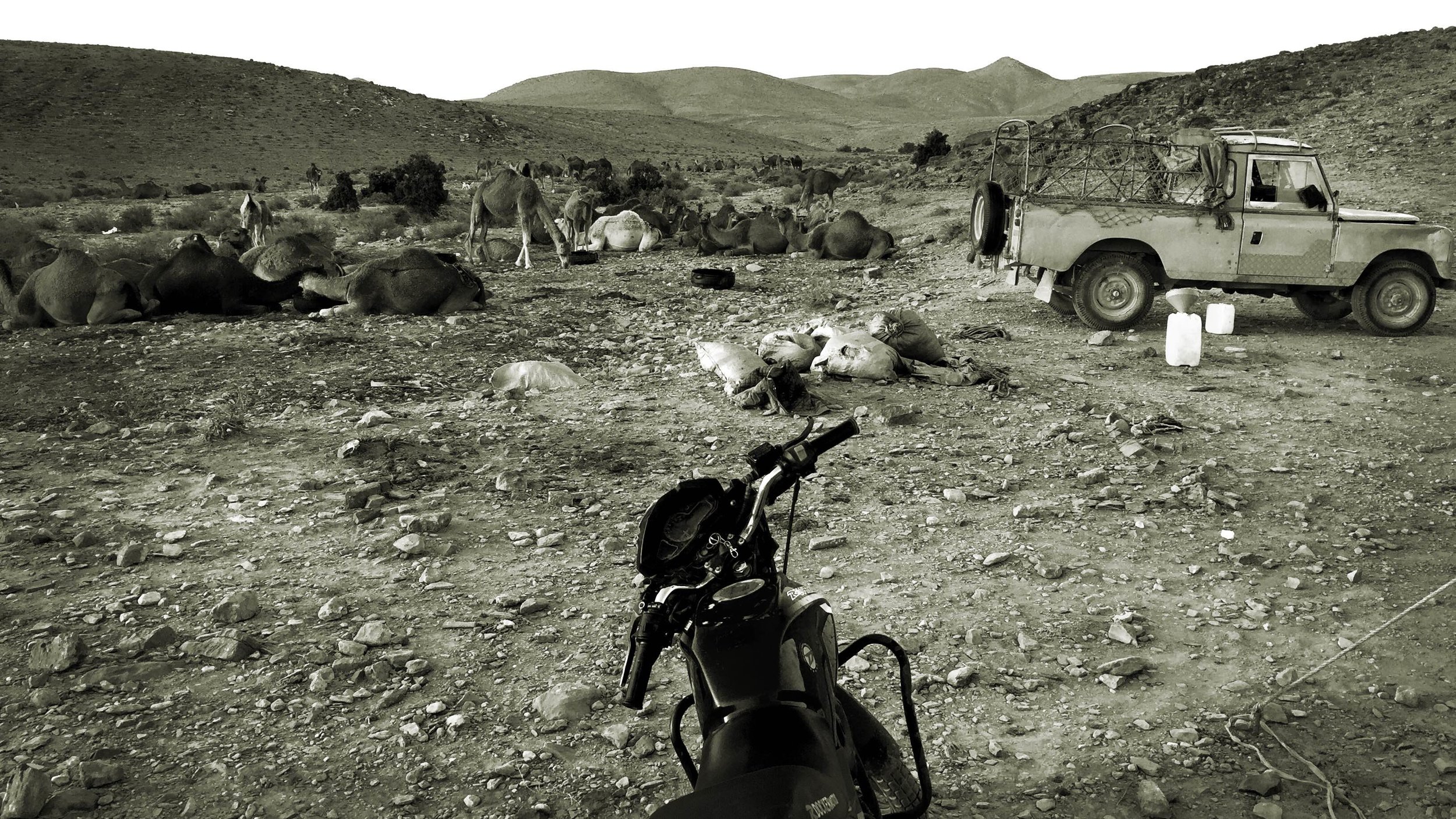
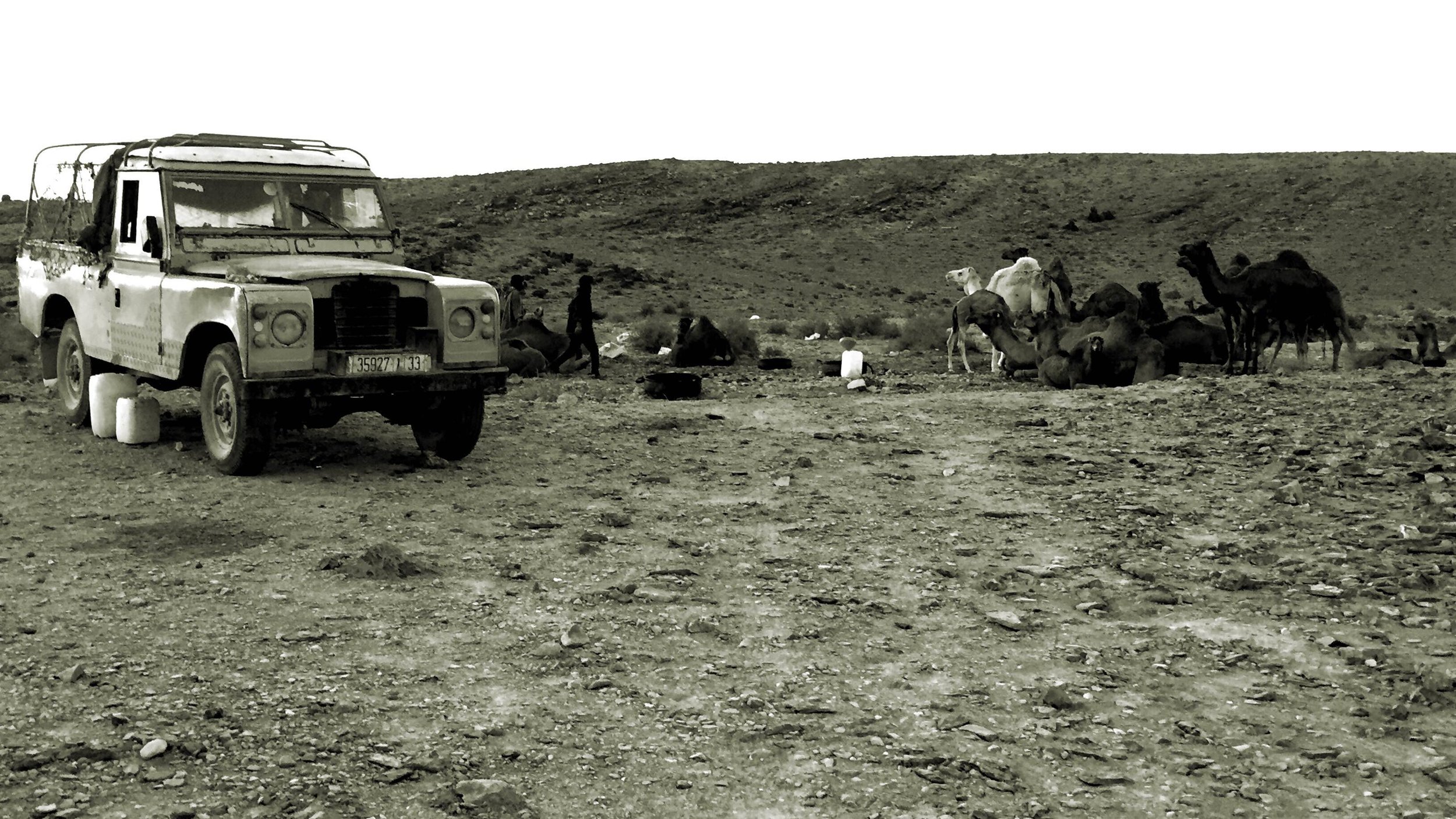
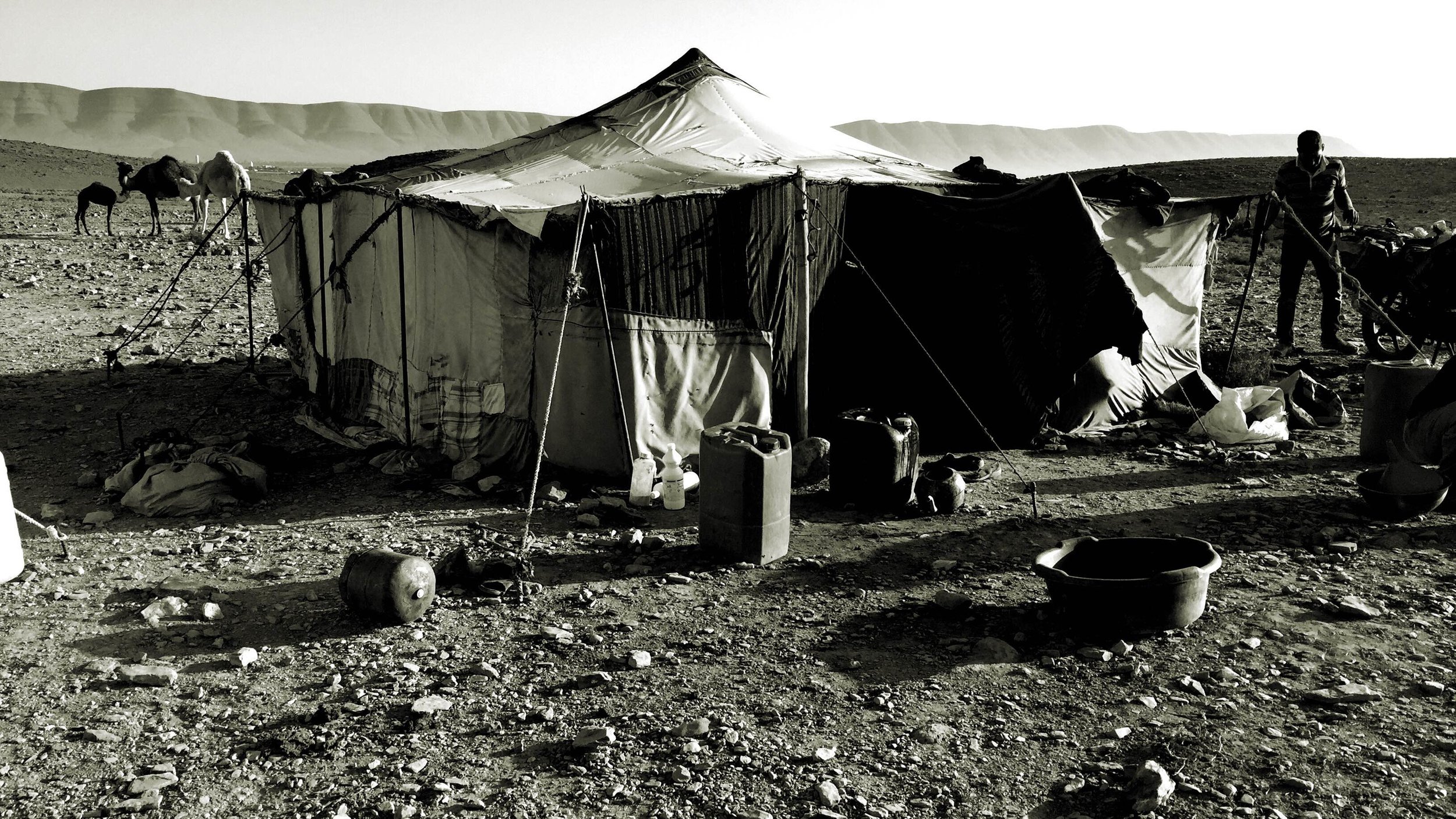
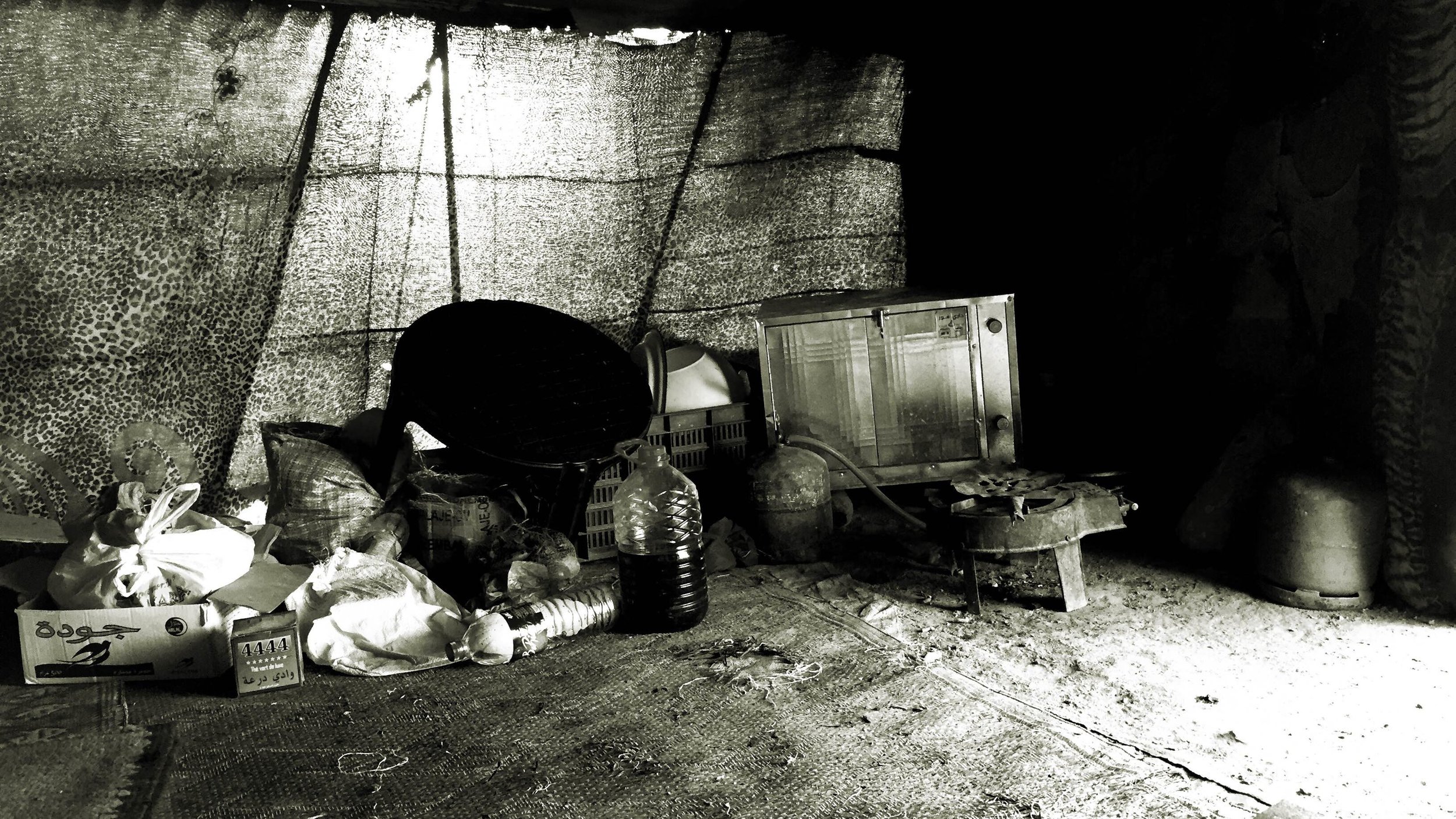

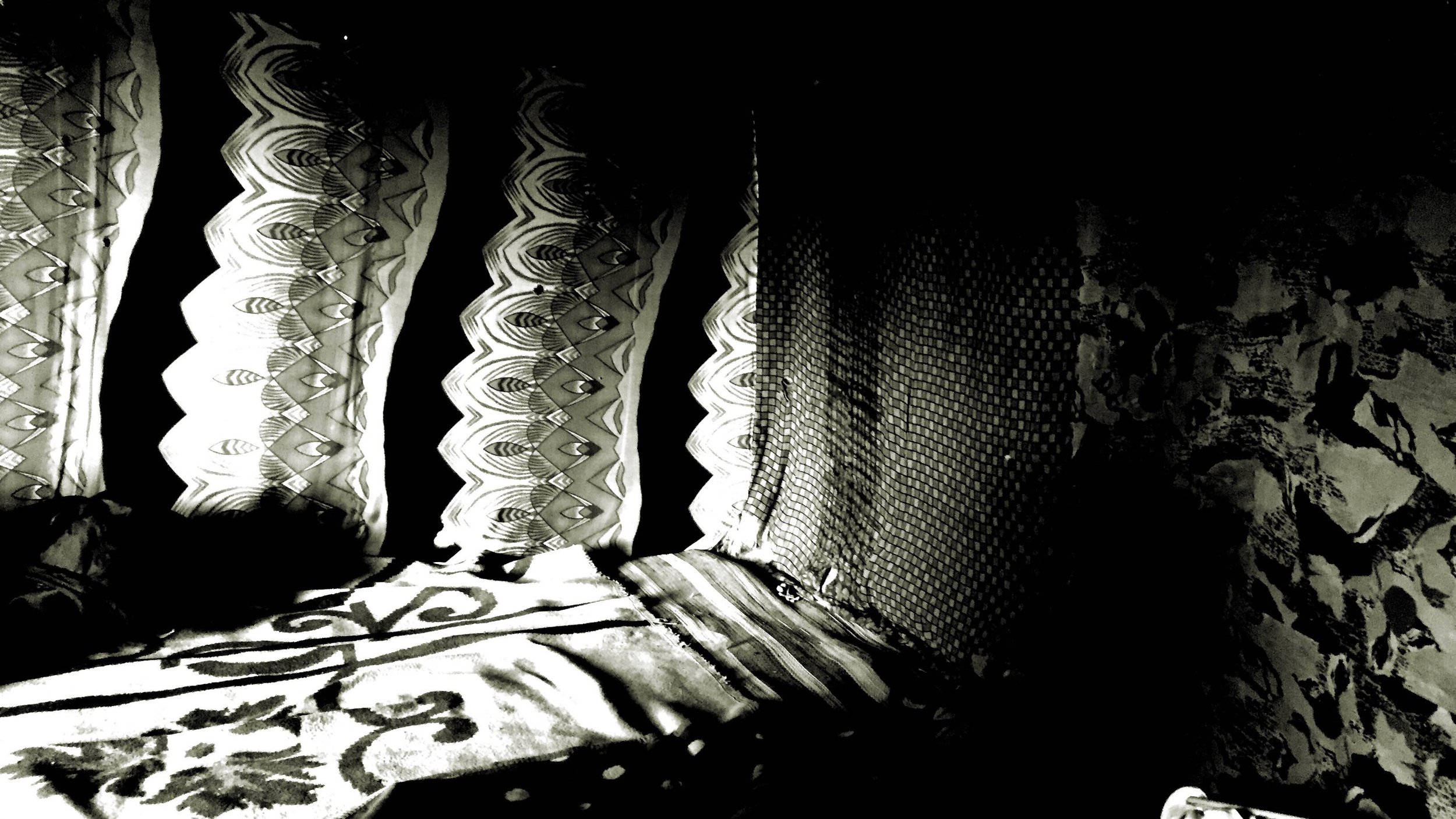

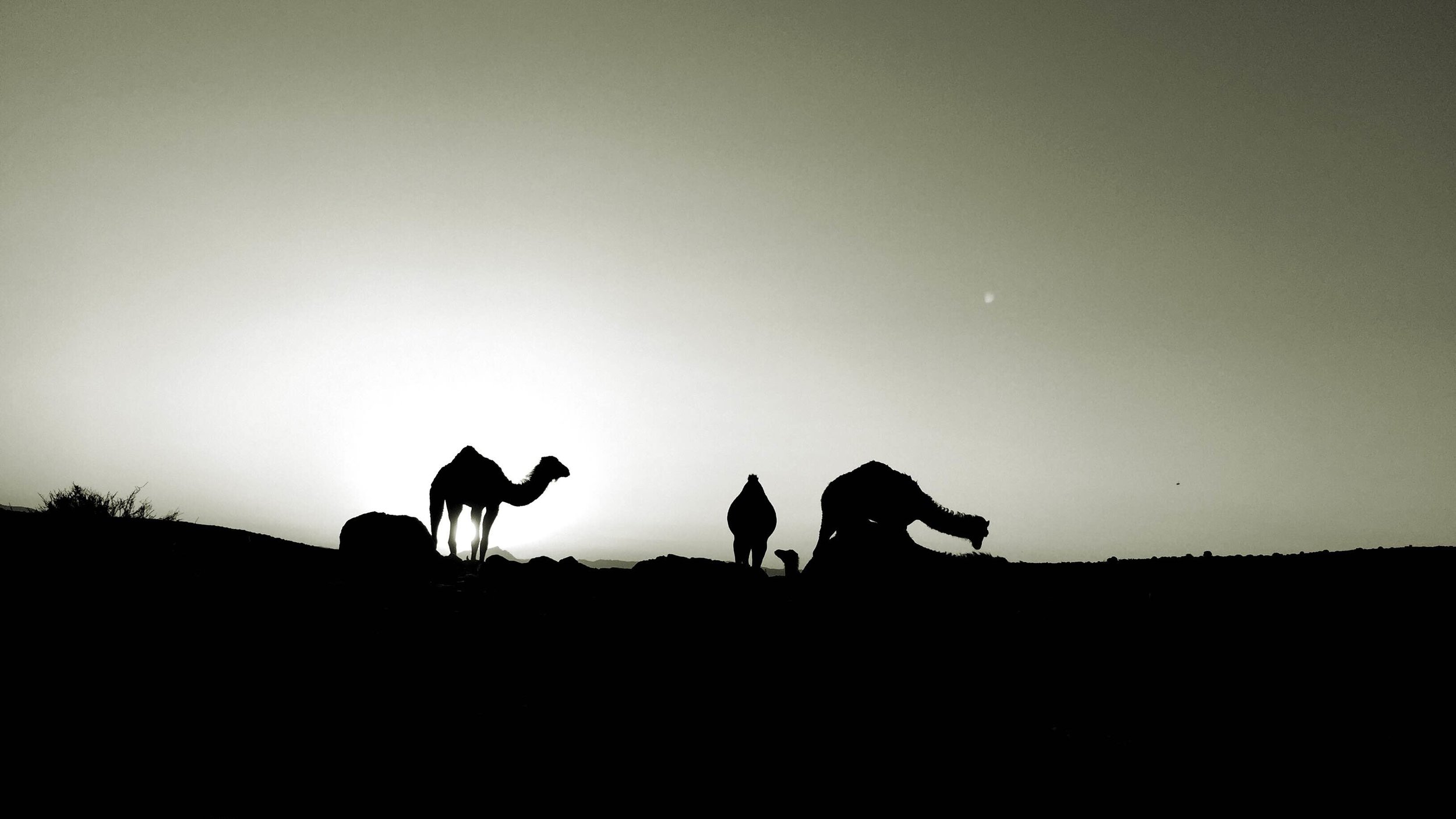

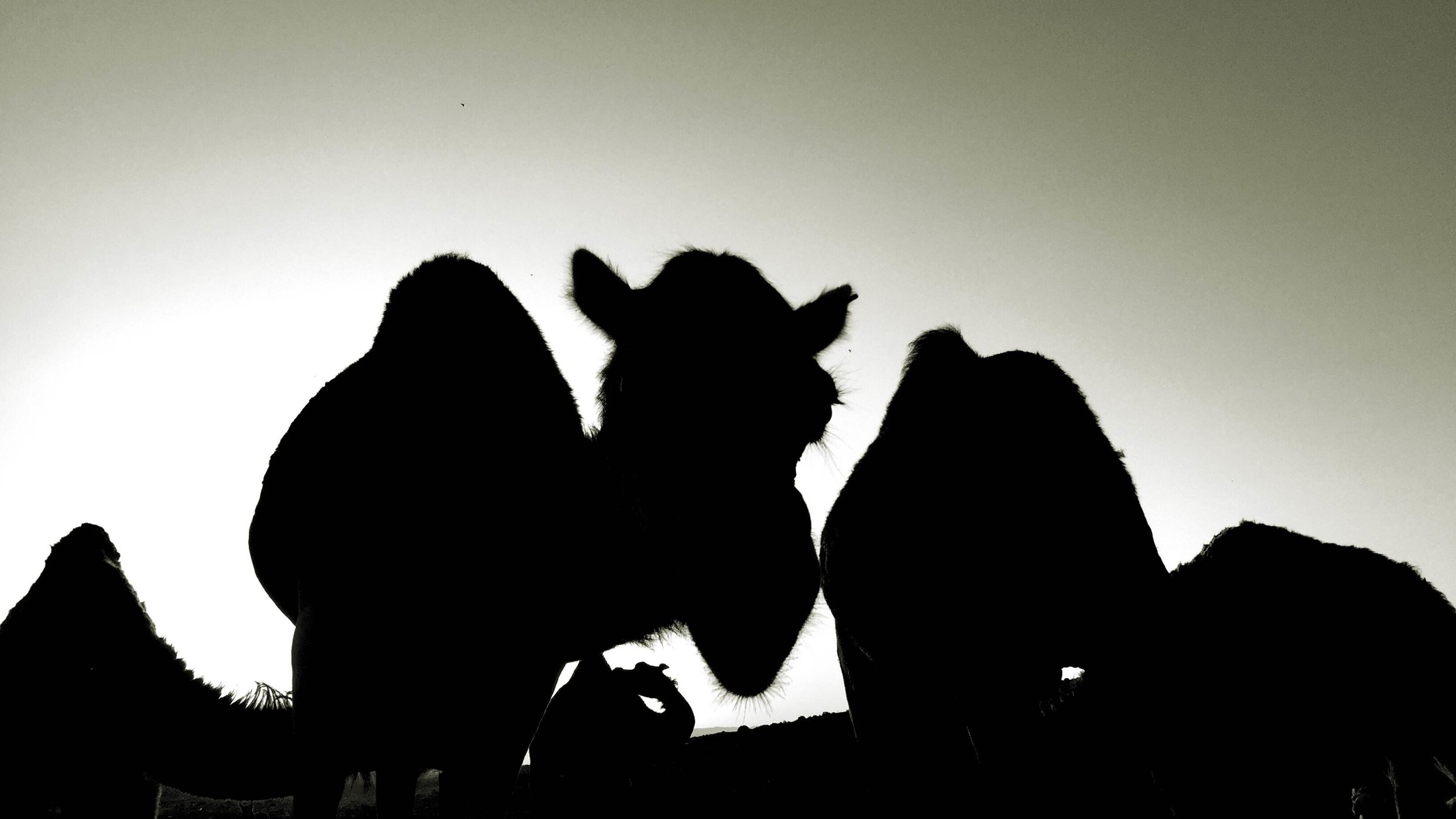
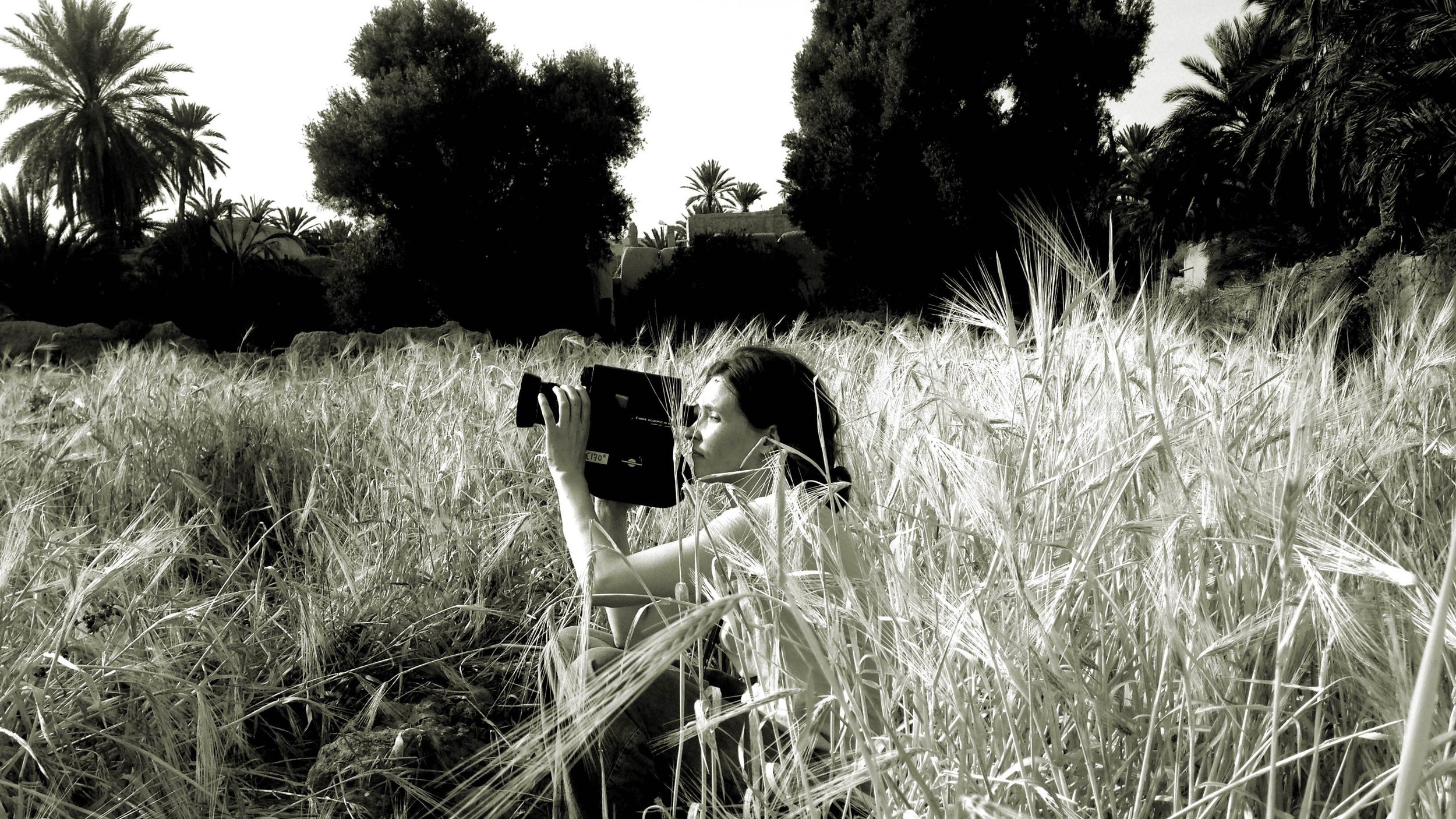

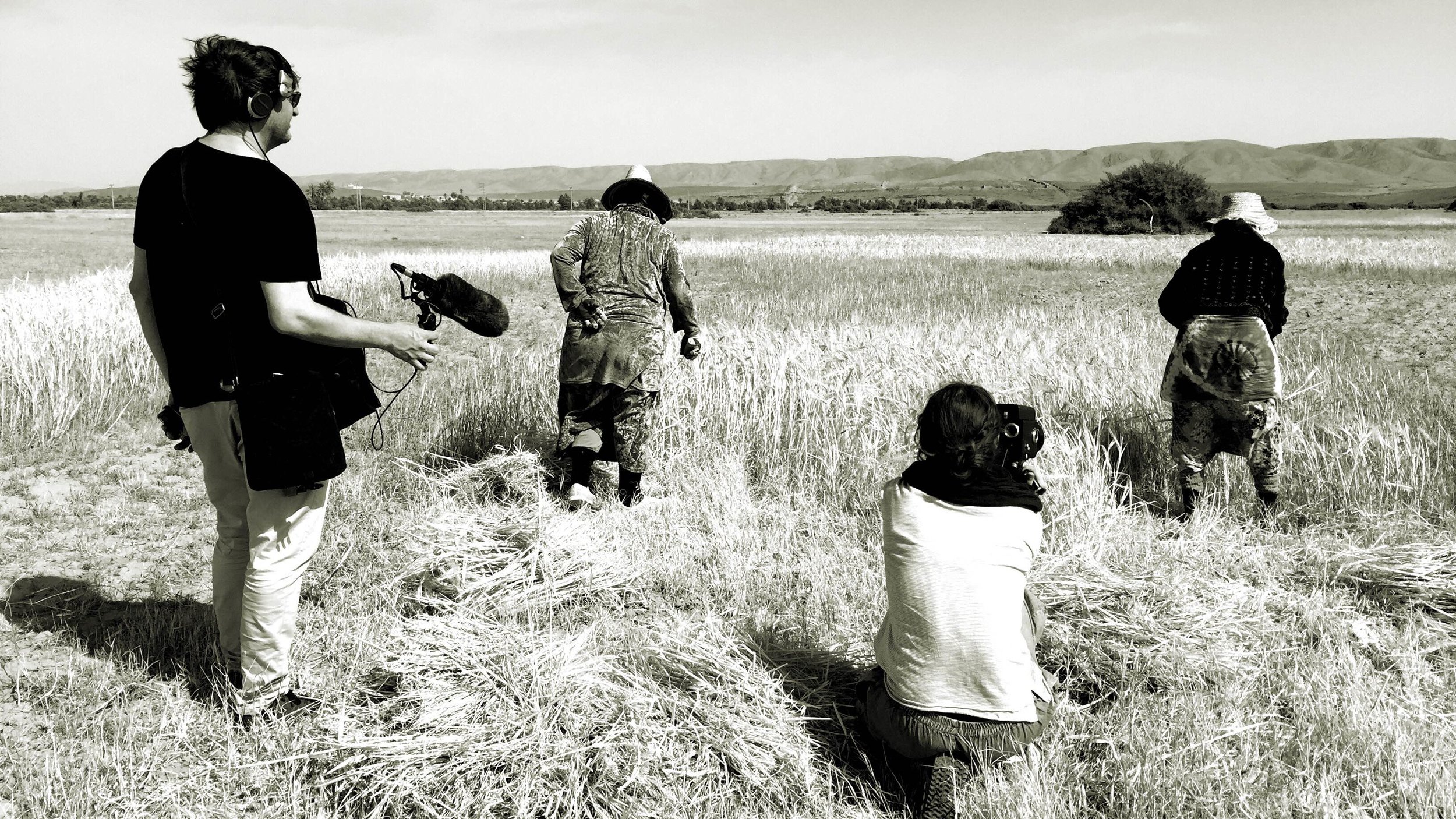

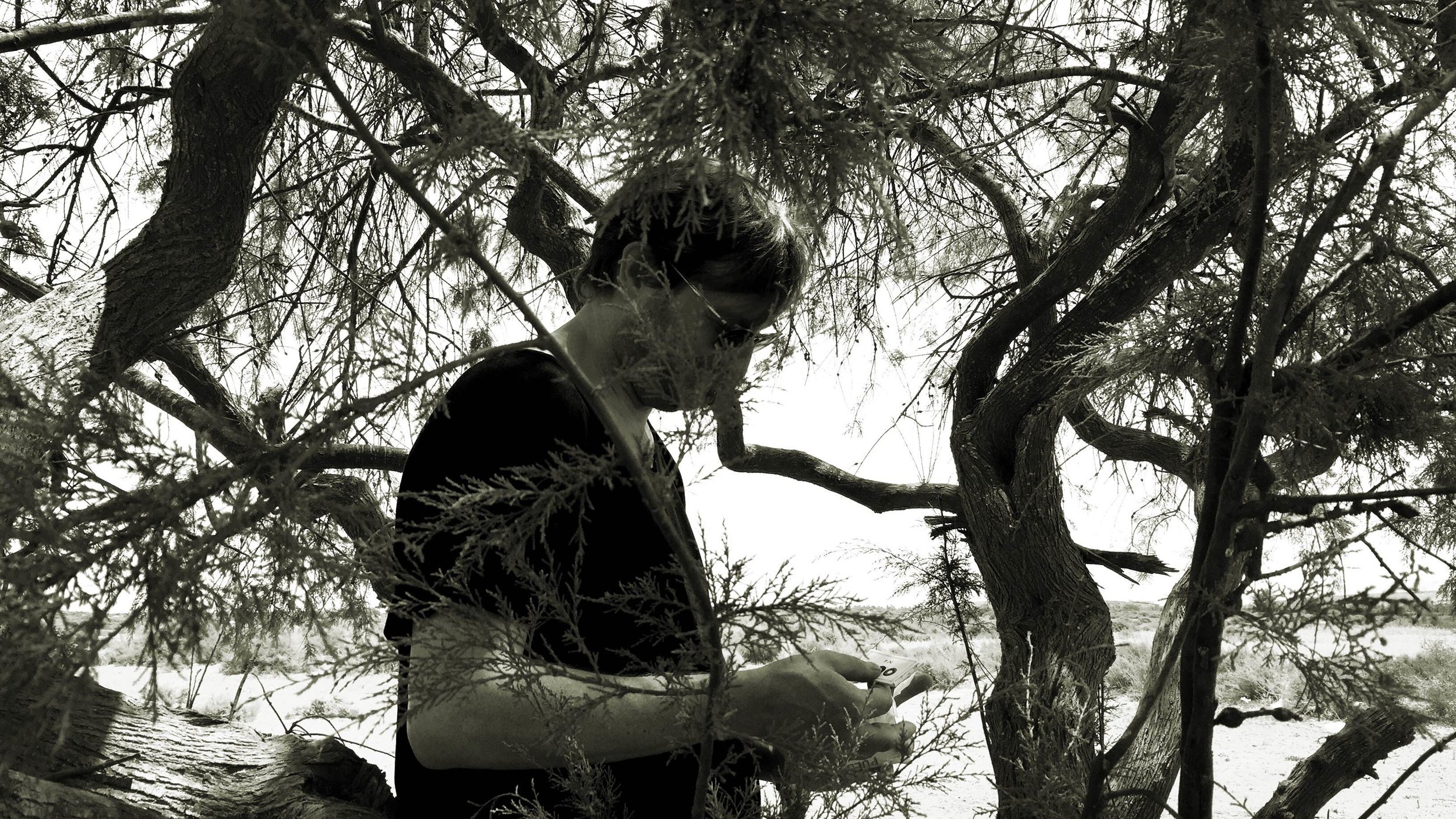
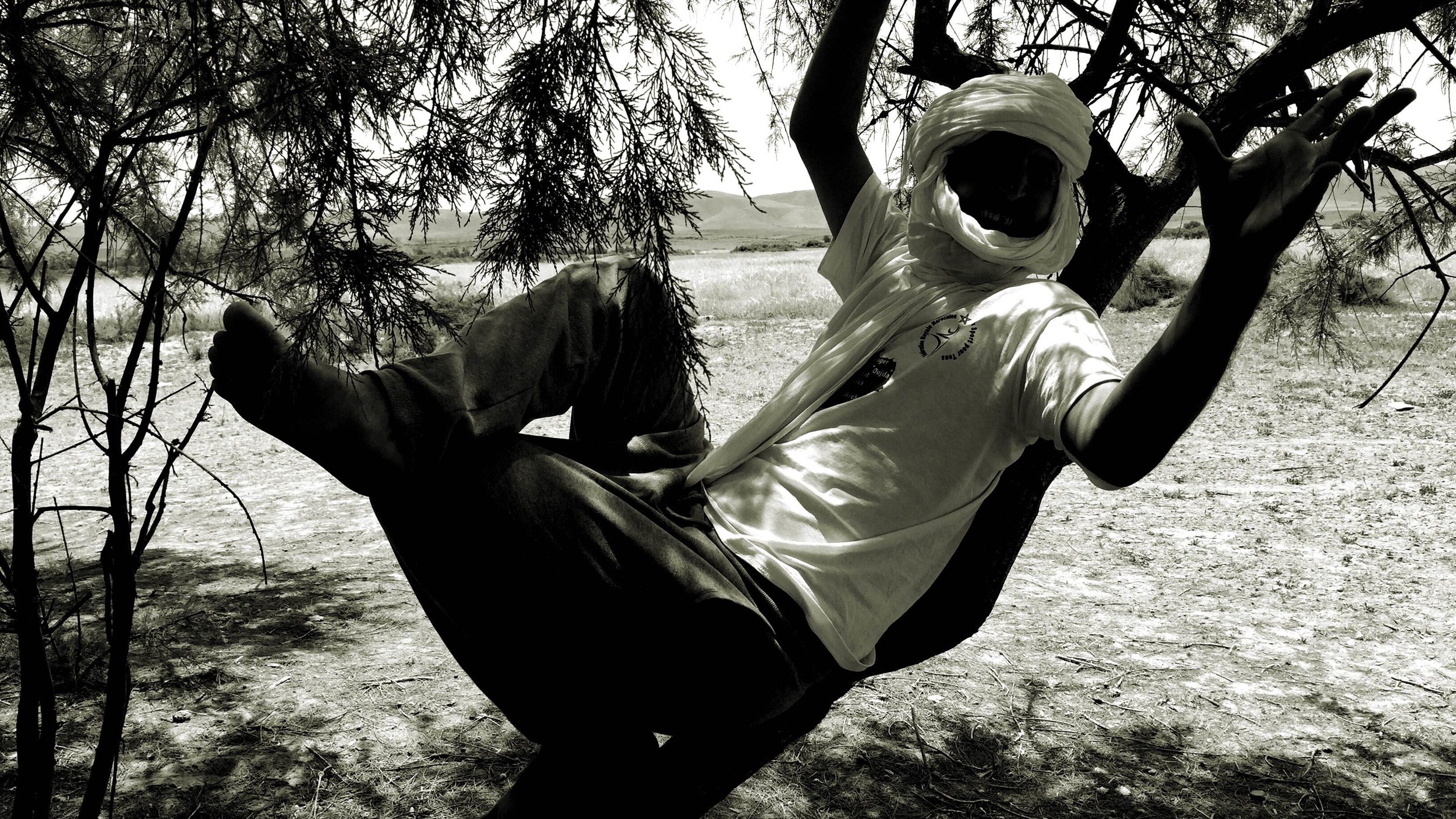

With Ahmed we showed them the oasis (the architecture, the agriculture, the water system, the spring...) and we tried other activities outside the palm grove, establishing ties with nomads, with whom we spend two nights, learning about nomadism, camels, geography, history... It was a very enriching experience and it gave us the idea of repeating that experience during the artists gathering in July.
One of the goals of our activities is to encourage the collaboration between artists. Once Heidi and Gilles met, they decided to work together, one with the images recorded with a 16mm camera, the other with the sound recordings. As Gilles wanted to record women singing while they worked, we decided to approach a group of women working in a land, between Asrir and Guelmim. Ahmed told us the strategy to follow, because it is not easy to film women in Moroccan rural areas, and we put it in practice. Finally, they accepted and it was an amazing moment, but for me, rather than the material the artists got, it was more interesting the links we created with them. First of all, we had to explain the women why we were there, what we wanted and what the artists will do with the recordings (they thought it was for a television documentary). We came back the day after to have lunch with them and to explain again what we were doing. I think it was important to tell them that they could see the result during the gathering in July, so we invited them to come, and they did...
Sometimes it is complicated to quantify the impact of the oasis in the artists and their works, because most of the time, it takes time to see the result. For example Gilles showed on his website some months later what he recorded during this first visit to Tighmert (you will find more on his website).
Meryem Jazouli / Malika Zarra / Younes Anzane
Since her first visit in May 2016, Meryem Jazouli had been working on her new creation during several residencies she did both in Europe and Africa. Once she had more clear what she wanted, and the profil of her collaborators, she asked me to come back to the oasis with jazz singer Malika Zarra and playwright Younes Anzane. Apart from discovering the oasis and its atmosphere, the most important was to make them meet Sallam Yamdah, founder of Guedra group, Mnat Aichata.
Meryem, Malika and Younes carried forward their research and in February 2018, they presented for the first time the performance FOLKAH in Brussels.

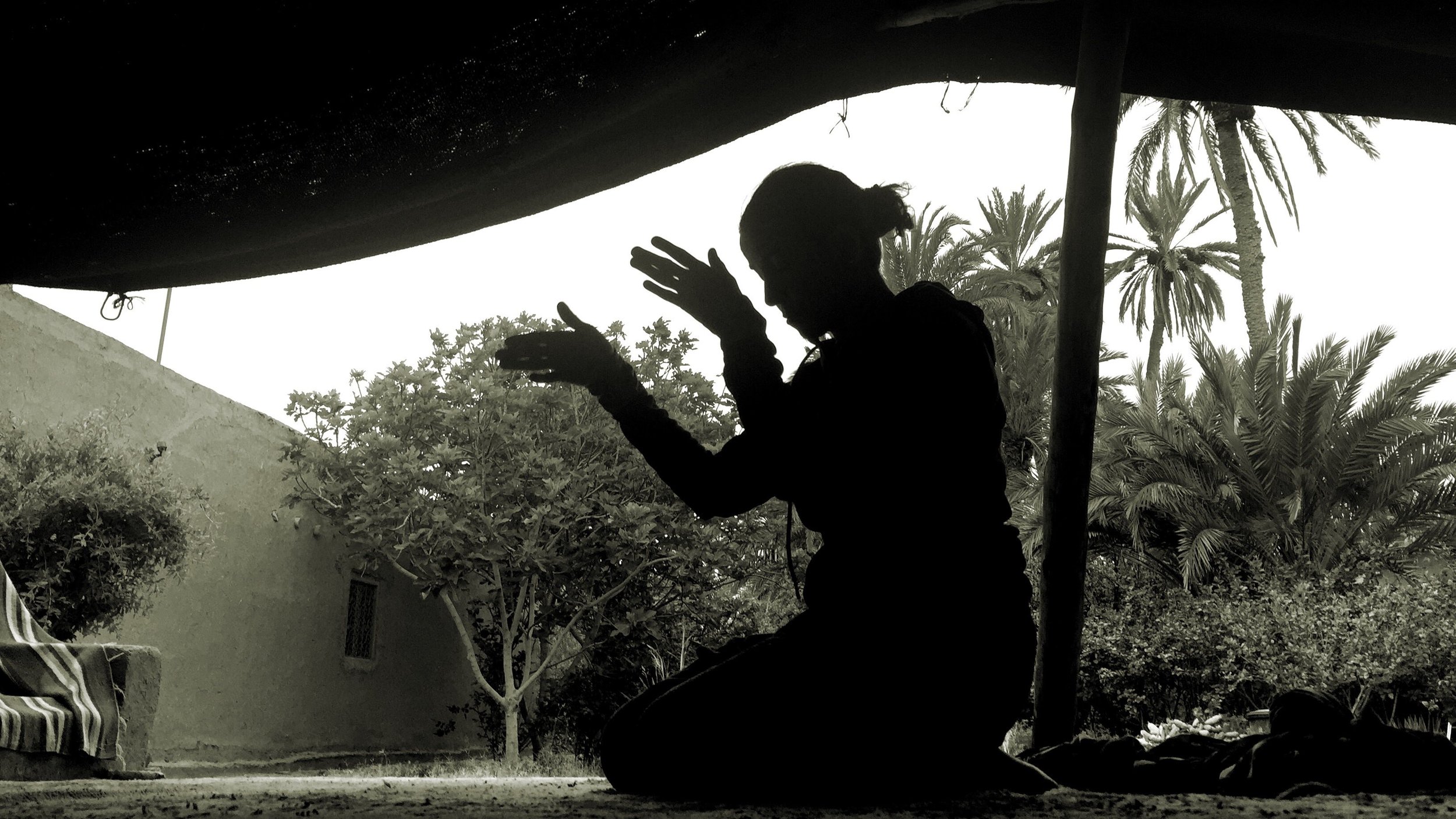
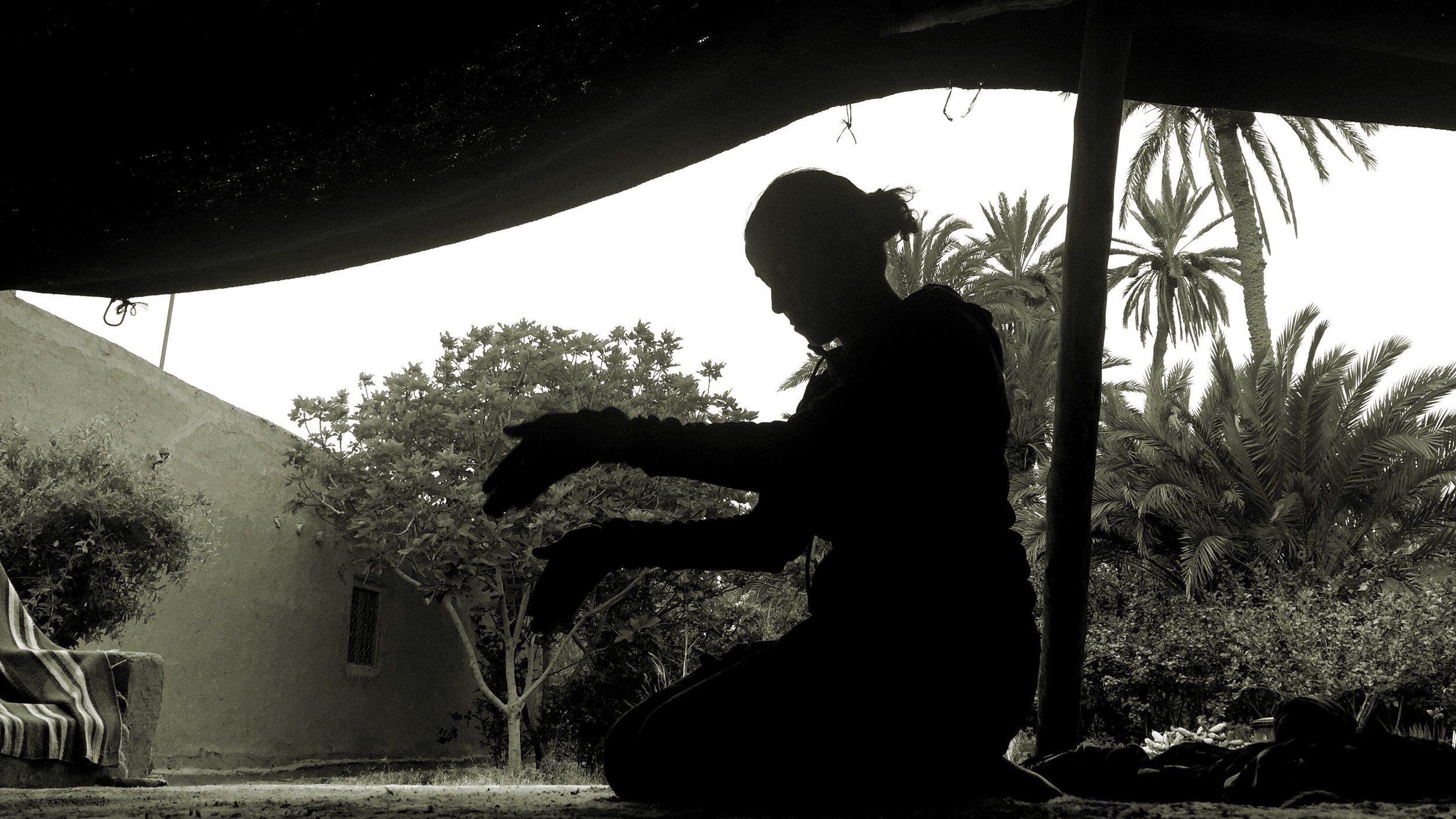
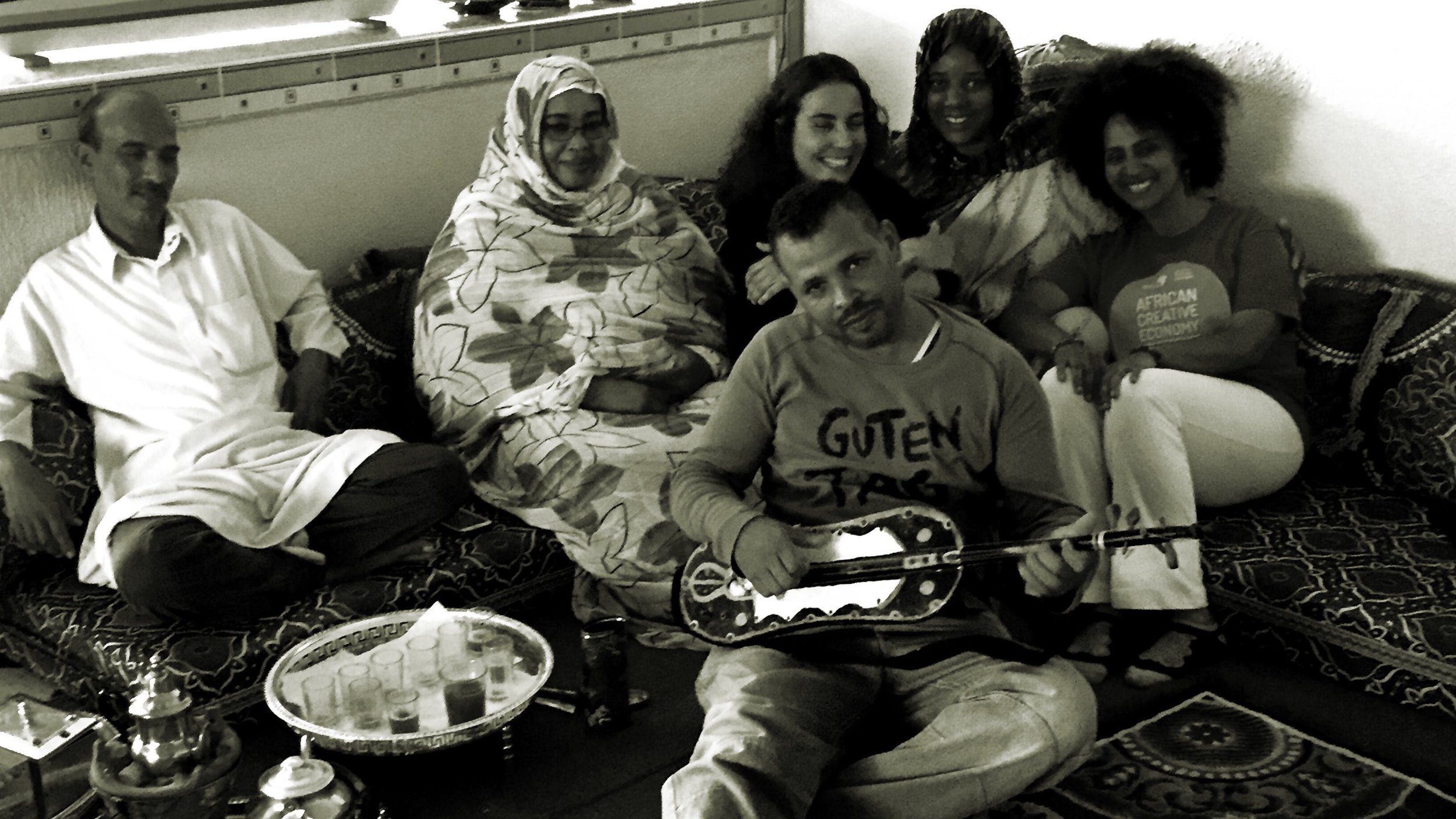
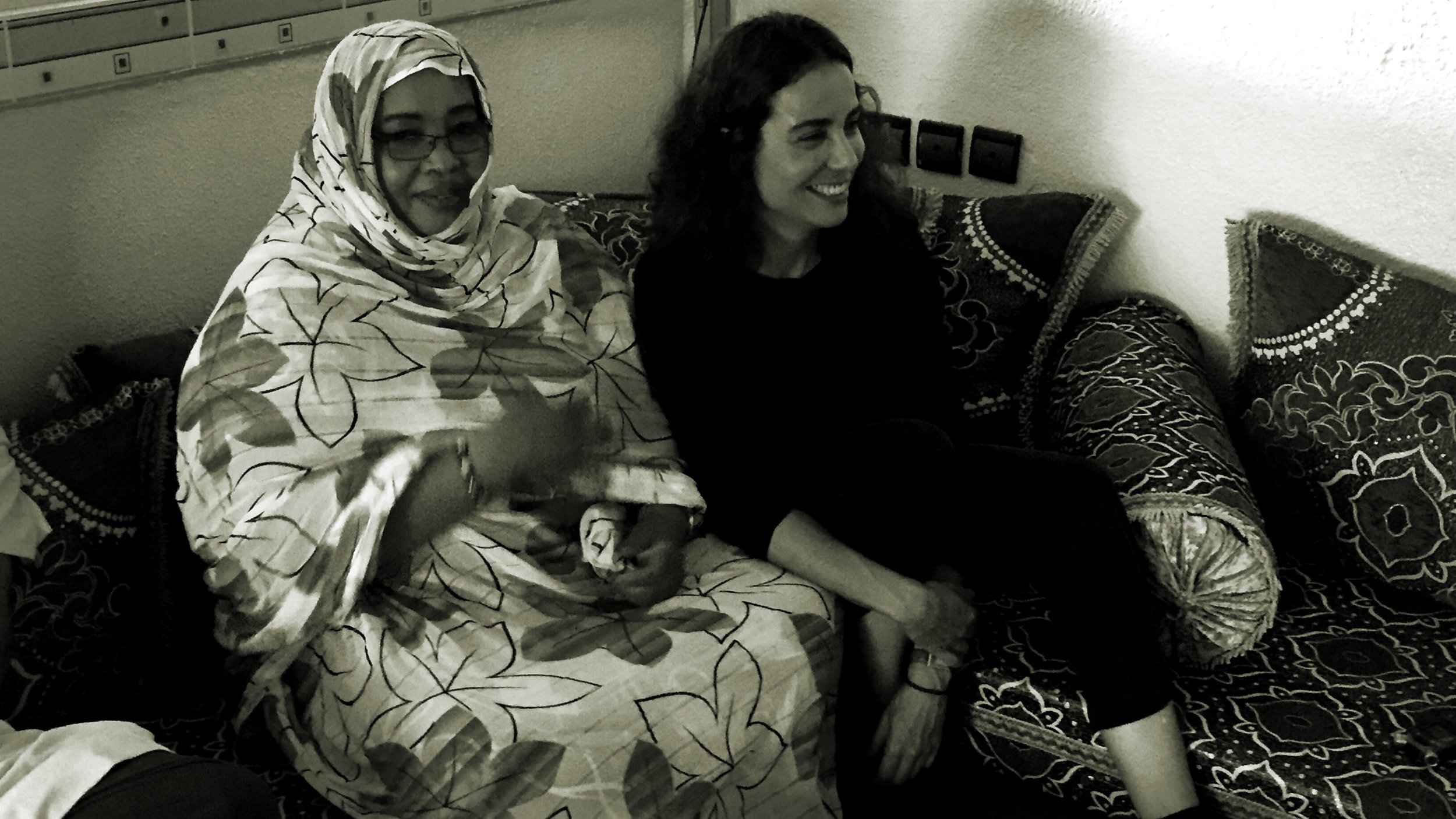

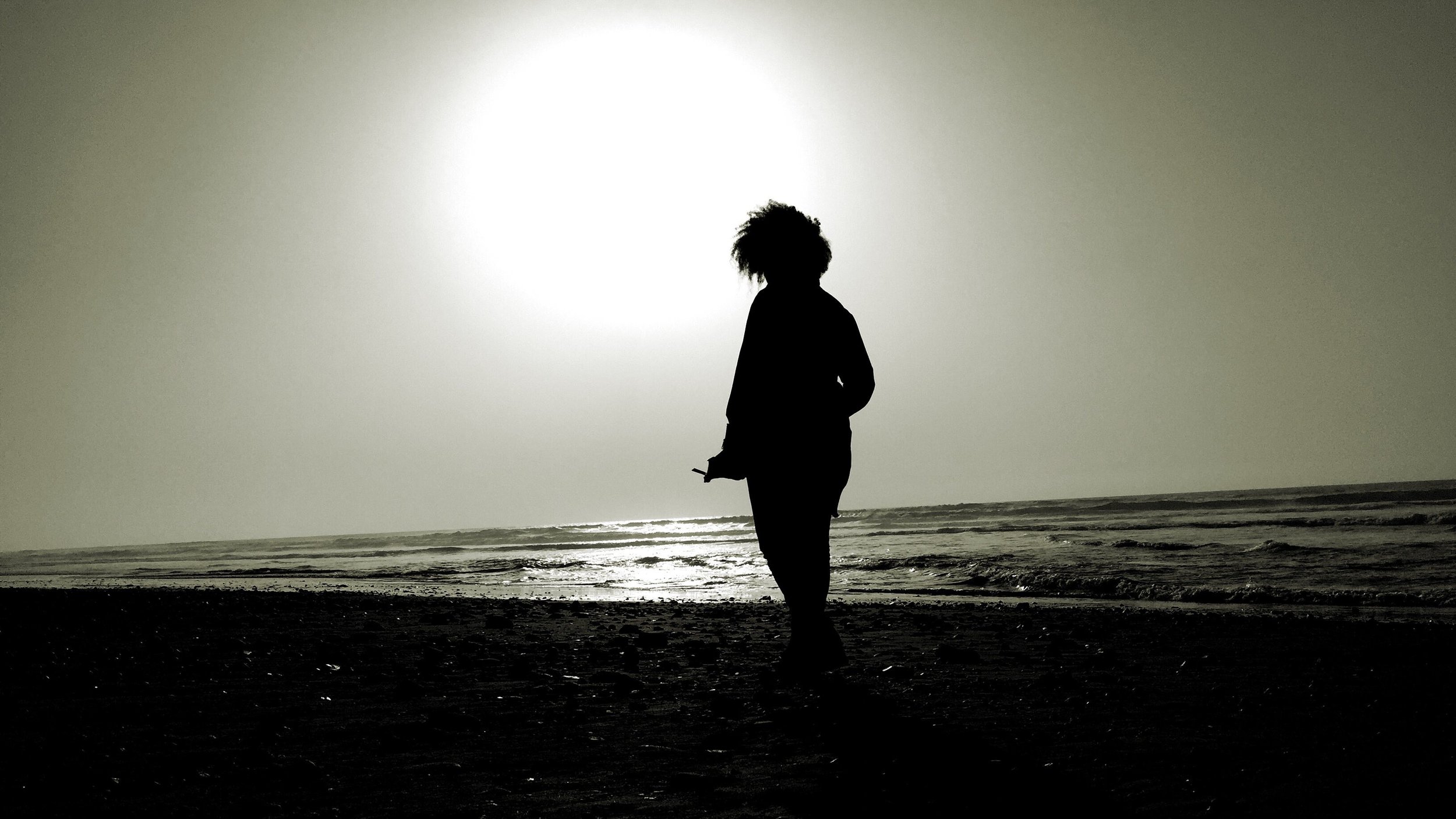
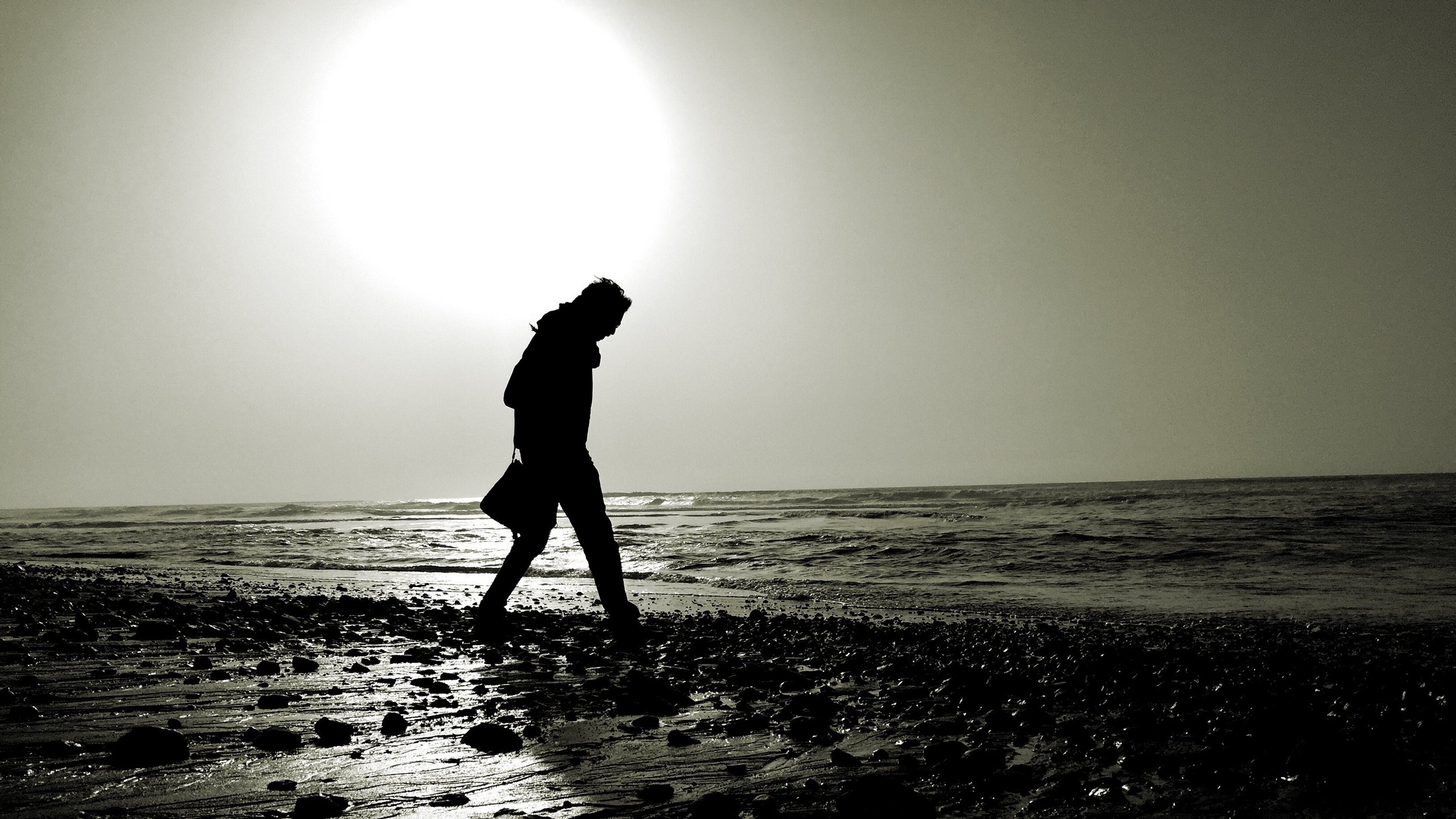
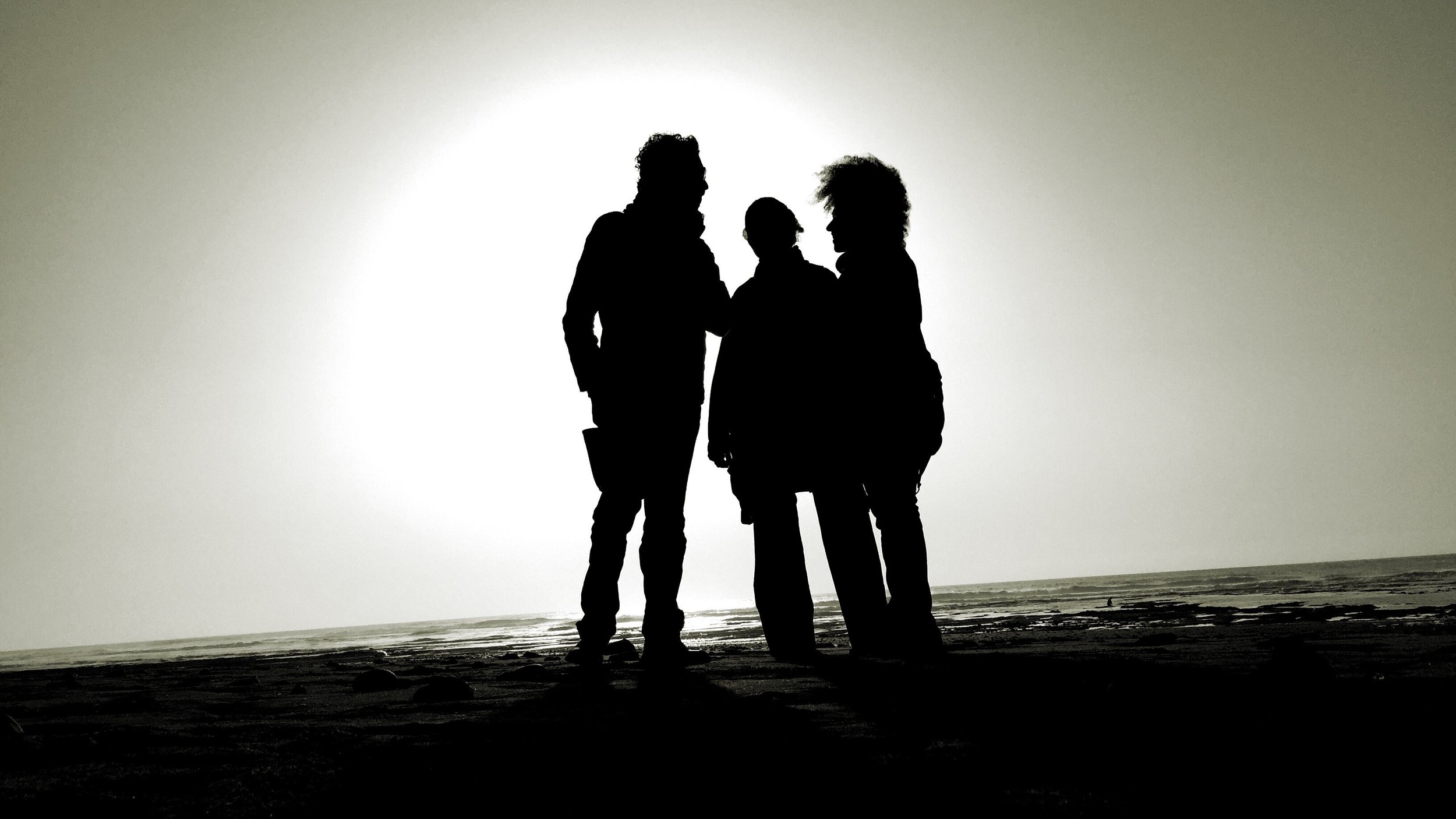
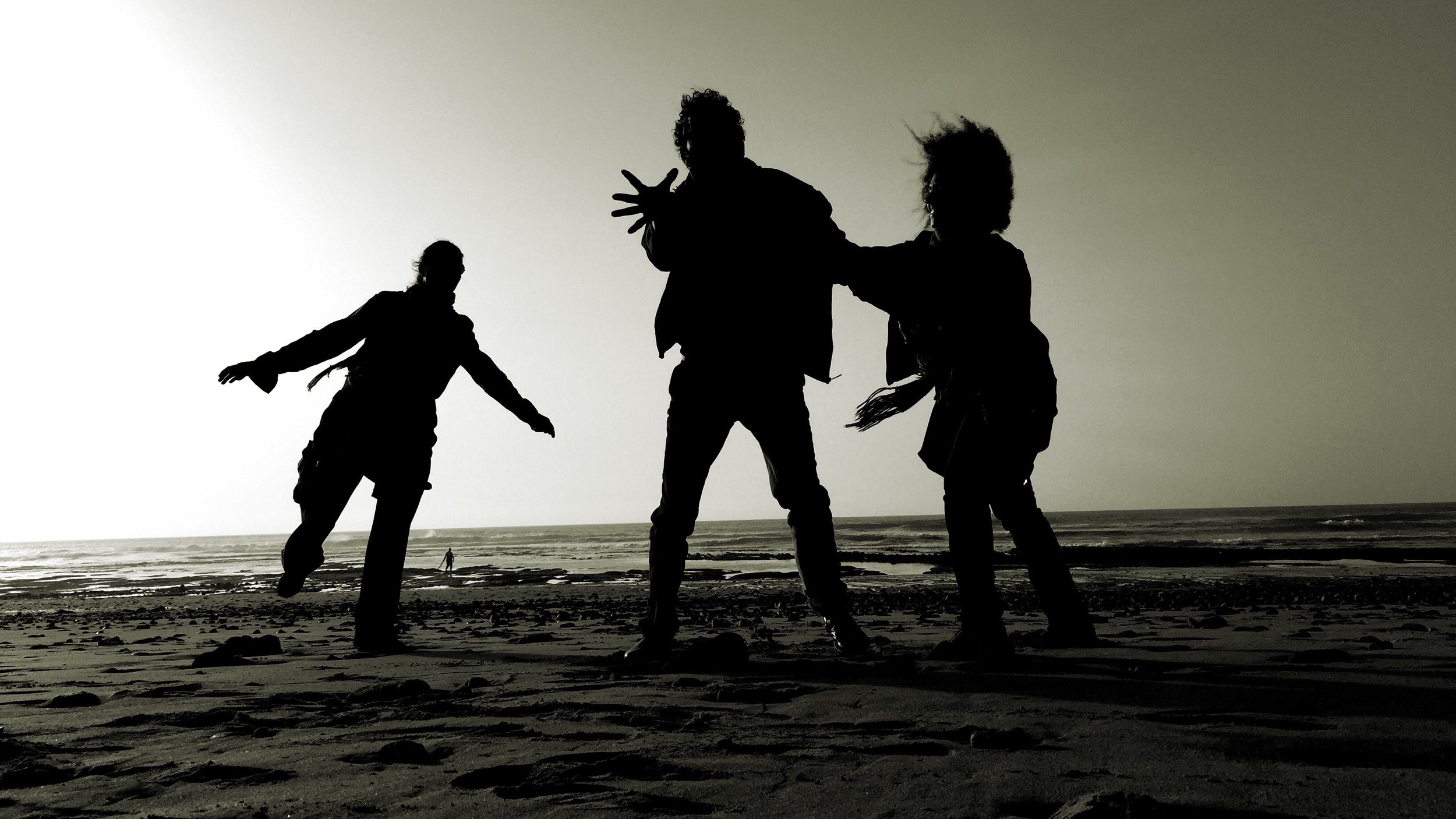
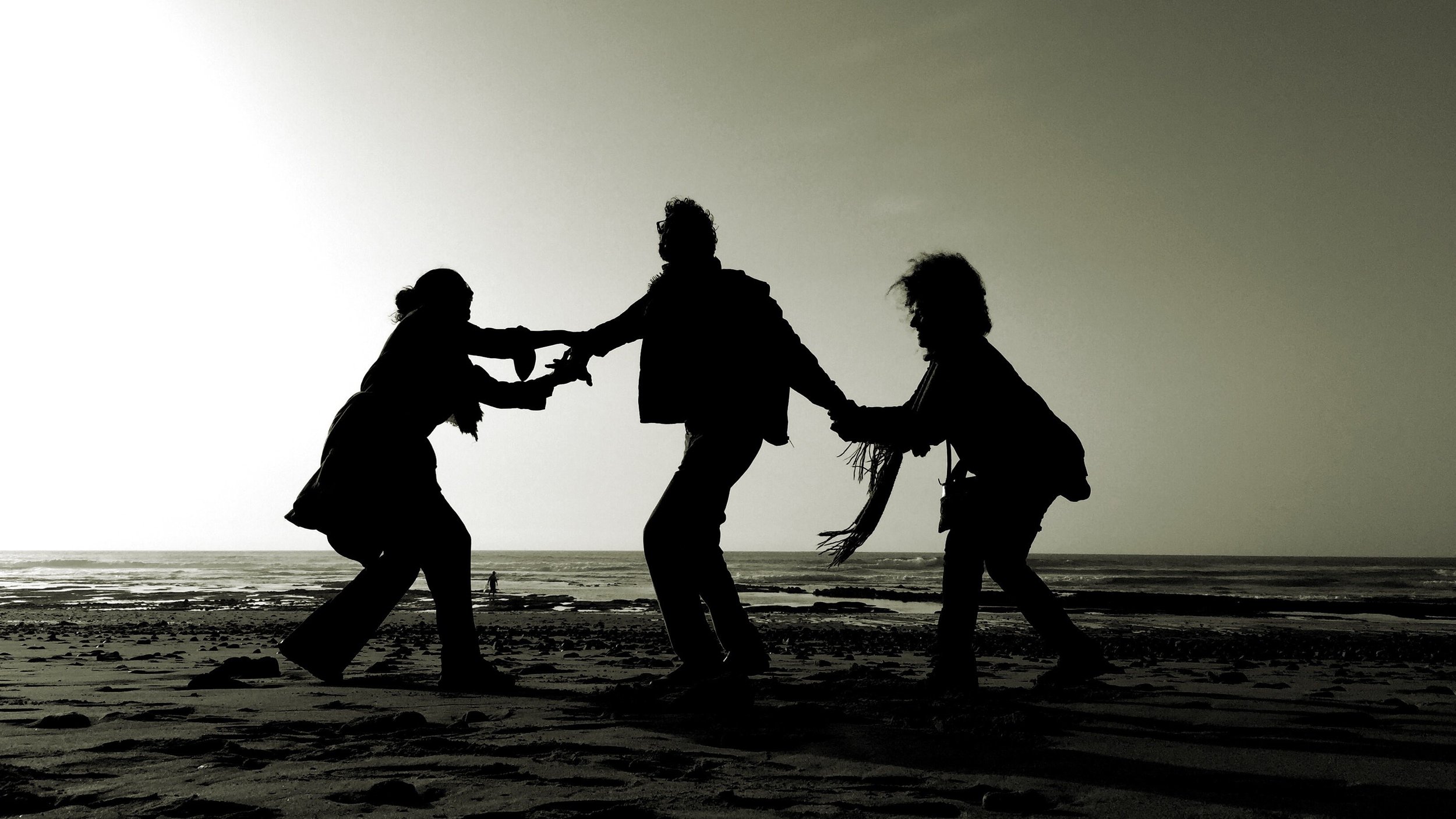

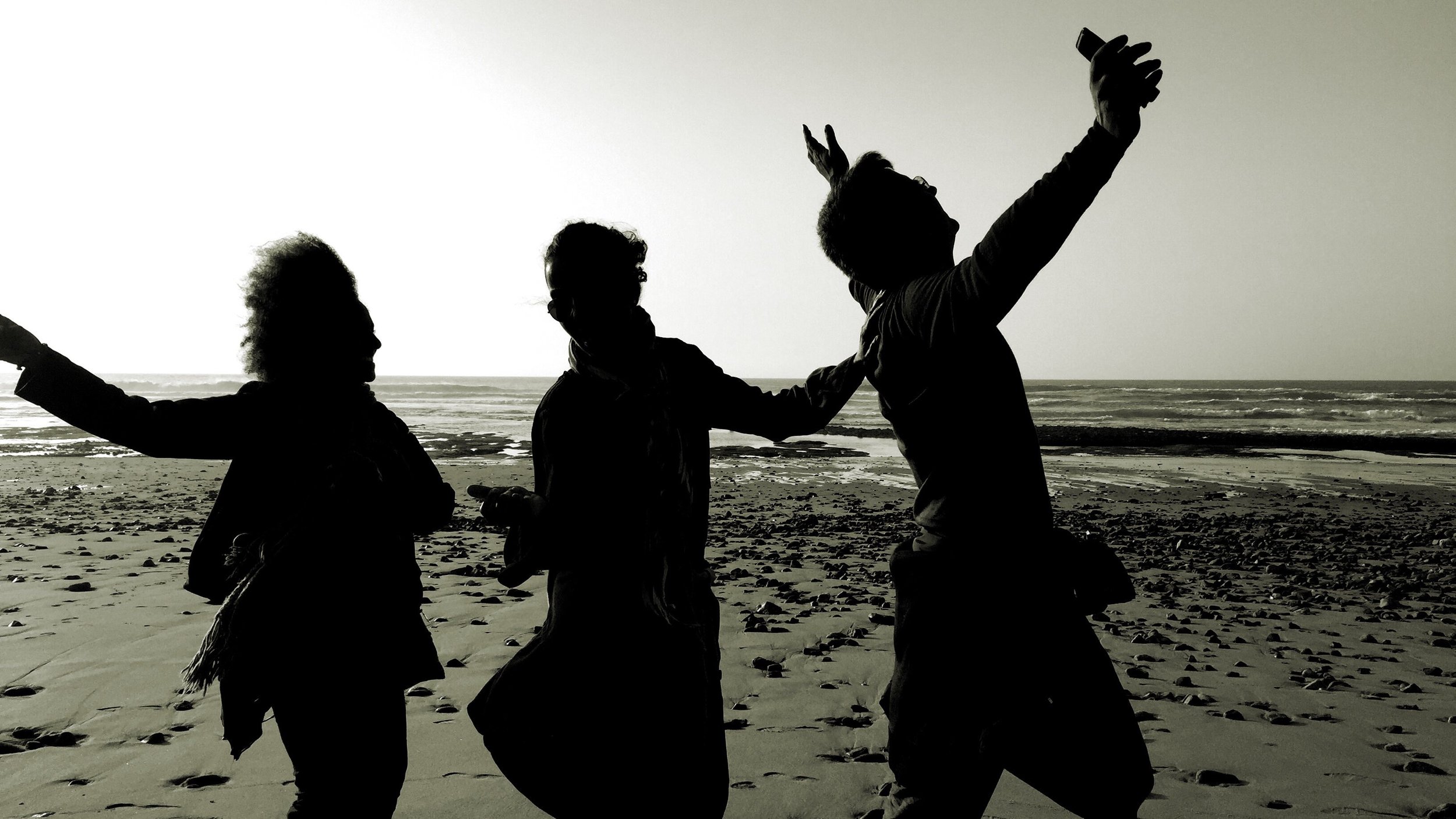
artists gathering
This year, and after the experience in 2016, we decided it would be better to host only 8 visual artists, because we could not control and take care of 22. We noticed artists needed more personal attention if we wanted them to apprehend the essence of the oasis. We also launched a call for artists, "booking" two places for young artists (Lotfi Souidi and Dounia Fikri). We received 10 applications and the selection was made by M'barek Bouhchichi and myself.
It is curious how some artists complain with contemporary art exhibitions in Morocco. According to them, only if you are a friend of the organisers or curators, you will be chosen . However, when they have the opportunity to apply they do not do it because they want to be invited directly. At the end, they do not complain about the system, they complain because they are not in the system. Knowing that our application can be done in 10 minutes, they have no reason to apply. Of course, we are not interested to host artists with this kind of mentality.
I think it was a great idea to reduce the number of participants. We stayed more time together (we used Ahmed's house and some rooms in Maison Nomades), they could share their experiences (most of them was the second time they came) and we recovered the workshops (they did not work very well in 2016). Nevertheless we had to face, again, the inconvenience of weather, with temperatures of 44ºC during half of the week that avoided us to work during the day.
We spent the last night with the same nomads we met in May with Heidi and Gilles. Even if we arrived too late (we only had two cars to move 15 people), I think the artists and friends appreciated a lot the place and the company, overall when they waked up and saw around them a hundred camels. We knew then, we needed to do it better next year...
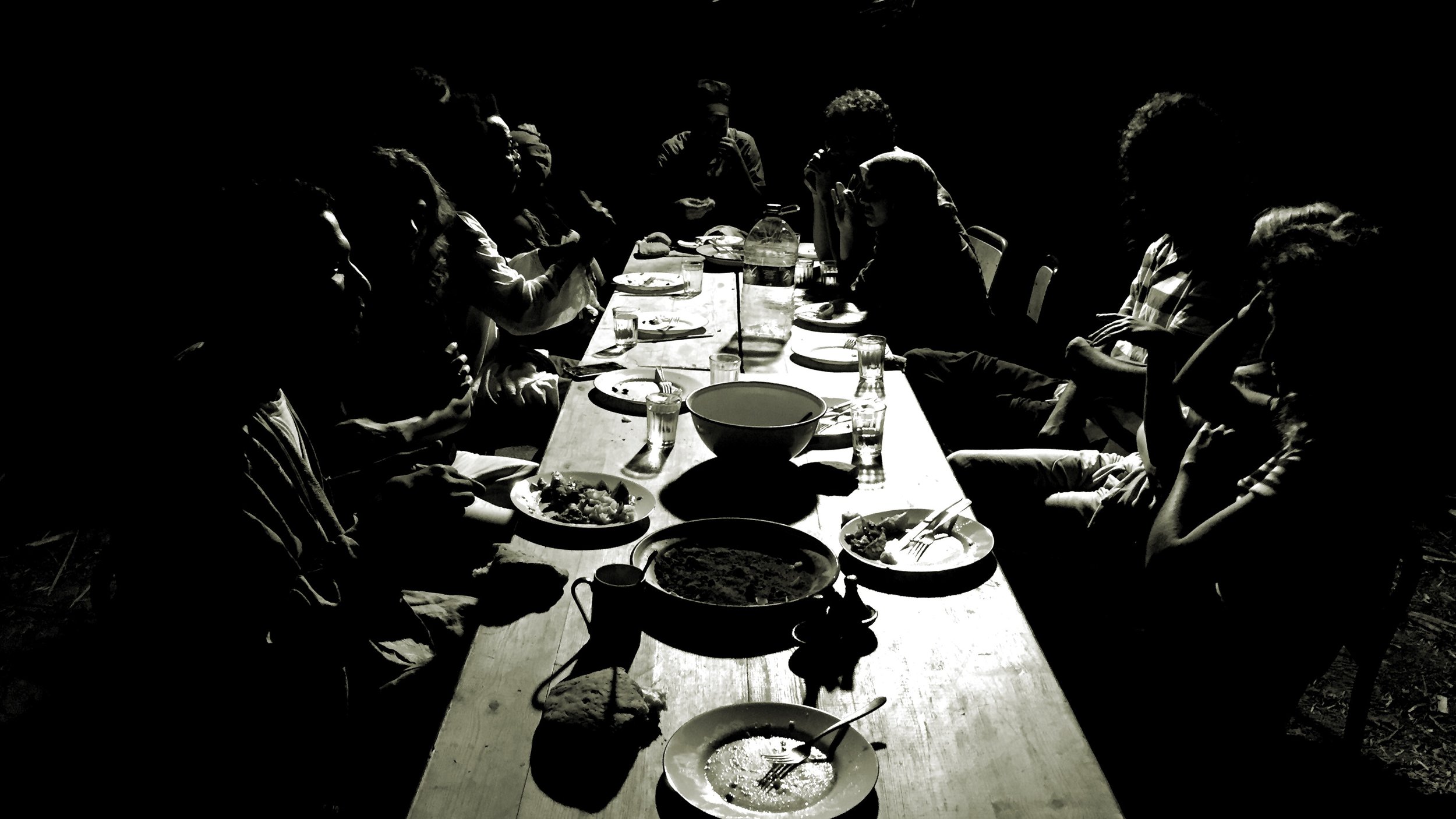




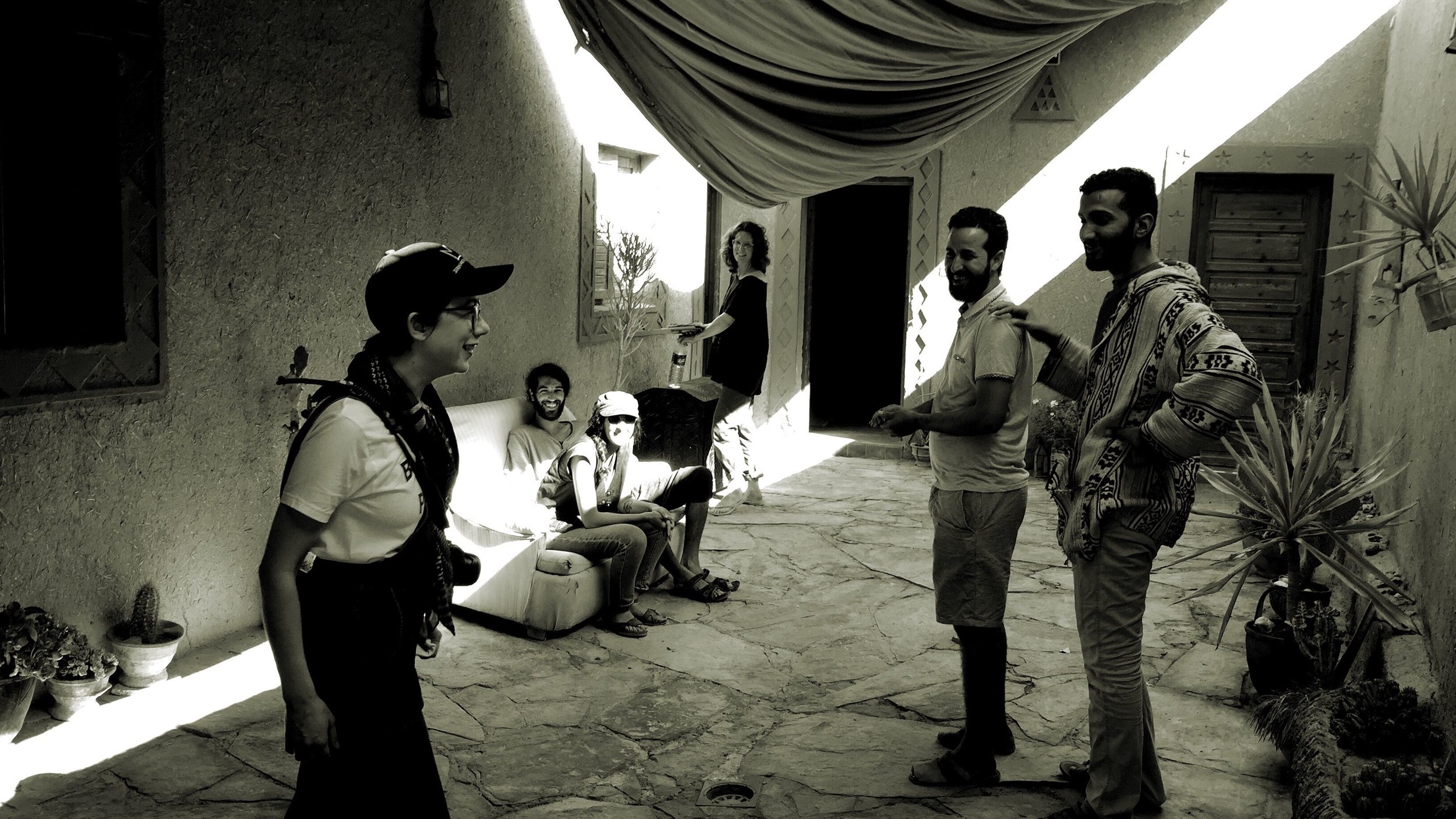
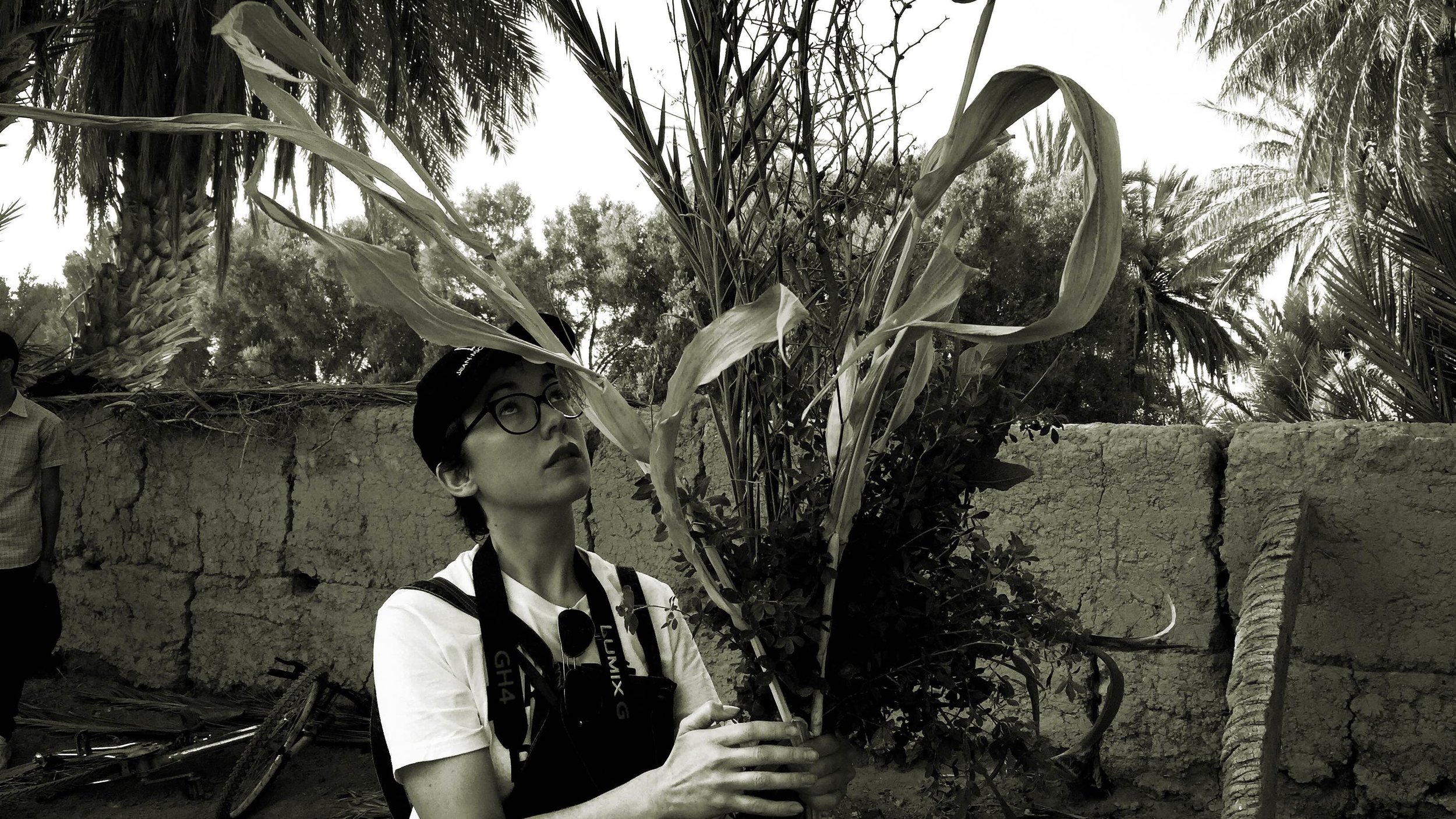



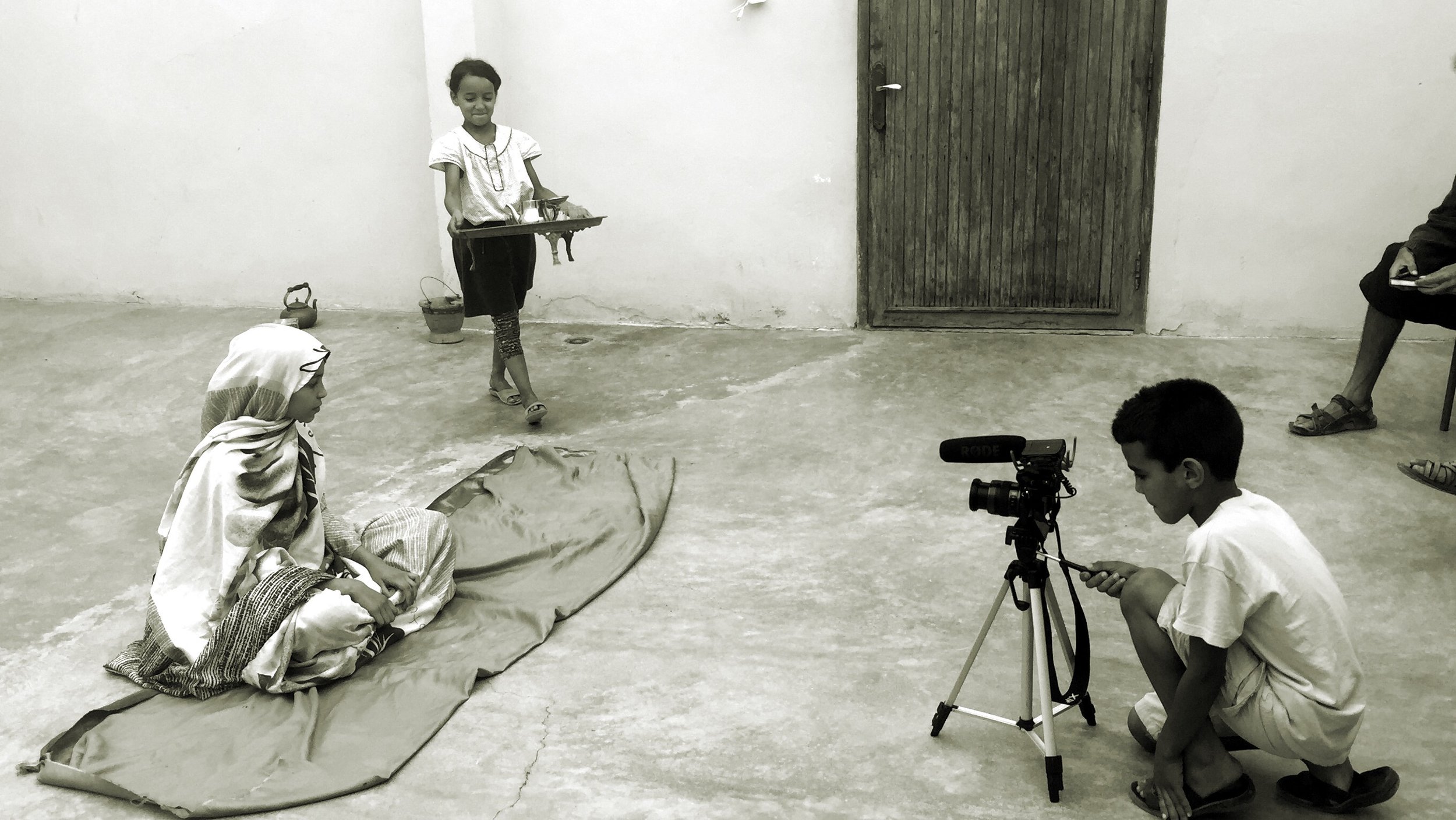
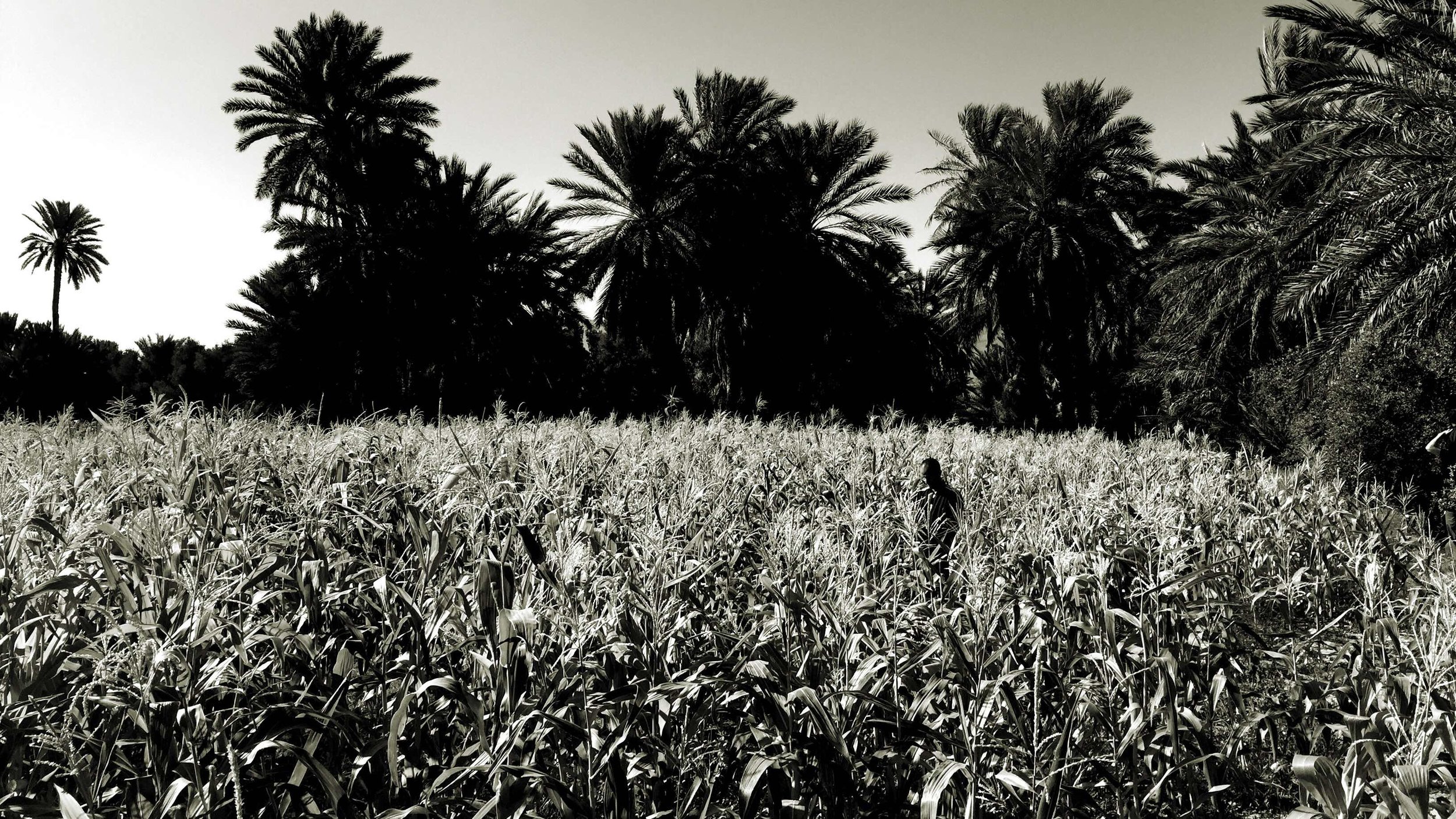





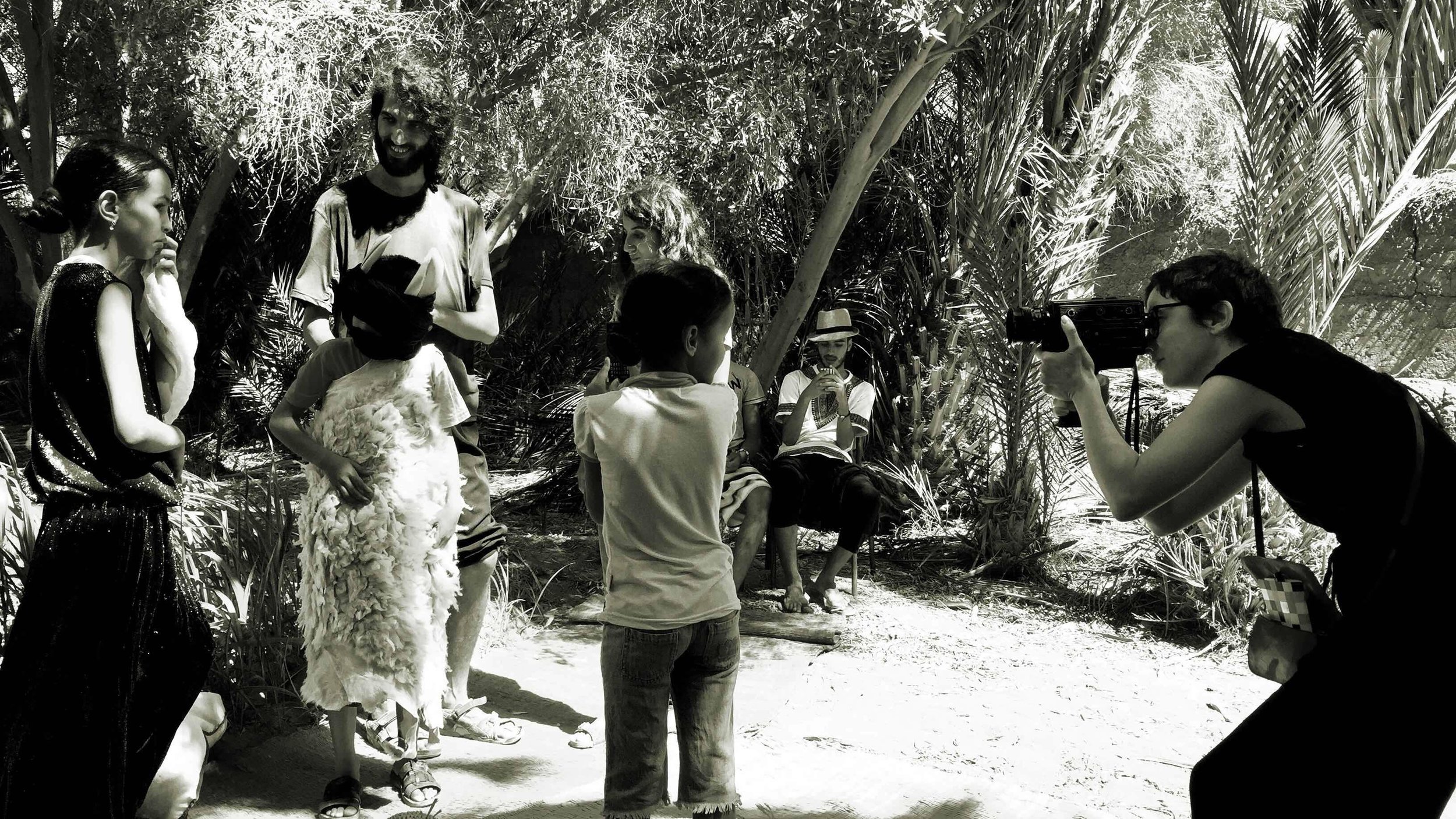
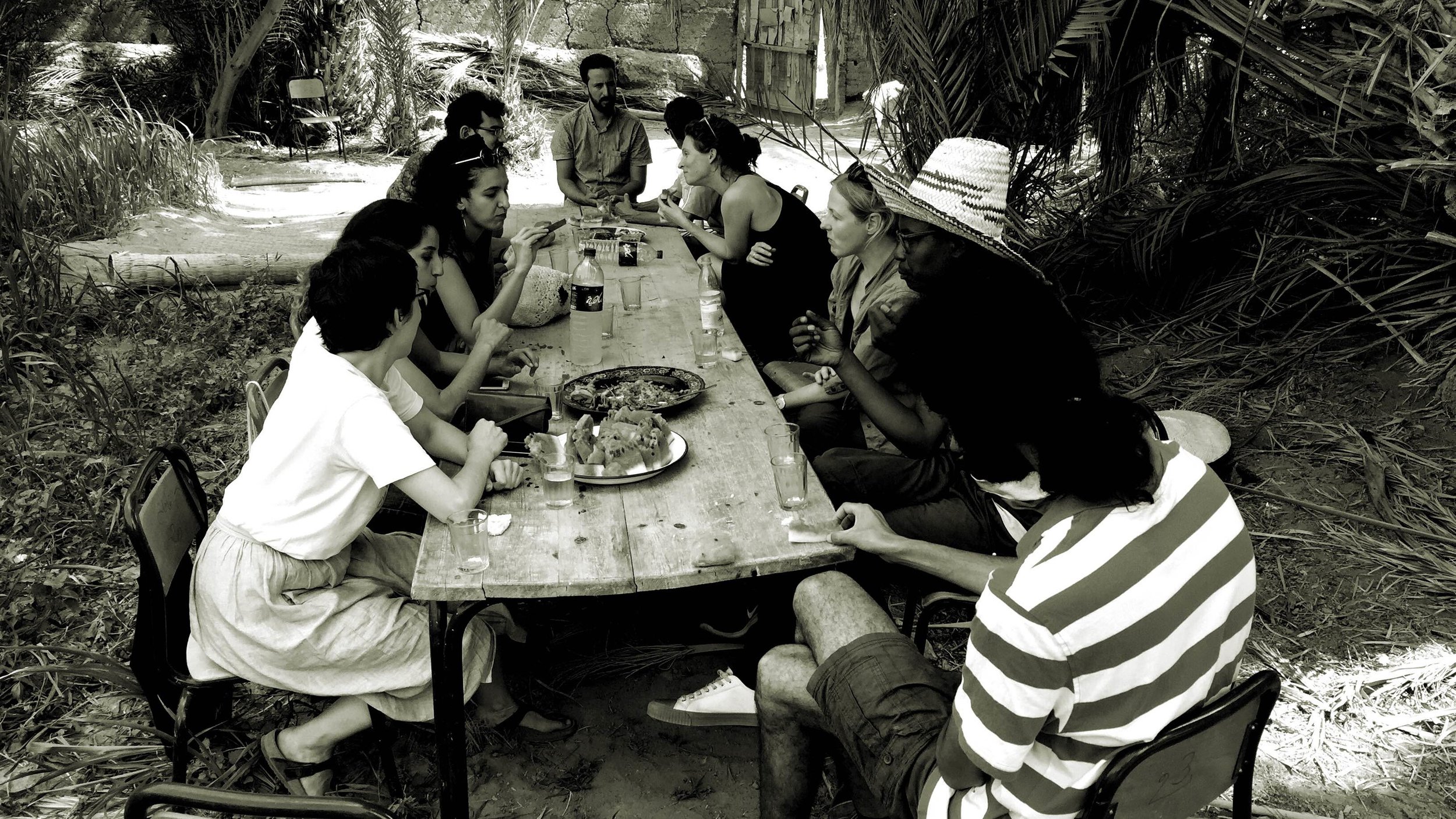
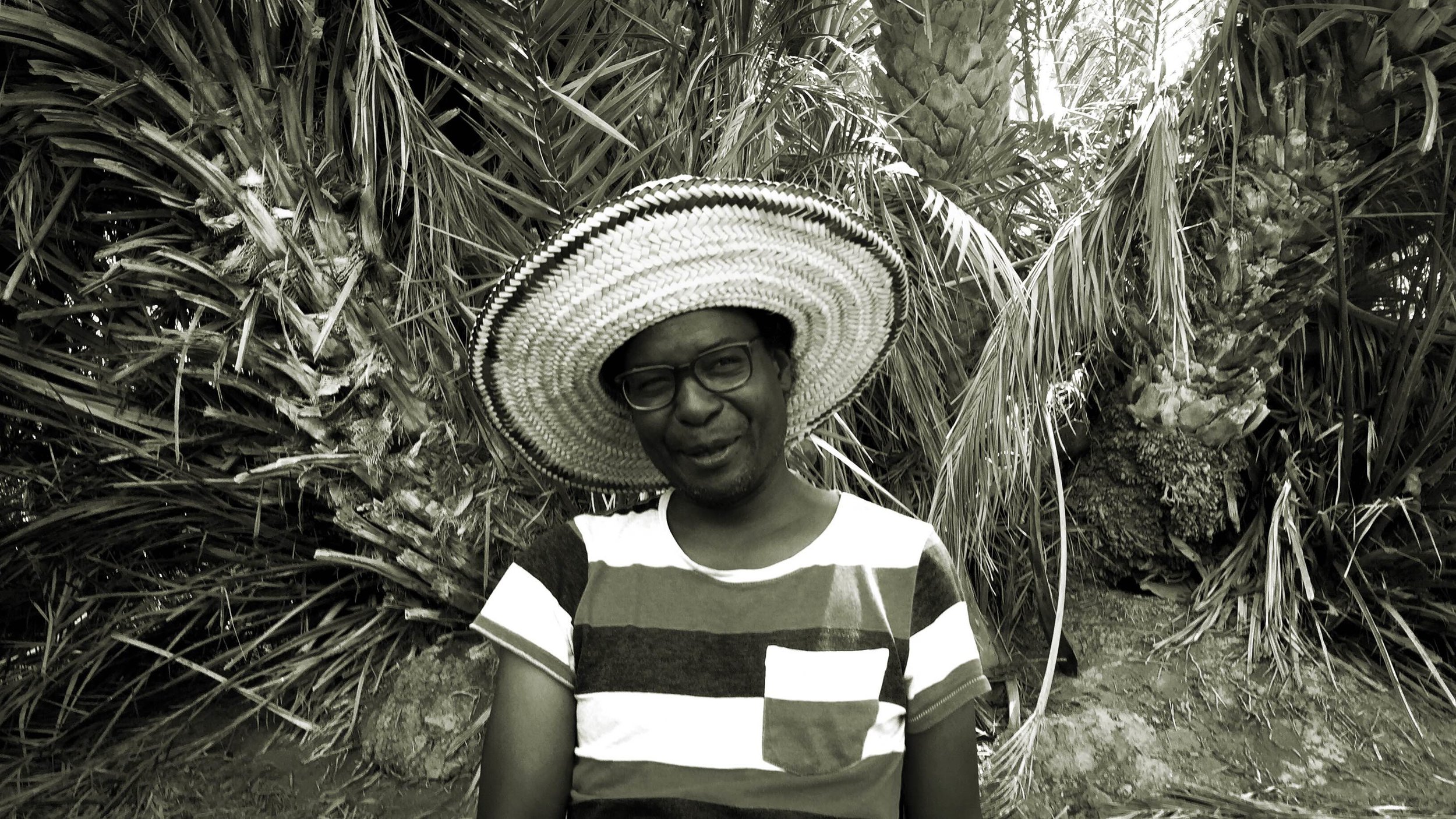
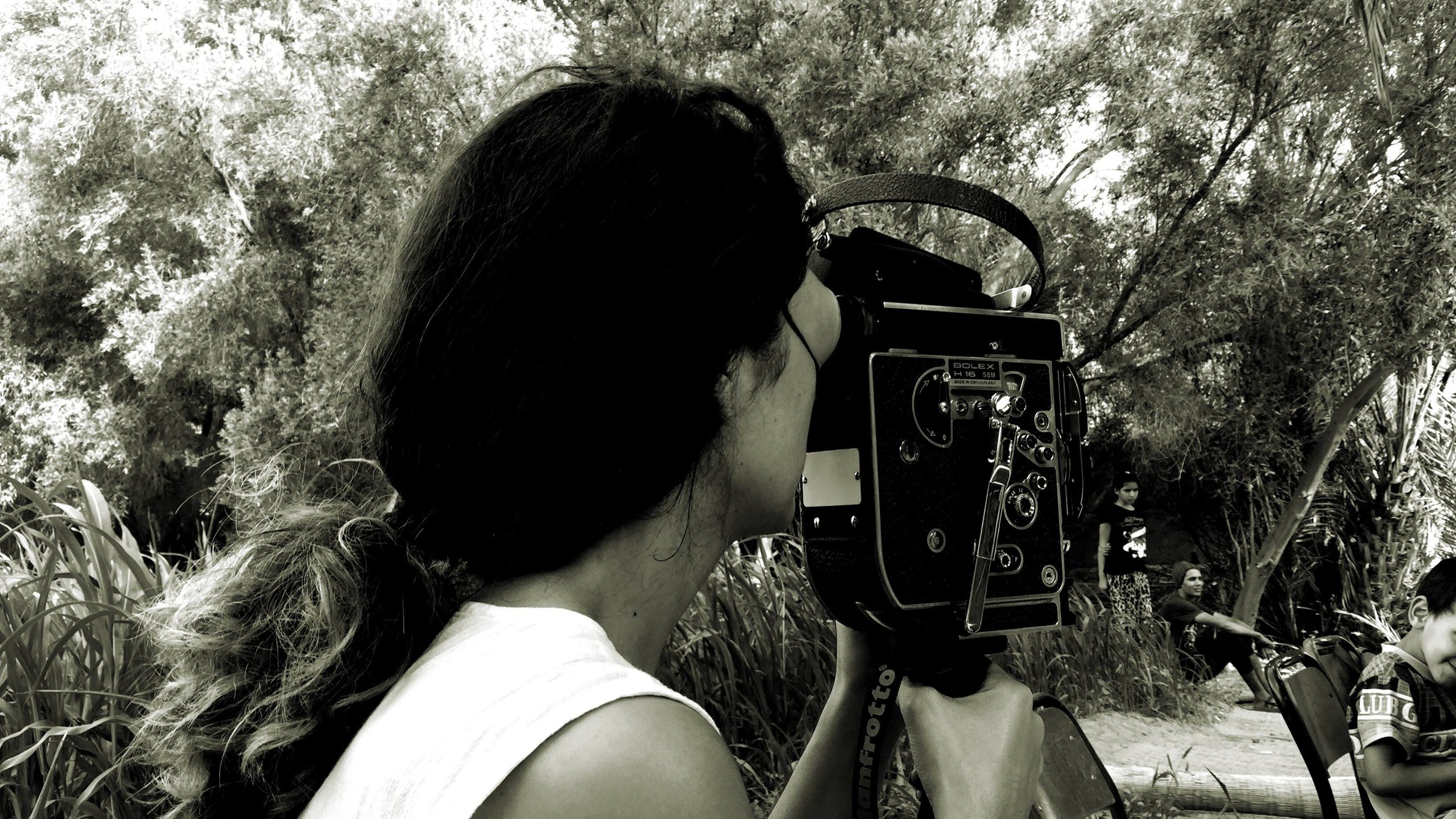
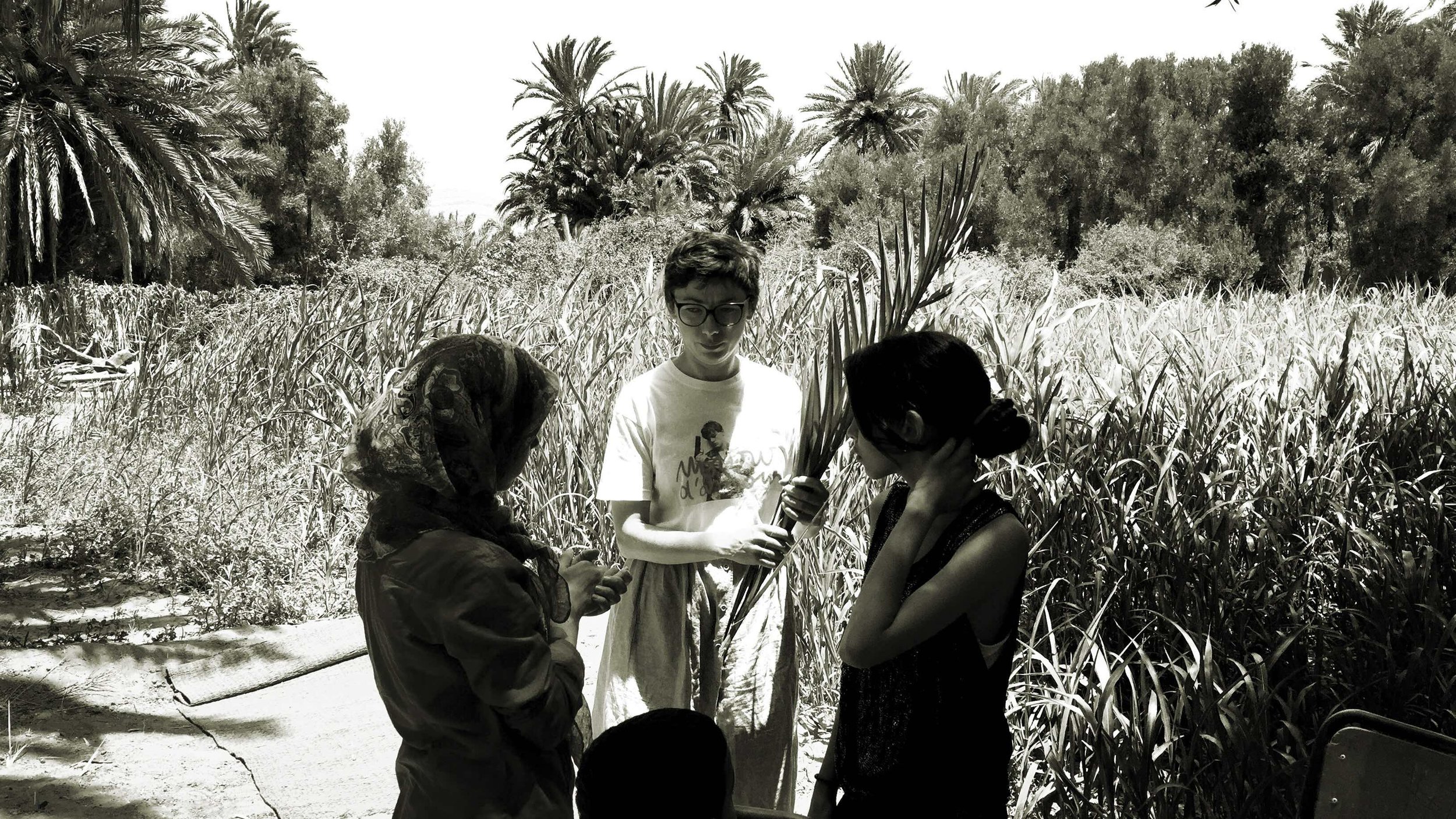


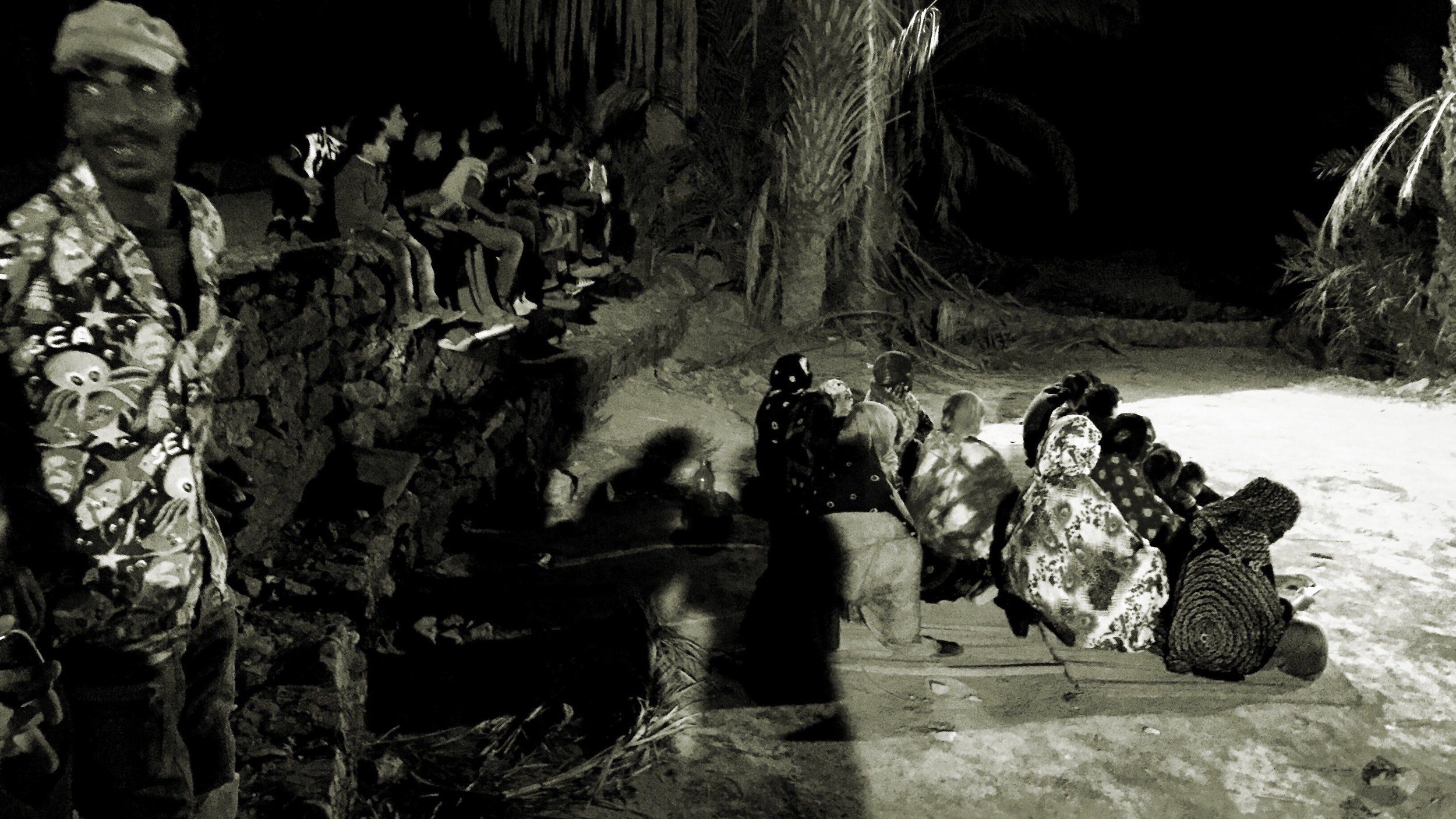


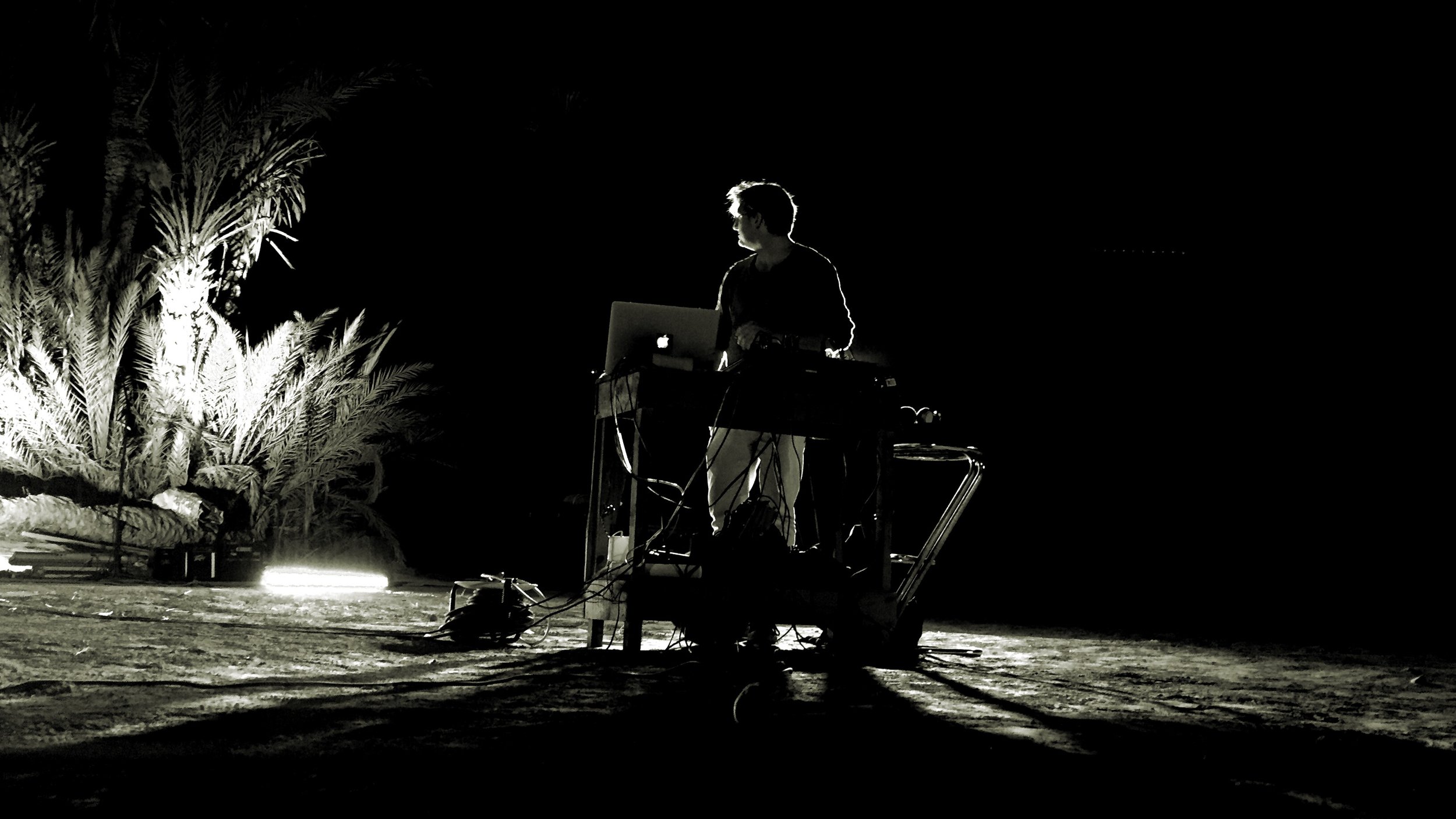

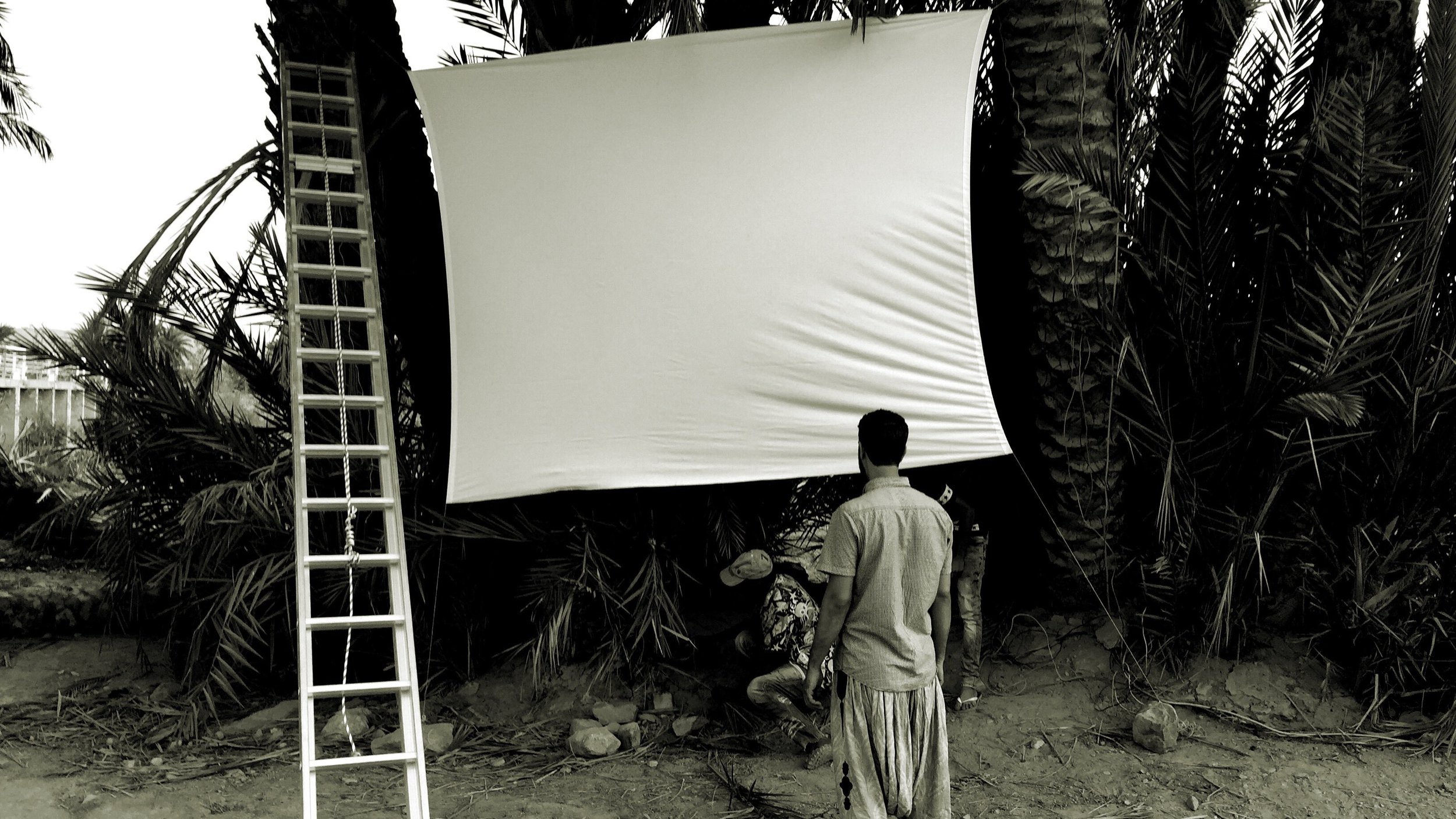
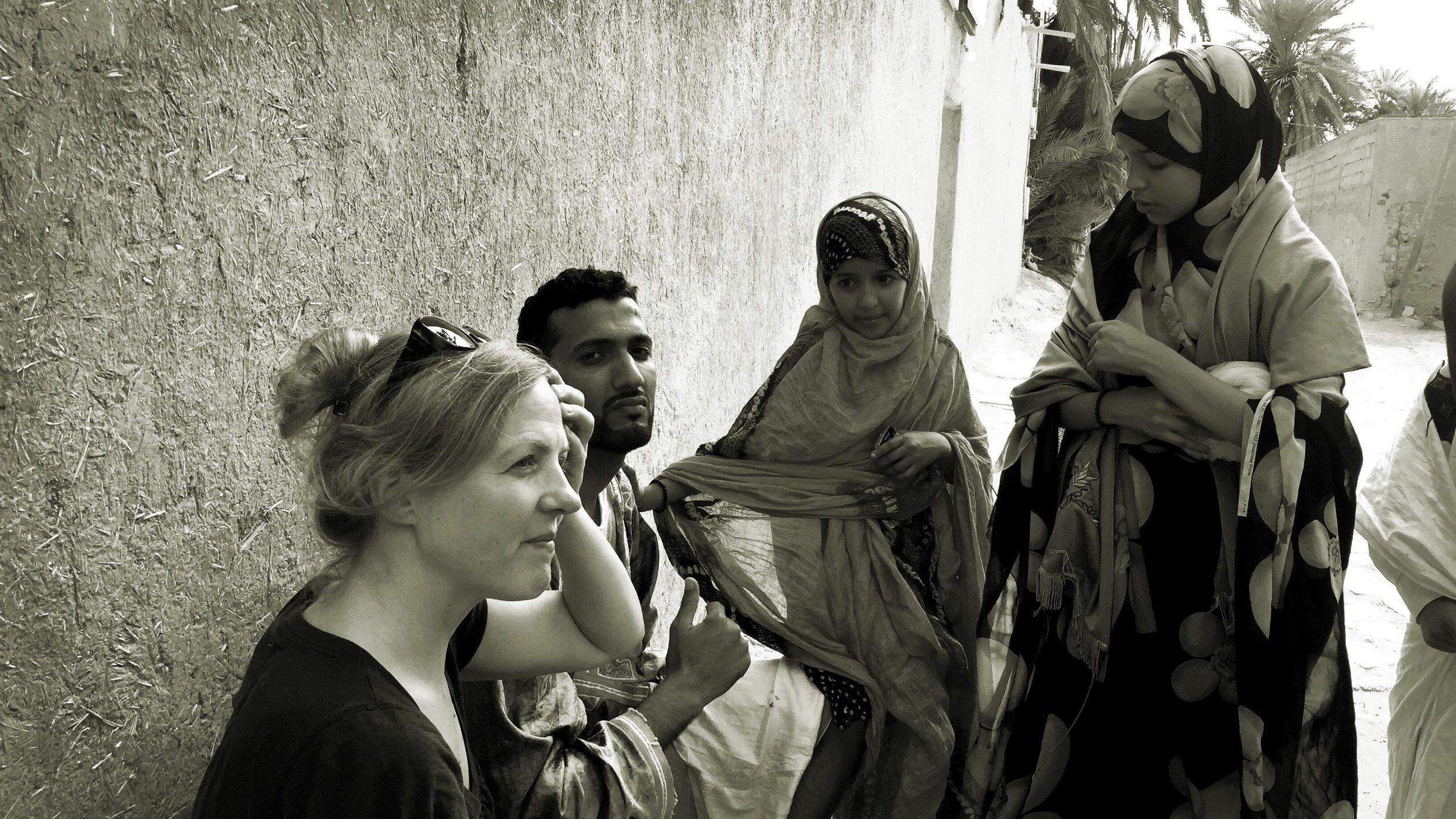




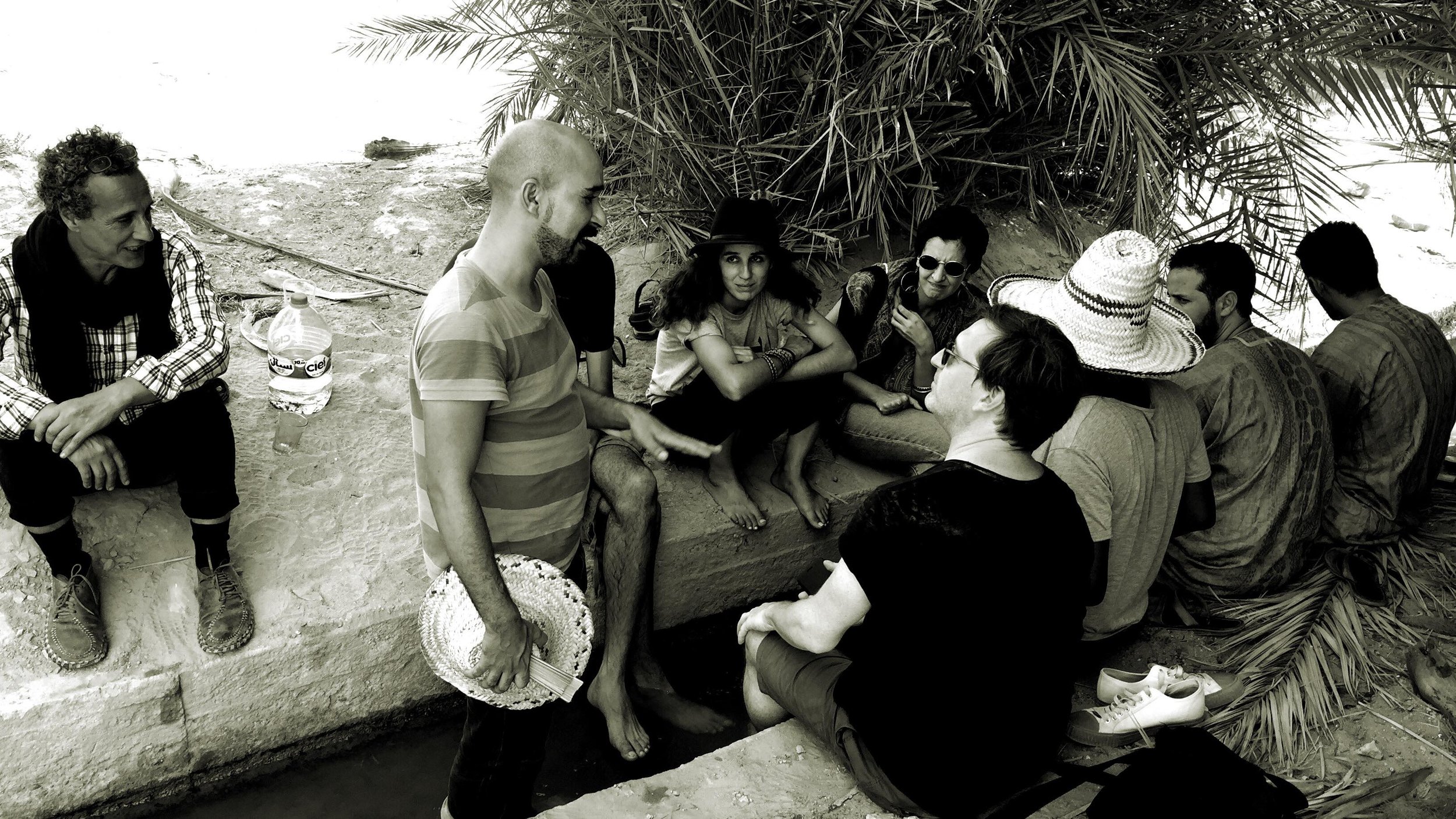

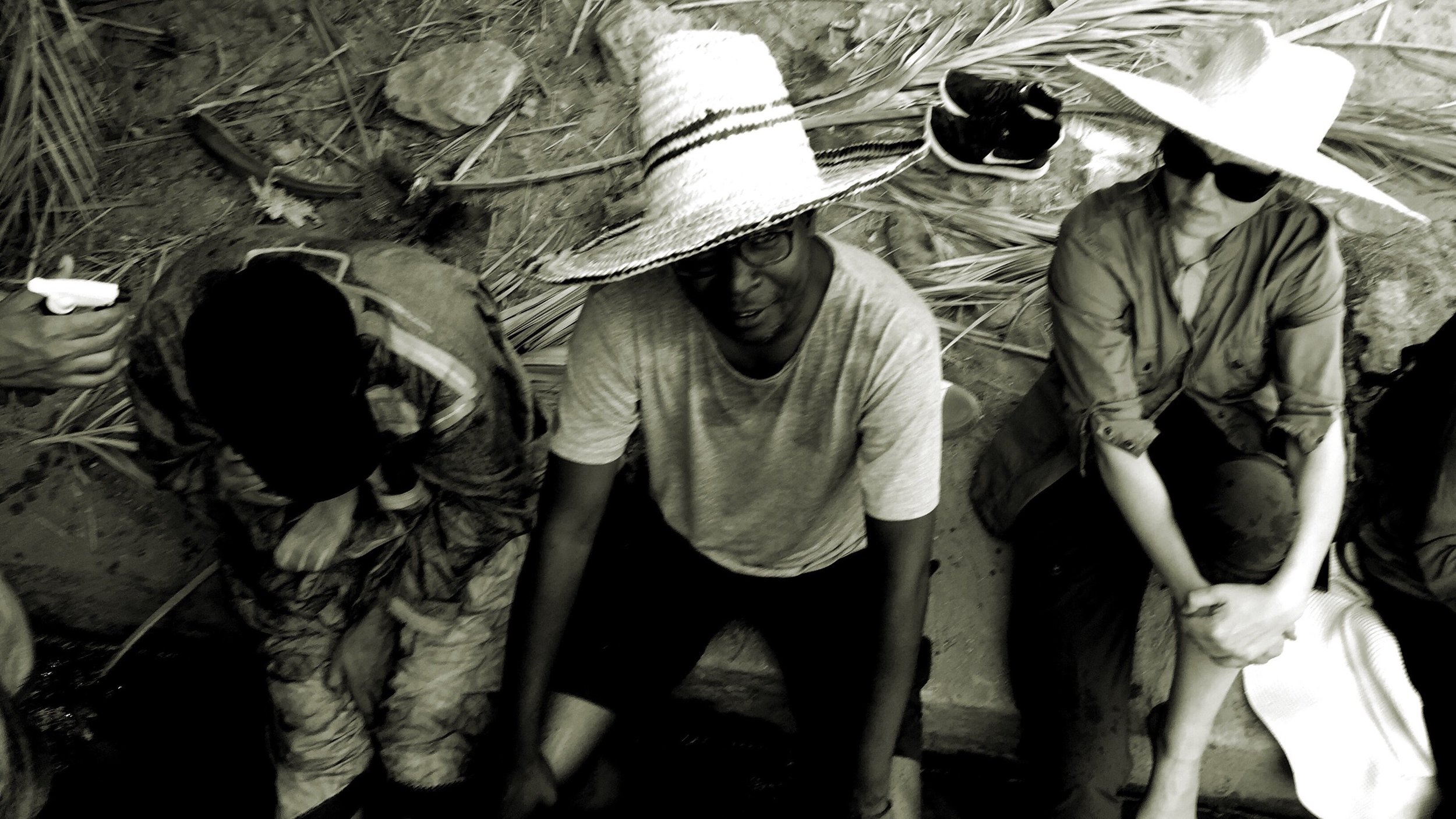
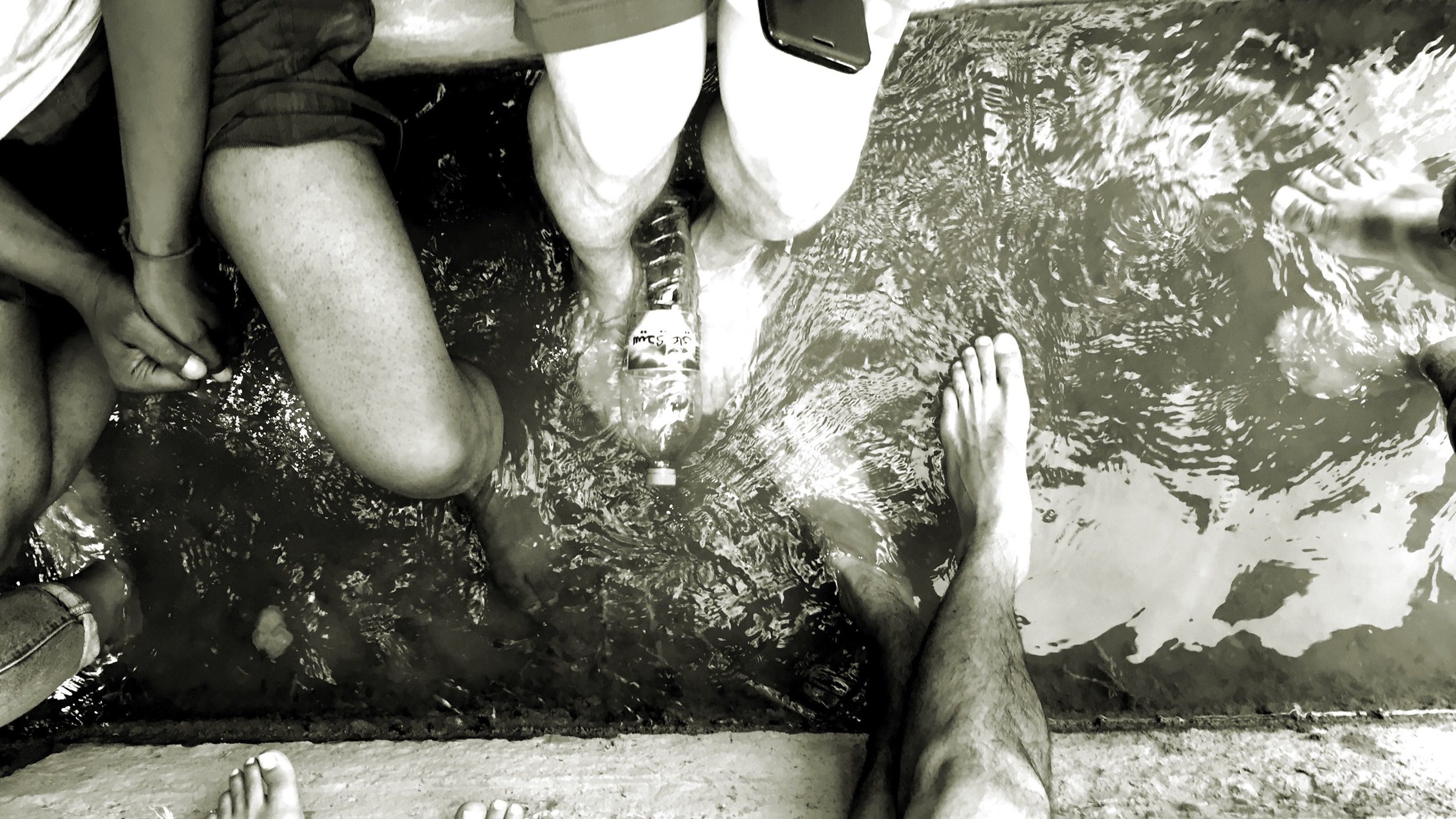


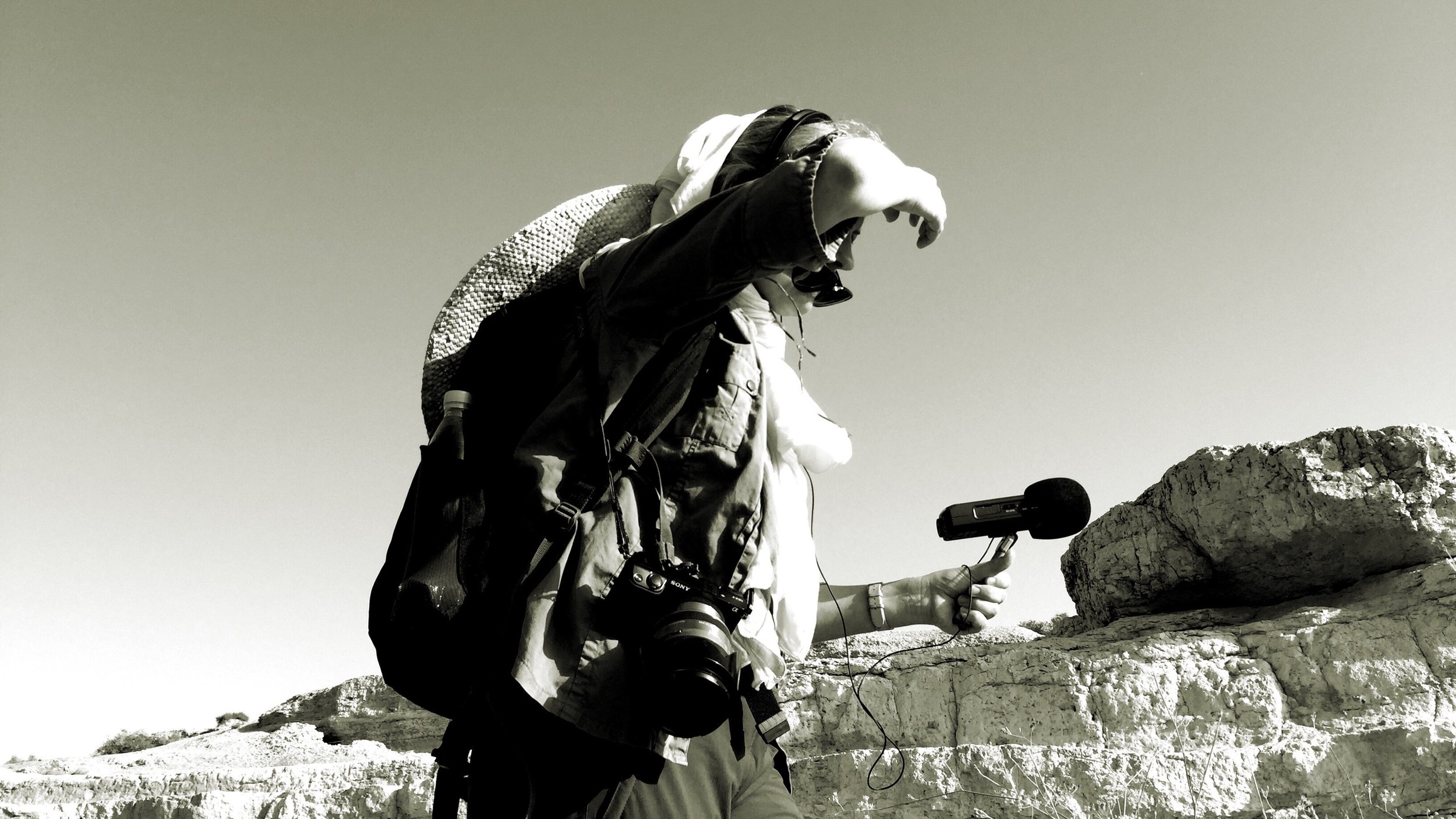


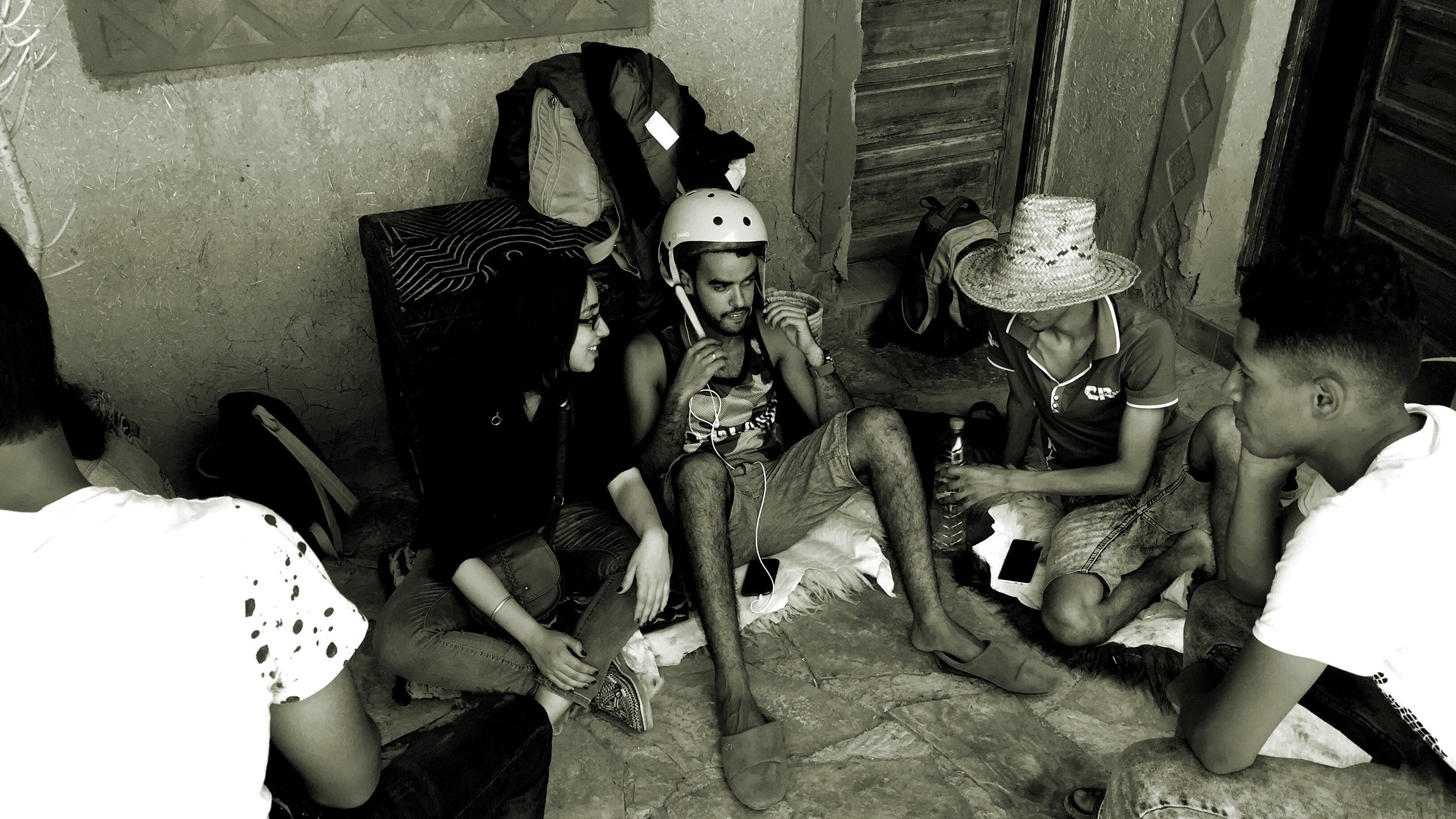


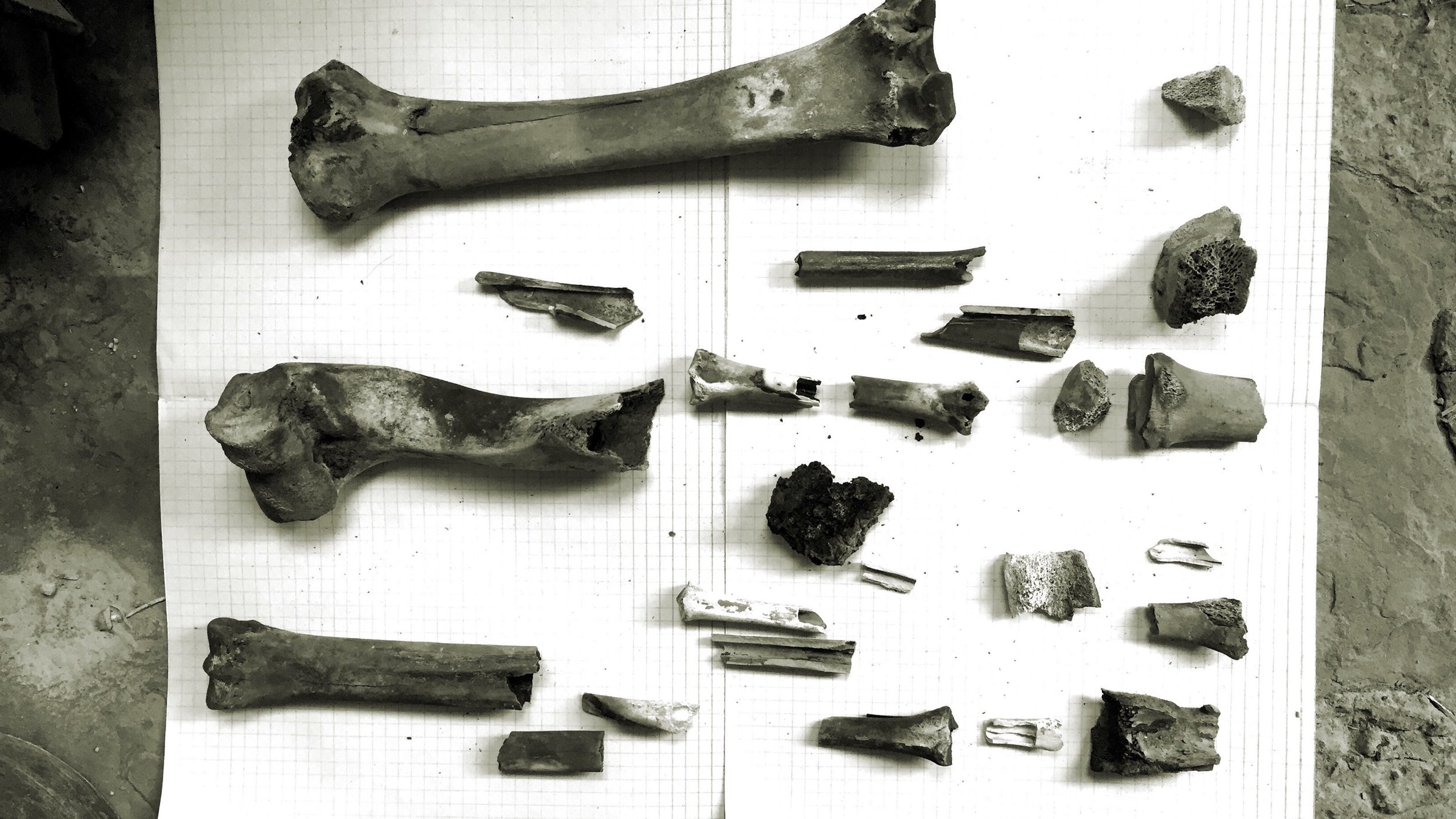

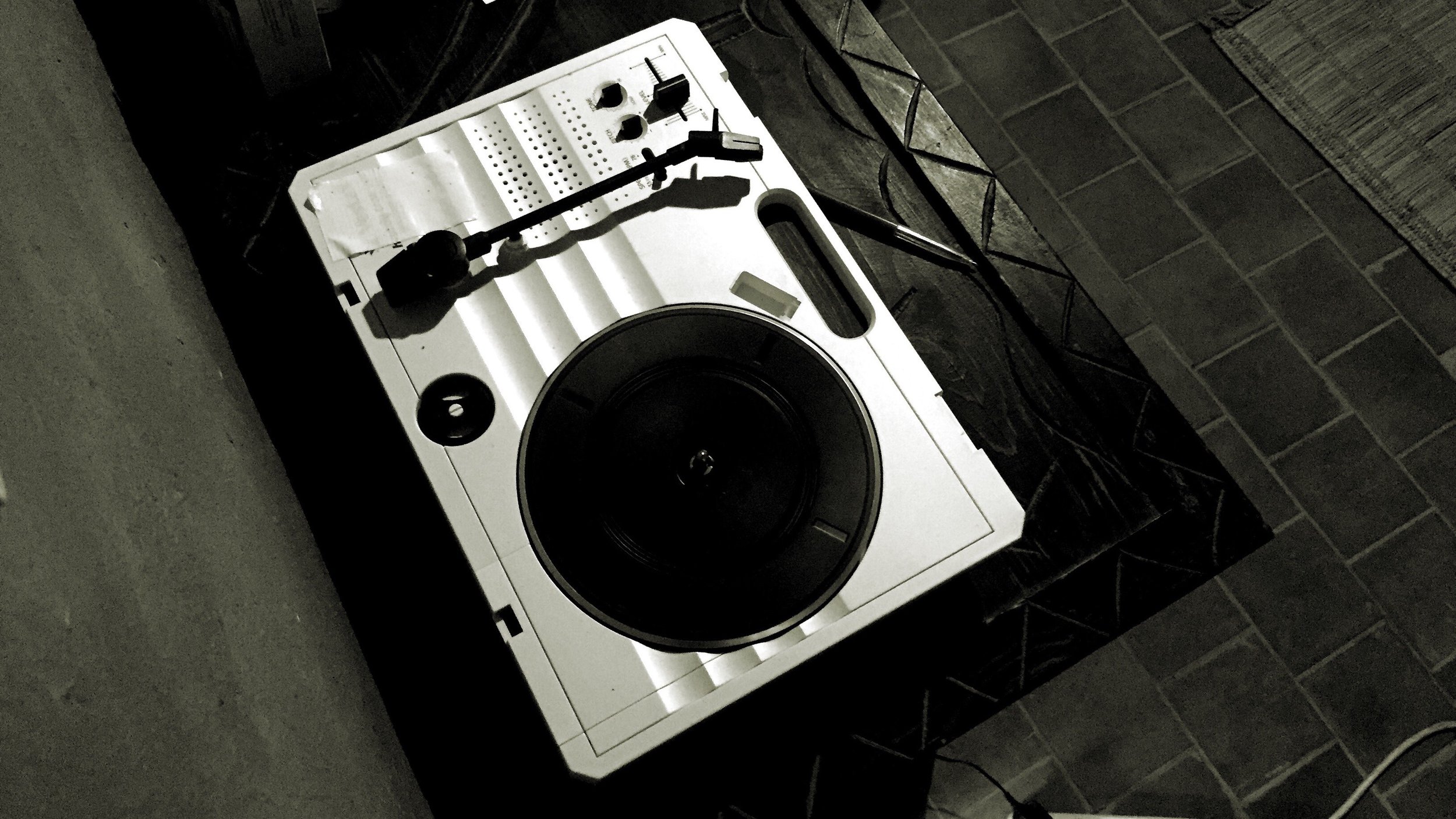

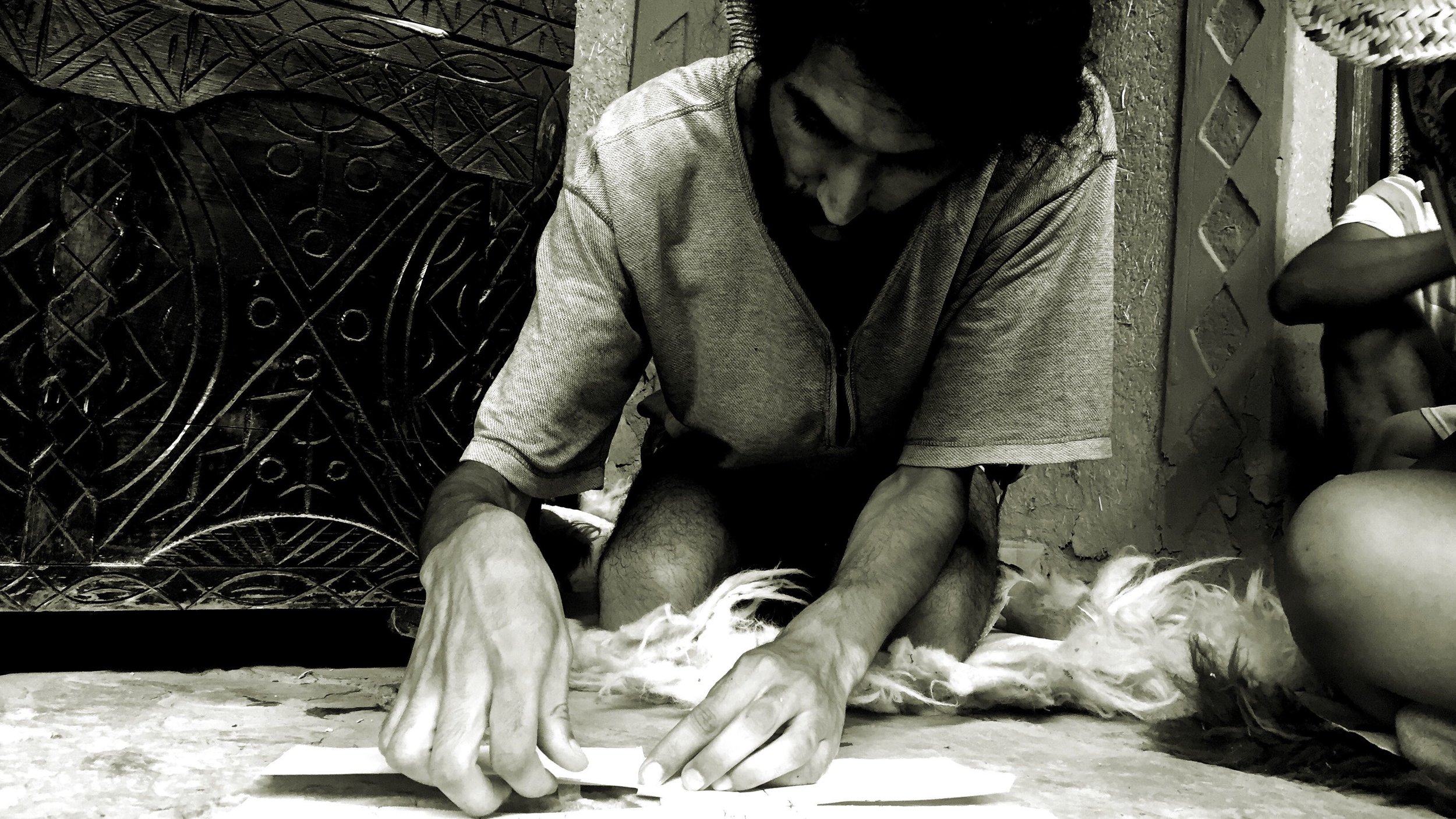
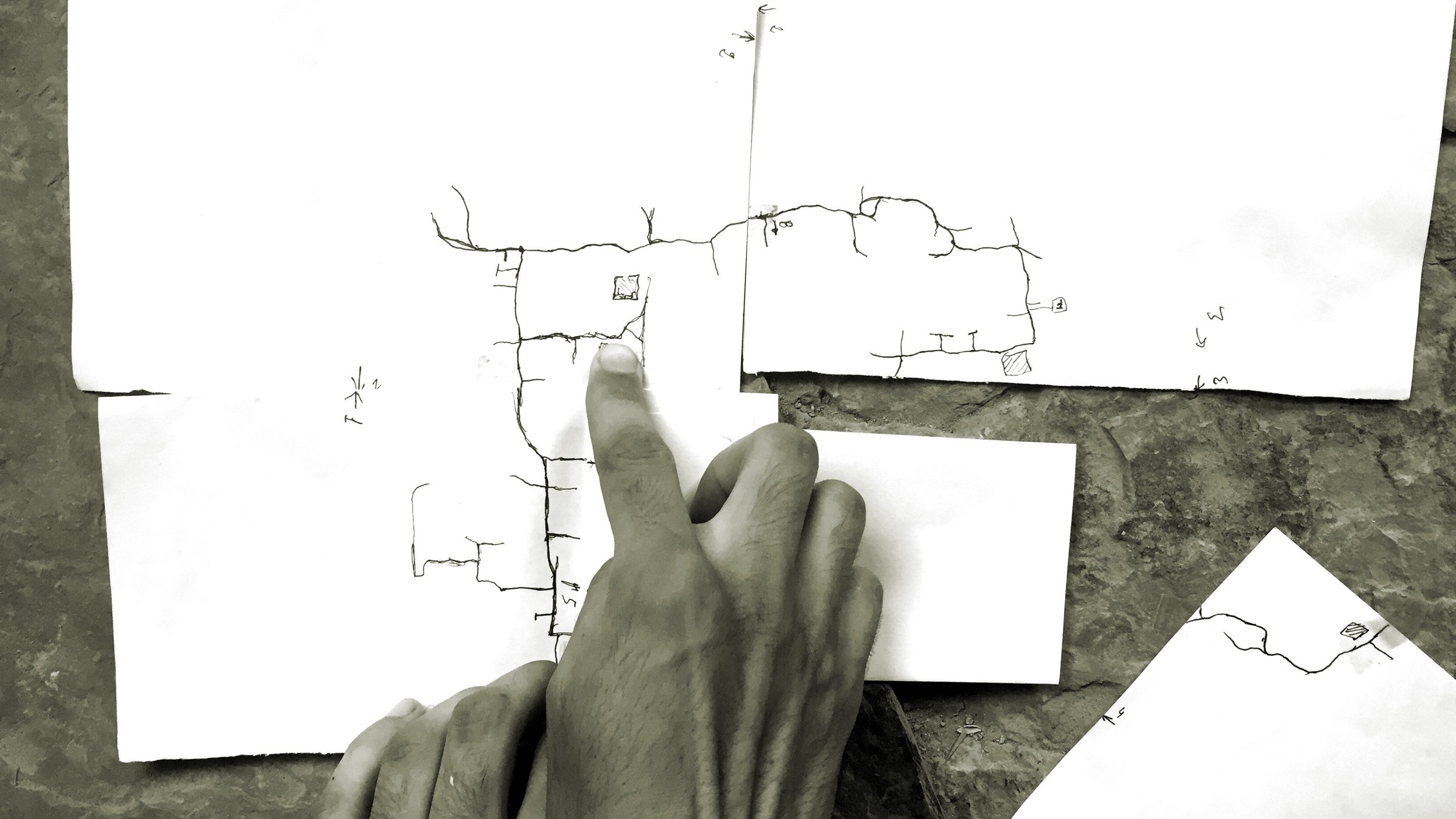



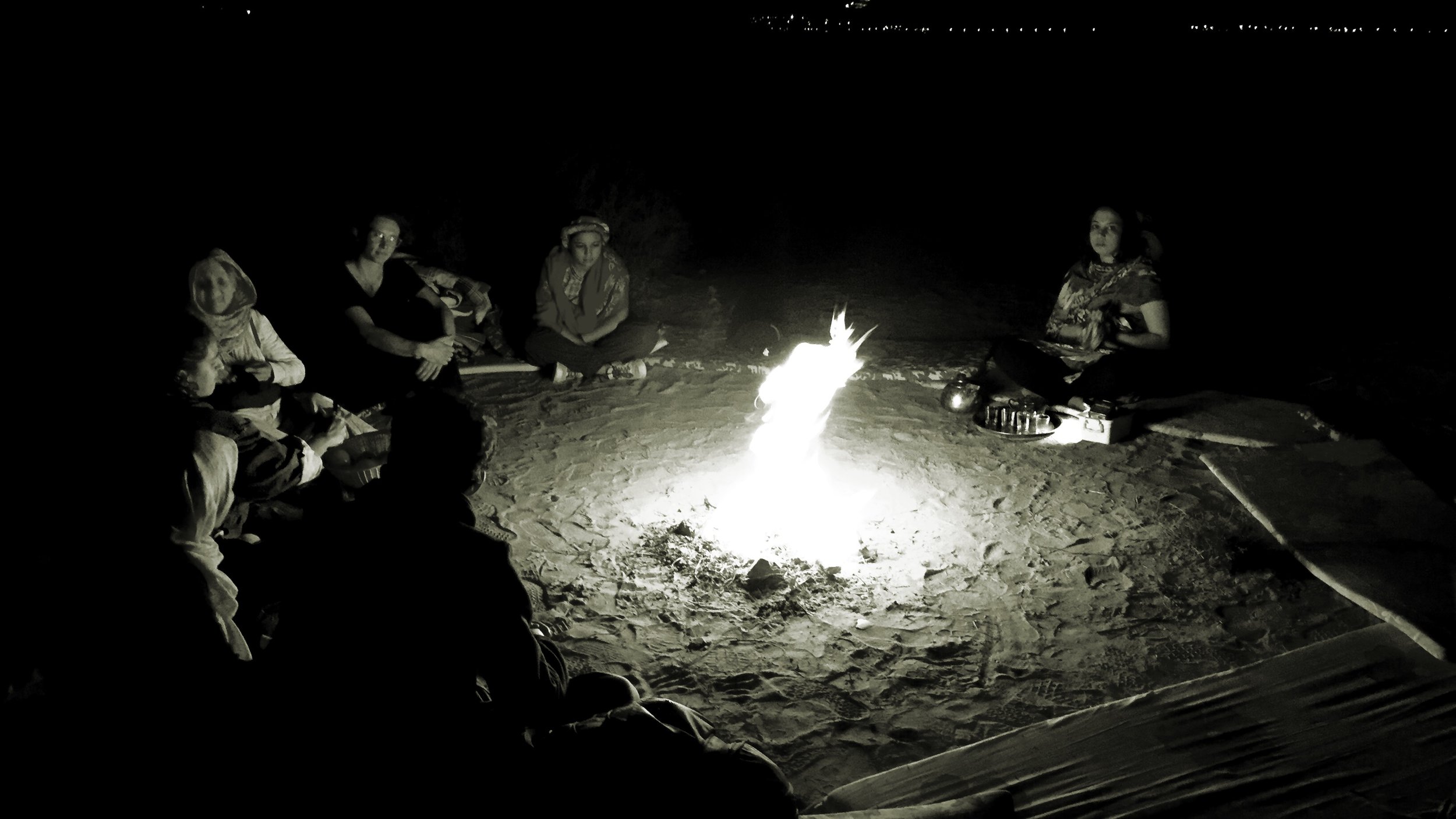



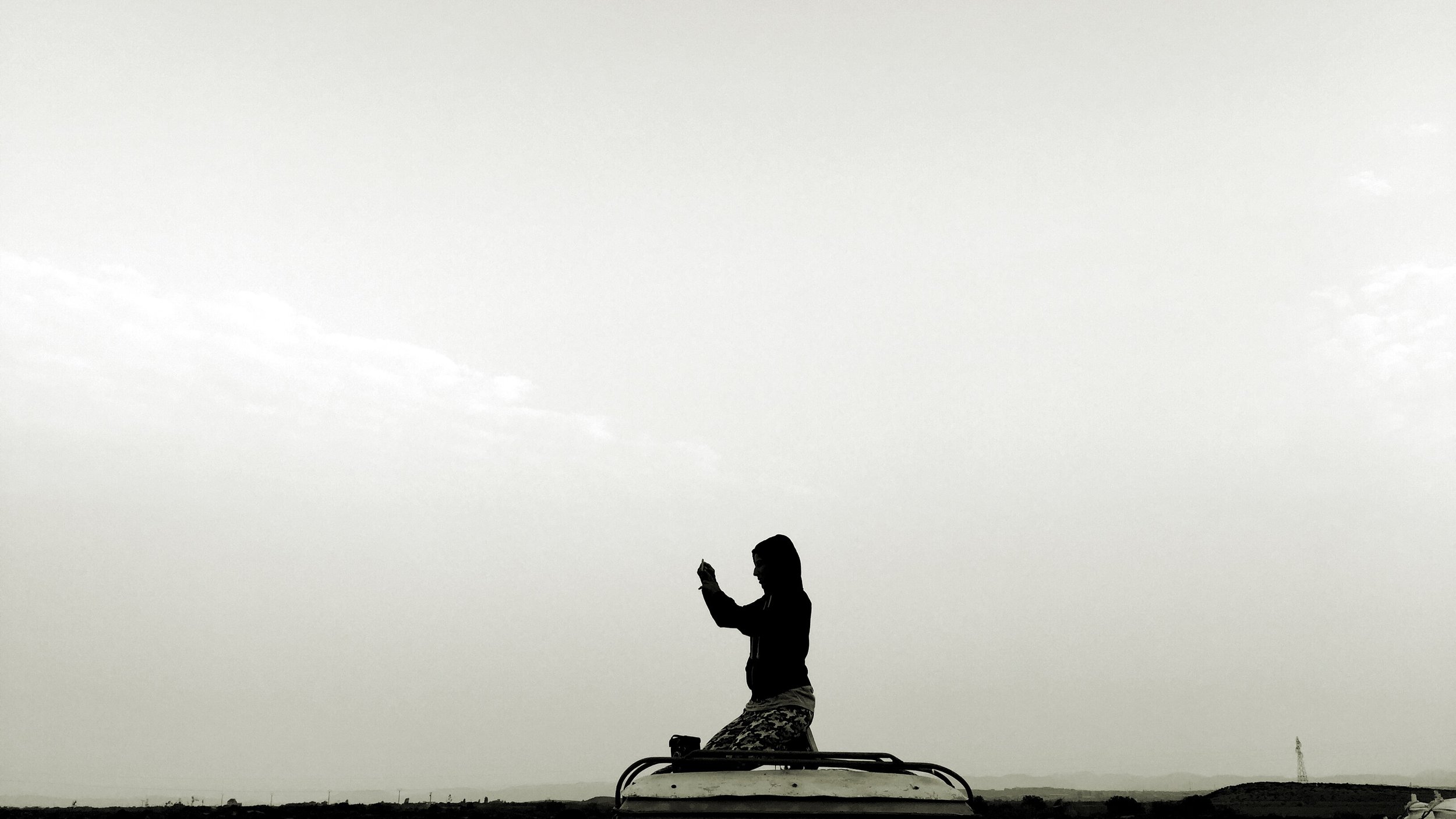
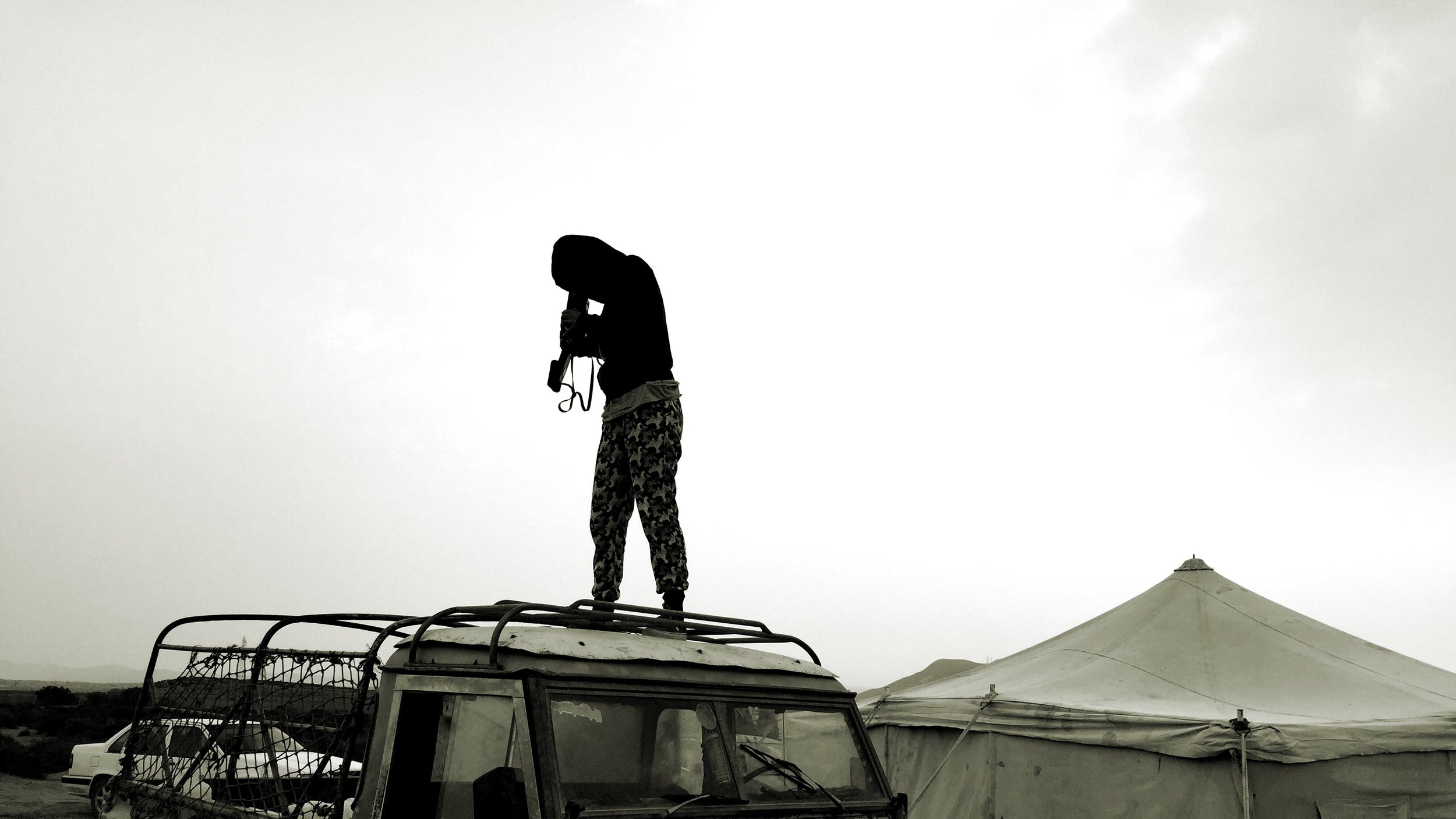
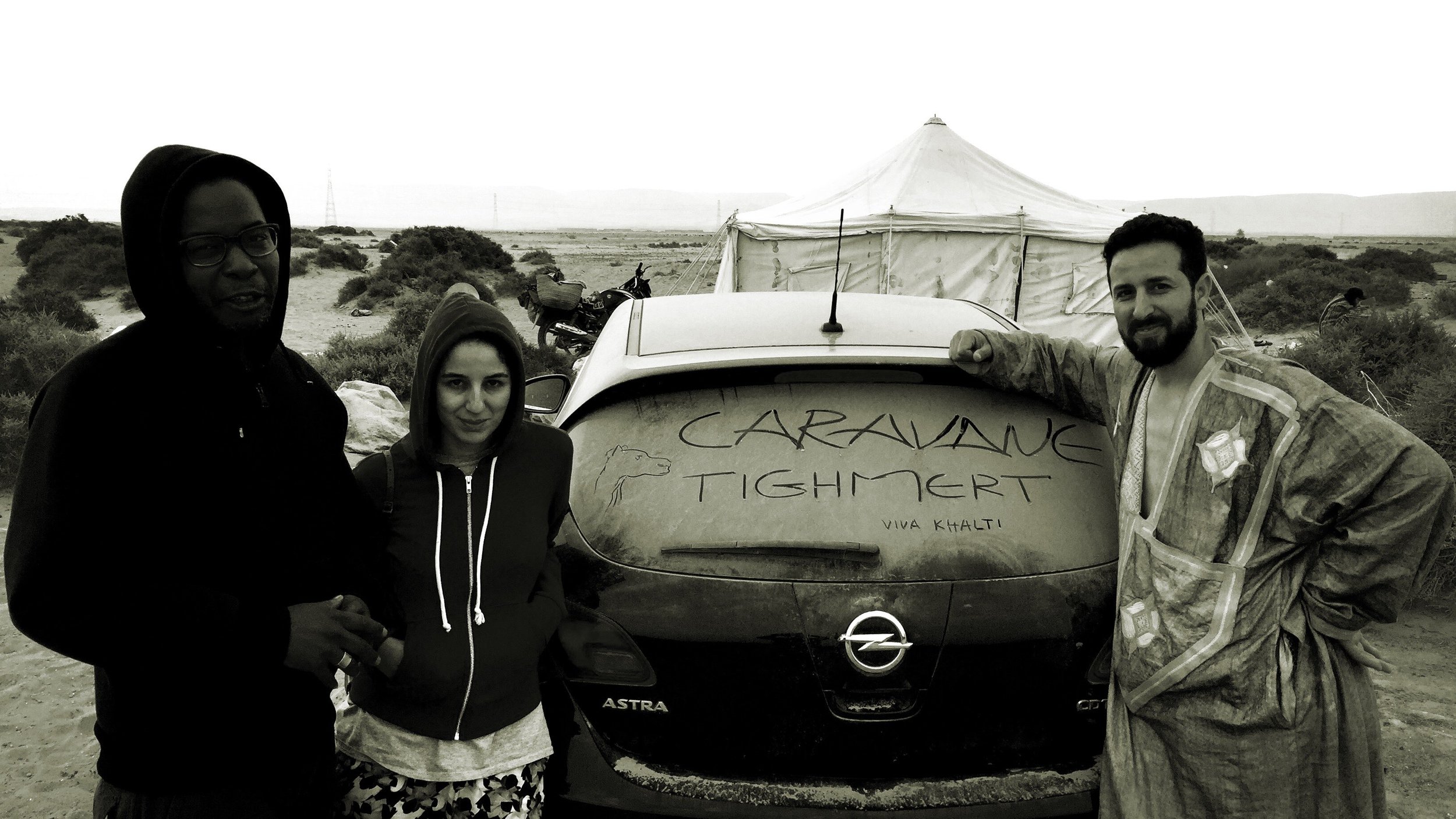
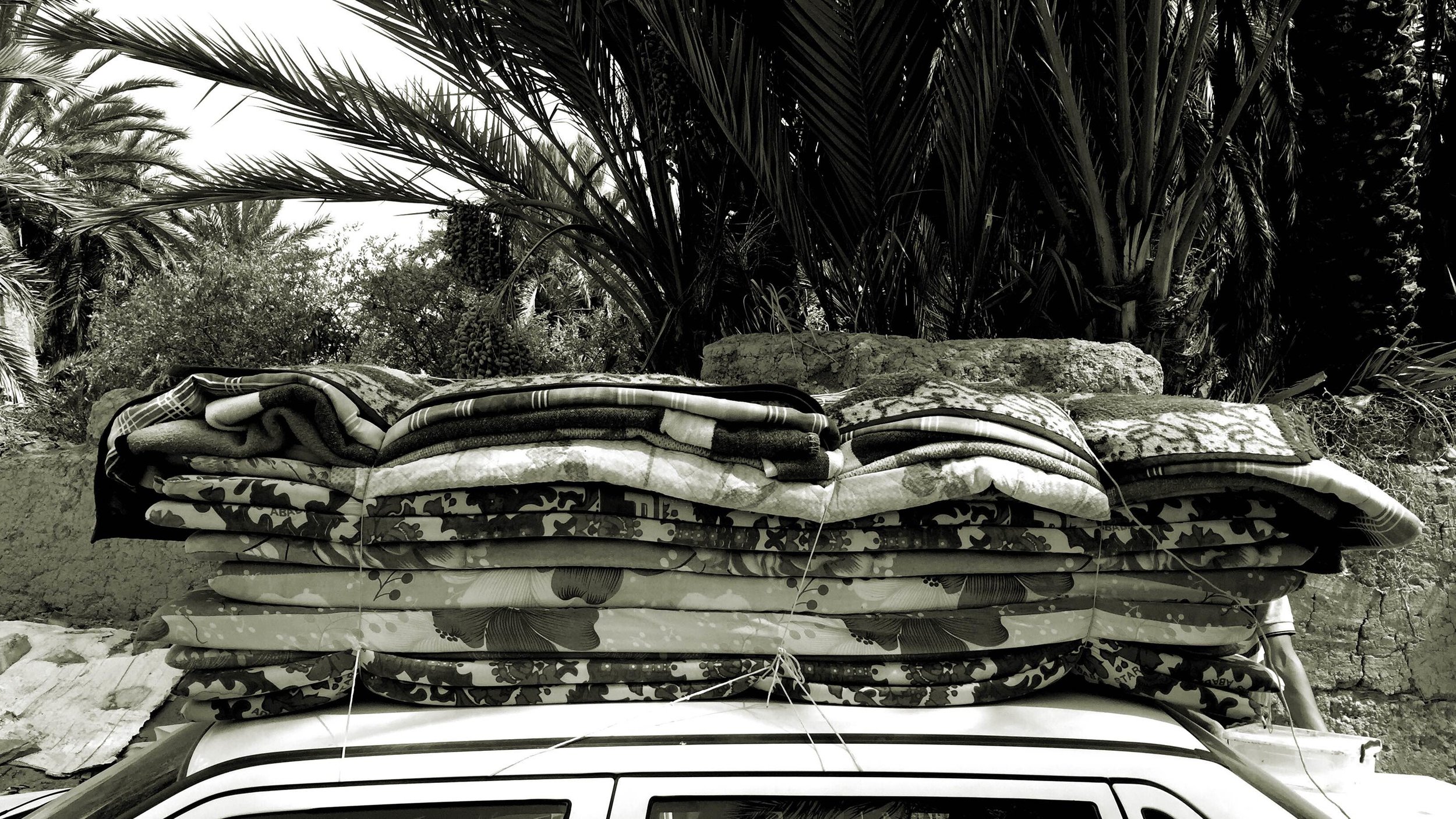
workshops
When artists (Moroccan or not) come for the first time, they do not expect to find such an attitude and creativity in these kids. Marion Lécrivain is a witness of this fact. During her workshop she wanted to do a short film with some children, after one day she realised they were able to tell a story, to propose locations, costumes, even to shoot with the camera... Marion will come again one day to film after the preparatives. You will see on the video one of the kids, his name is Omar, and you will read more information about him, concerning the utility of these workshops, in another one held in 2018...
public screenings
There is one matter we think it is important in order to establish a relationship between artists and oasis inhabitants. When you invite visual artists they can work on an art installation or they can do a workshop, at the end the people of Tighmert will have to opportunity of seeing a result. However, when the artist is a photographer or a film maker, they must process all the material after the event and if they do not come back, the only way of showing the work to those inhabitants is through social medias. For this reason, we wanted to show on a screen the work done in 2016 by Lina Laraki, Claudia Triozzi, Meryem Jazouli and Laila Hida / Mourad Belouadi / Amar Al Bojrad, were projected before the concerts for the public.
It was very interesting the screening of the work developed by Heidi and Gilles in May and July, specially because the women they worked with in the wheat field, came to have dinner with us. They could watch a preview of the film so Heidi and Gilles (with the help of Lotfi with translations) could discuss with them the result. We could also appreciate the difficulties artists have sometimes to explain their work to people do not belong to the contemporary culture field, but we cannot forget, this is one of our goals, to approach contemporary culture to society. The day after, Heidi was not very happy about the discussion with the women, due to the misunderstanding between farm workers and artists questions. I told her that in my opinion, more important than the artistic result, was the strategy we put in practice to approach them and that exchange with women during the recording and after the private screening. I think I did not convince her, but I still believe it is the way to develop contemporary culture in Morocco (and probably in many other places).
As usual, the gathering is an invitation for a collaboration between artists. Gilles asked the others to help him in his researches, giving place to a sound art installation Gilles showed in Germany in November 2017. An amazing example how the desert can be a place for contemporary creations.
Installation by Gilles Aubry at FRISE art space, Hamburg, November 2017. The LPs are faulty copies of Aubry’s latest music publication “and who sees the mystery” on Corvo records, which have been further processed during a residency in Tighmert, an oasis in the south-west of Morocco. While the audio content on the original record is made of electroacoustic experiments with sound-check recordings of traditional Berber-Amazigh music instruments, the record surfaces have been physically altered by using found objects in the oasis in collaboration with several moroccan artists. Each record has become a unique sound object bearing the material traces of the manipulations by the artists, which are also documented in the installation through a series of photographs. By returning the records to Morocco after their industrial manufacturing in Germany, the work questions the circulation of, access to, and authorship of cultural goods in the global context of cultural extraction, folklorization and commodification. With artistic contributions by: Mohamed Arejdal, M’barek Bouhchichi, Dounia Fikri and Lotfi Souidi. Info www.earpolitics.net
music
In each edition we have tried to improve activities related to music. After trying a new location for the stage in 2016, next to the museum, and listening the advices of friends, we decided to change it, again, using the same site people use for the Slave Festival, in a more central situation in the oasis. We really think this is the best place for the concerts.
While we tried to schedule the concerts, we received some messages asking us to play during Caravane Tighmert, from local musicians but also musicians from Guelmim and even from Sidi Ifni. We though we were going to consecrate only three days to concerts, but at the end we had five nights, with the video art screenings, the concerts and the theatre play by a group from Sidi Ifni. Nobody was paid to play and thanks to Sahara Noise Communication (they offered us the stage for free), we could enjoy the regional music and the fact of seeing young people from other cities, discovering the oasis and establishing relationships with locals. However, we have not been aware of the importance of these concerts until one year later...
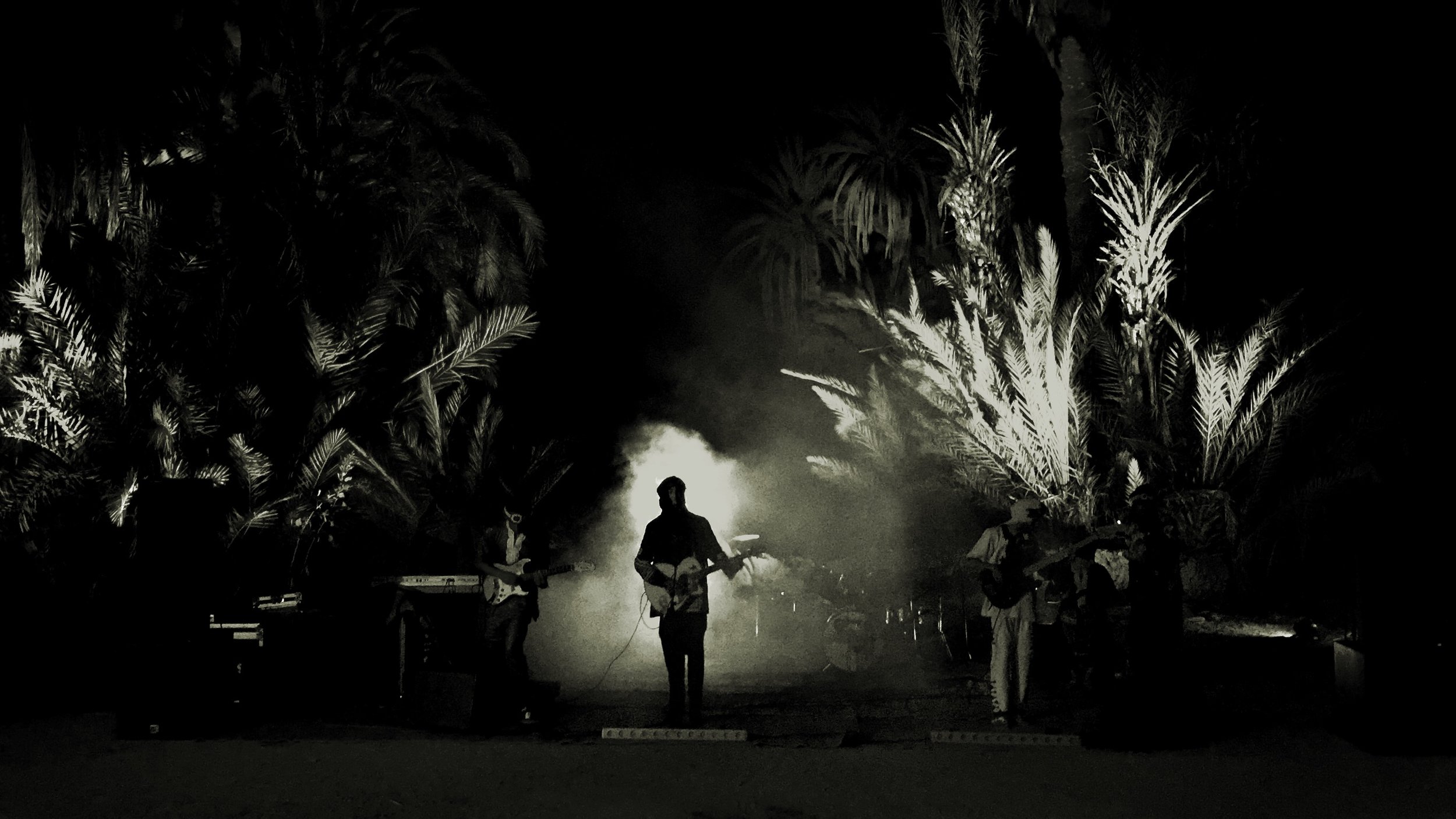
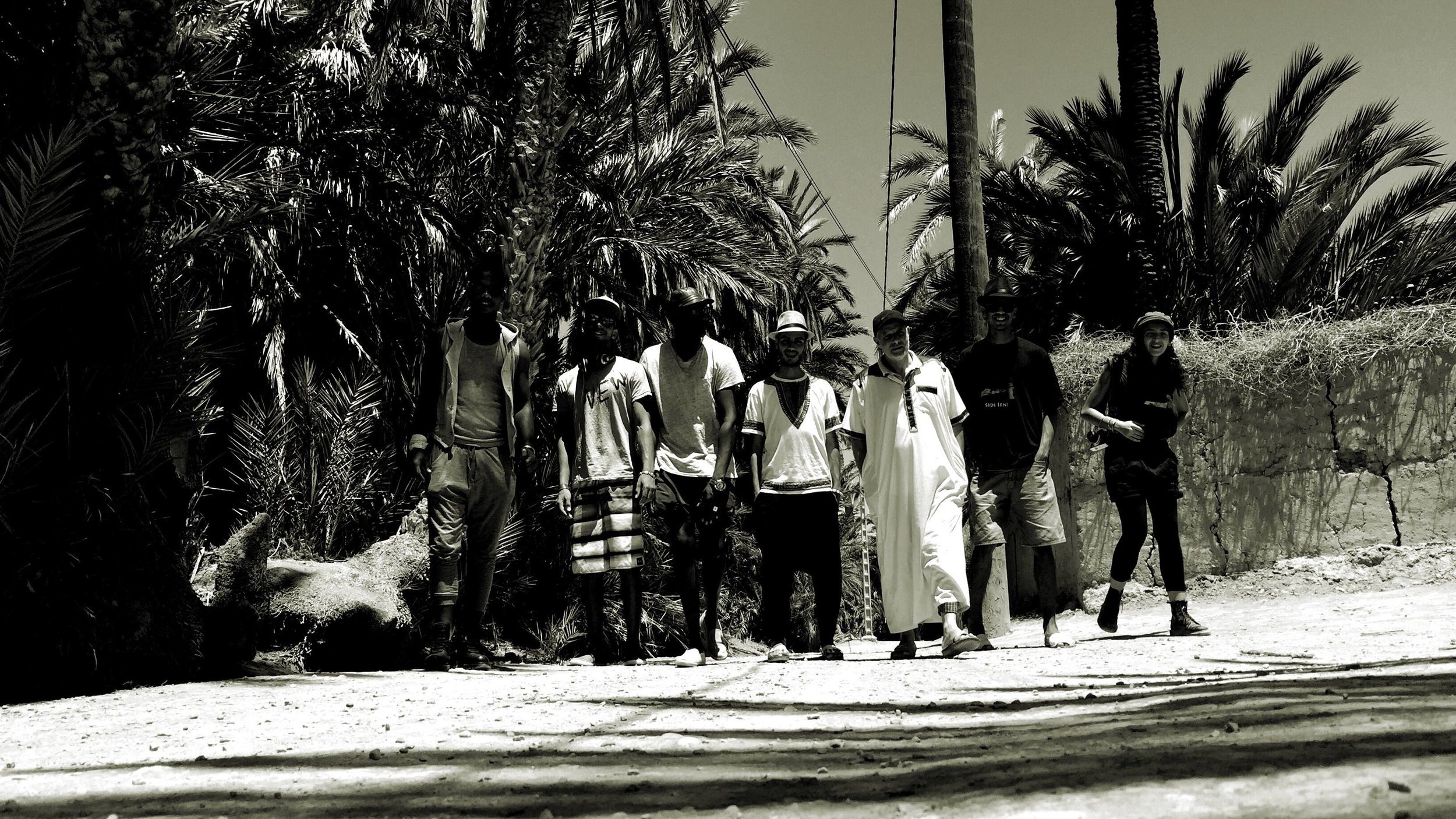
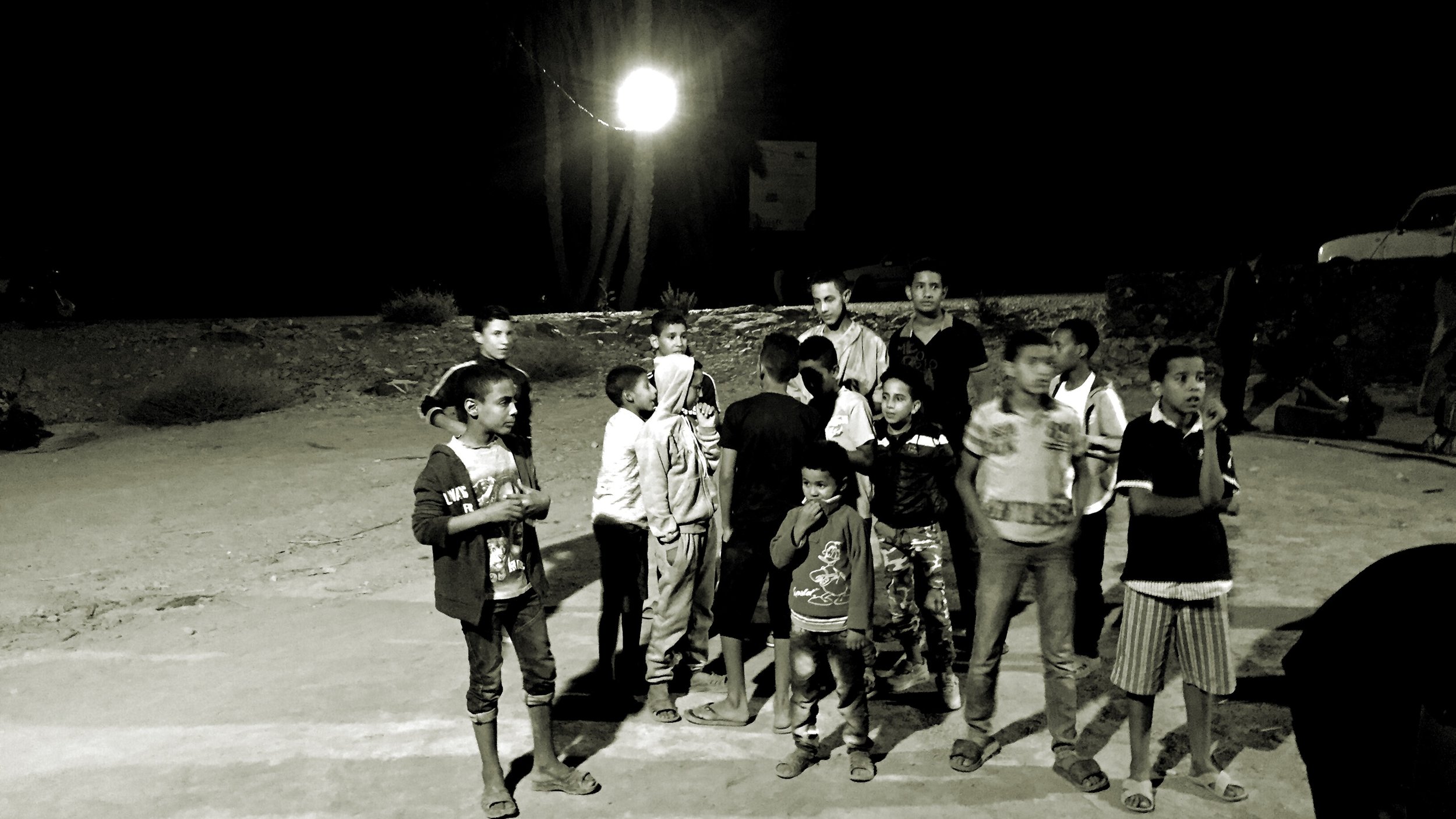

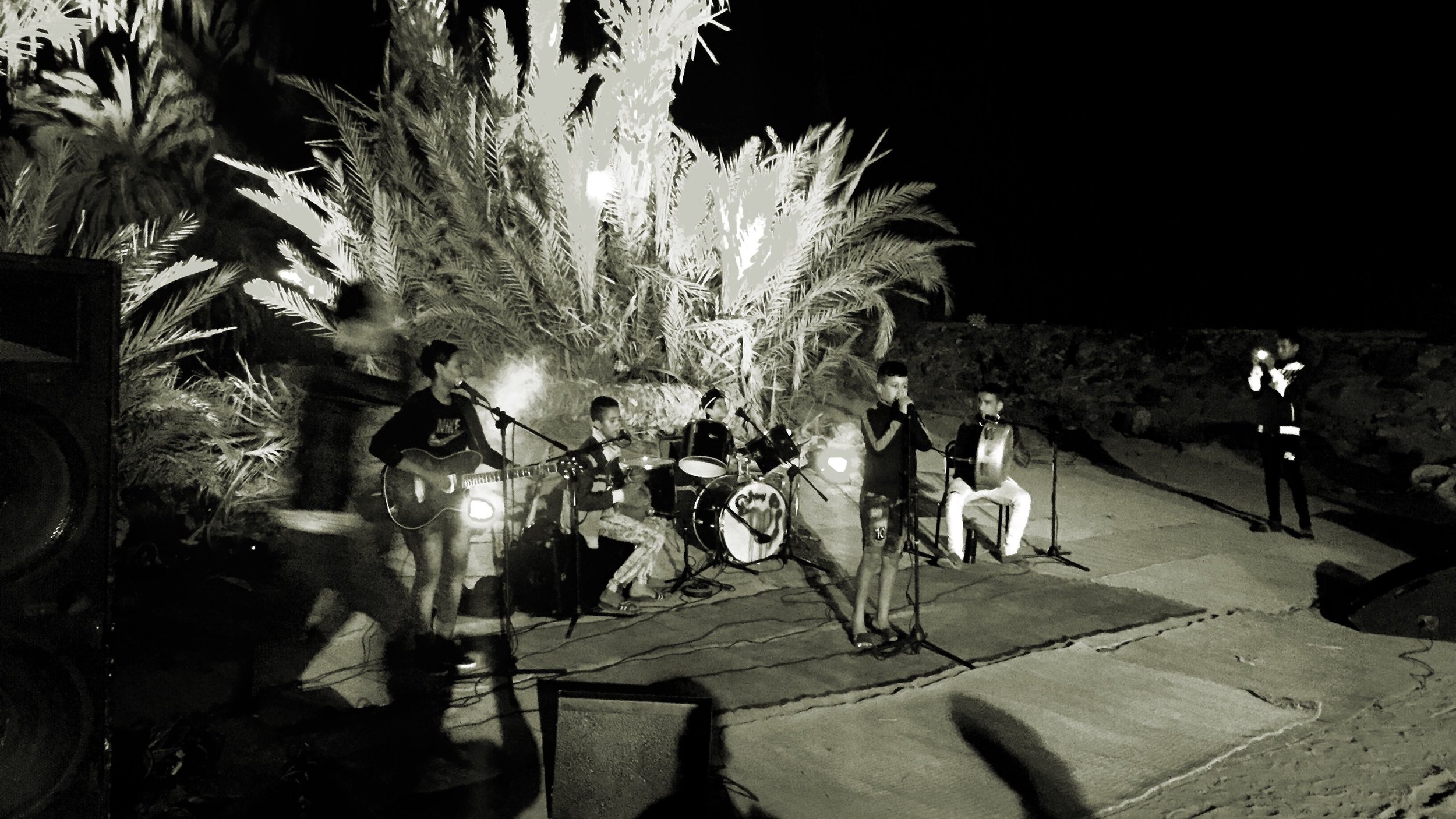
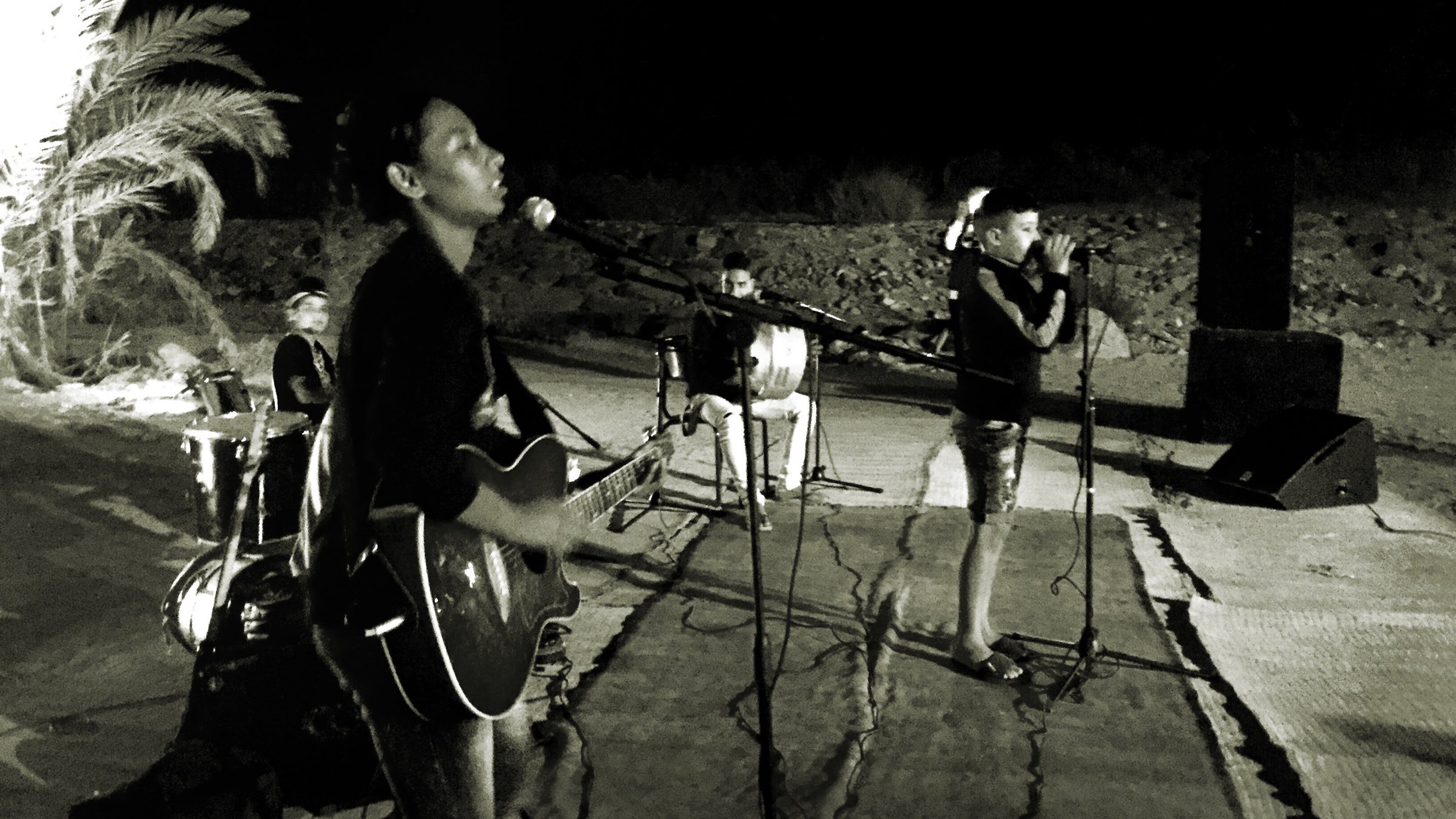
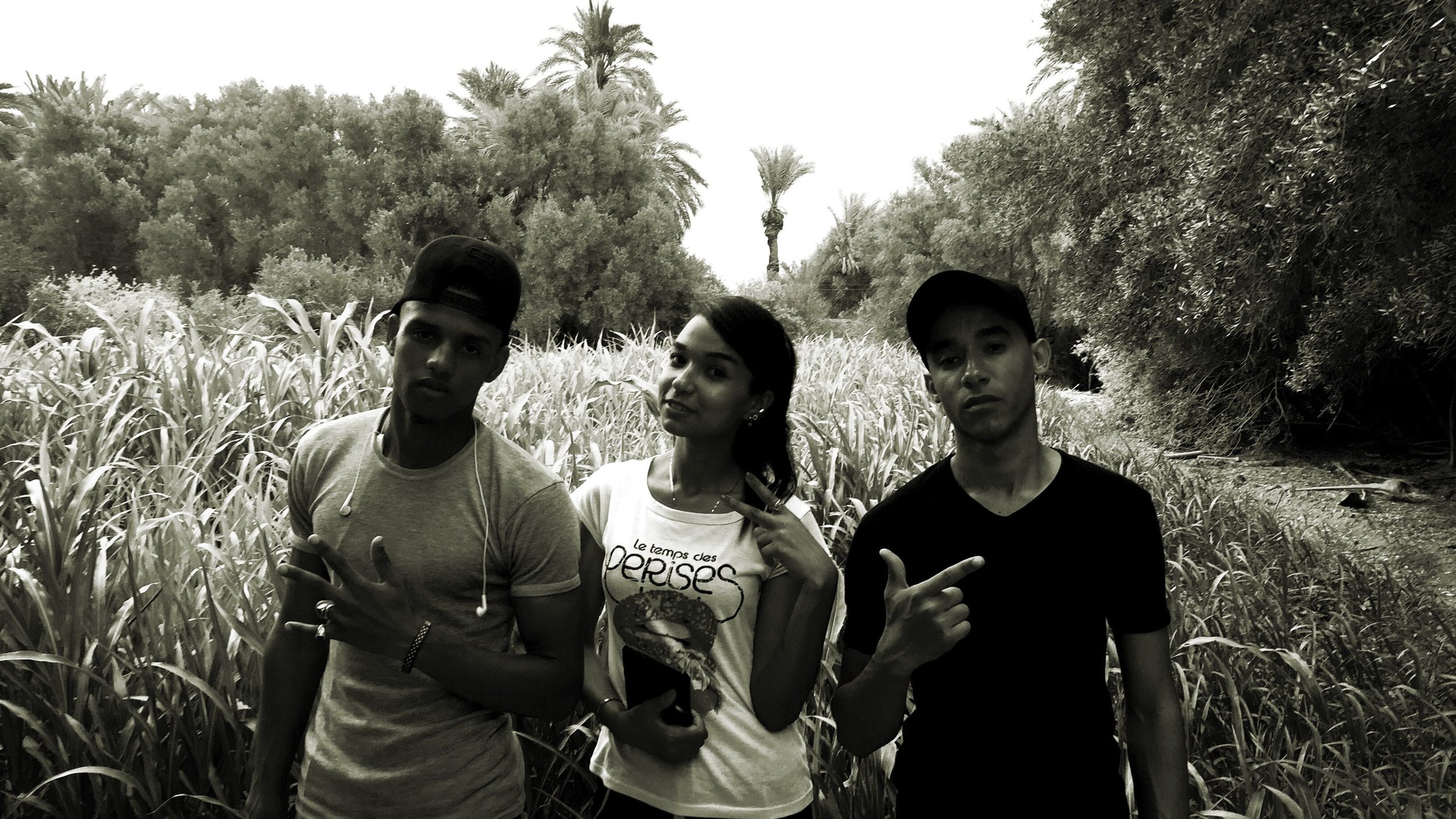
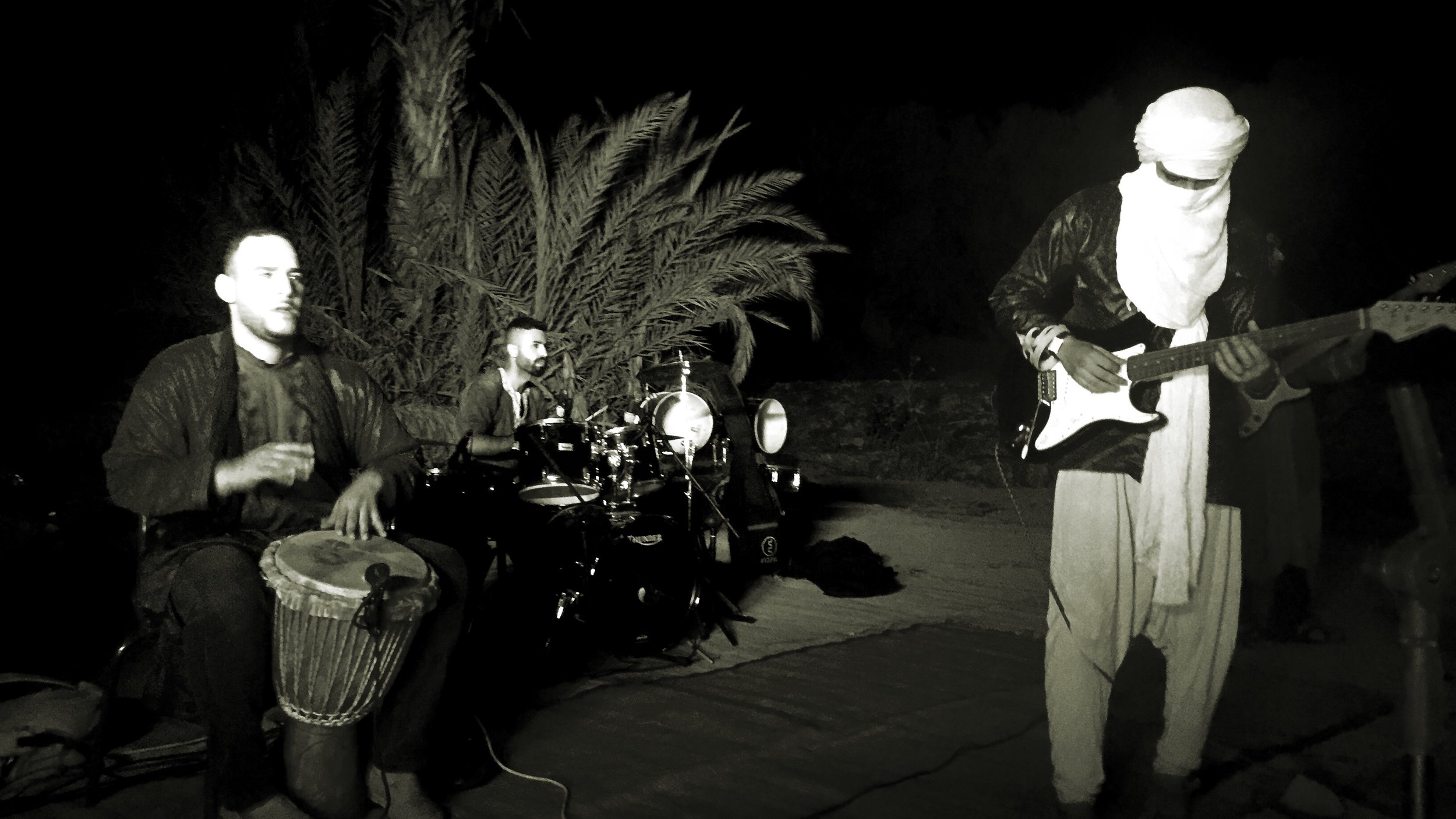
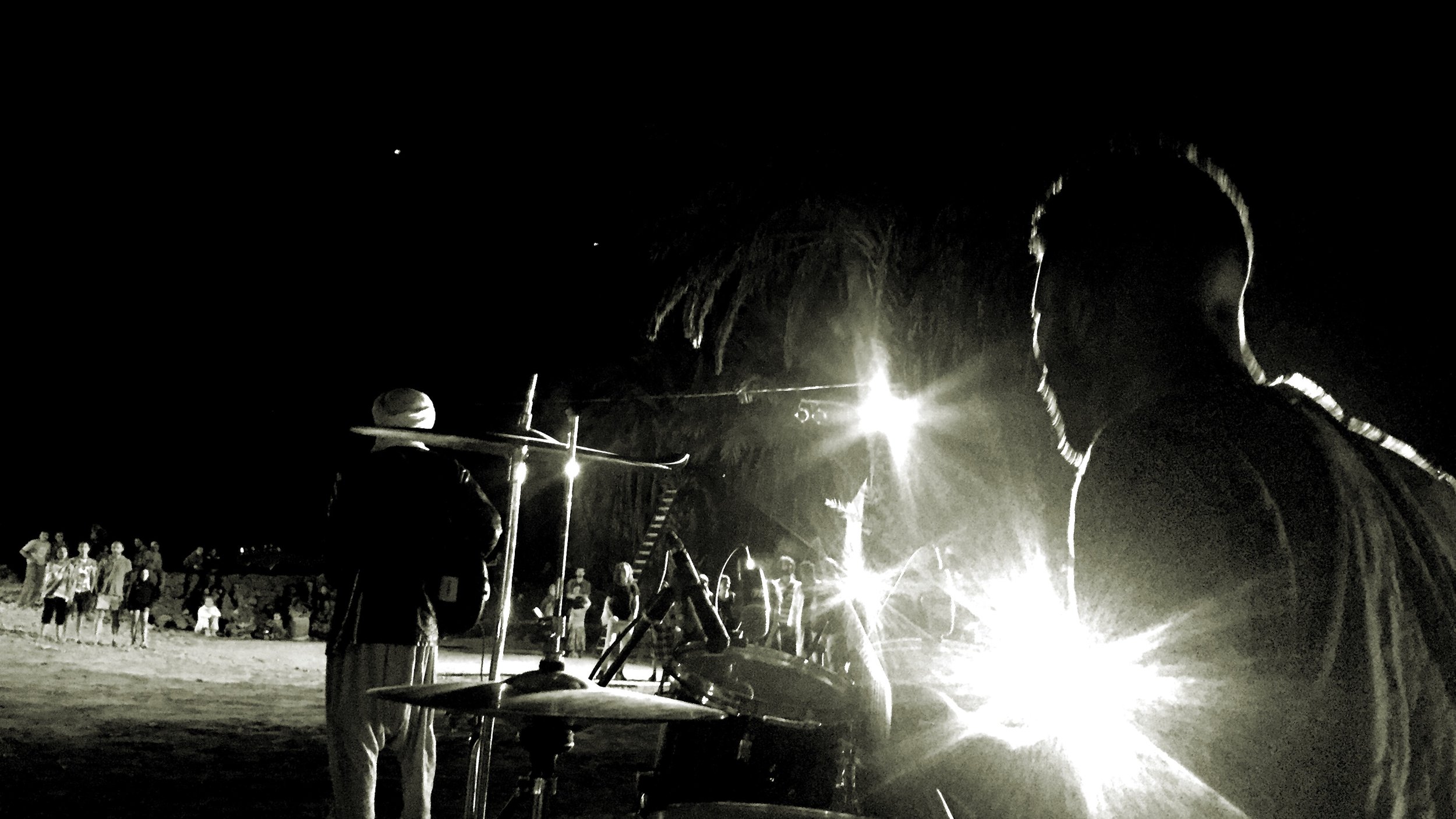

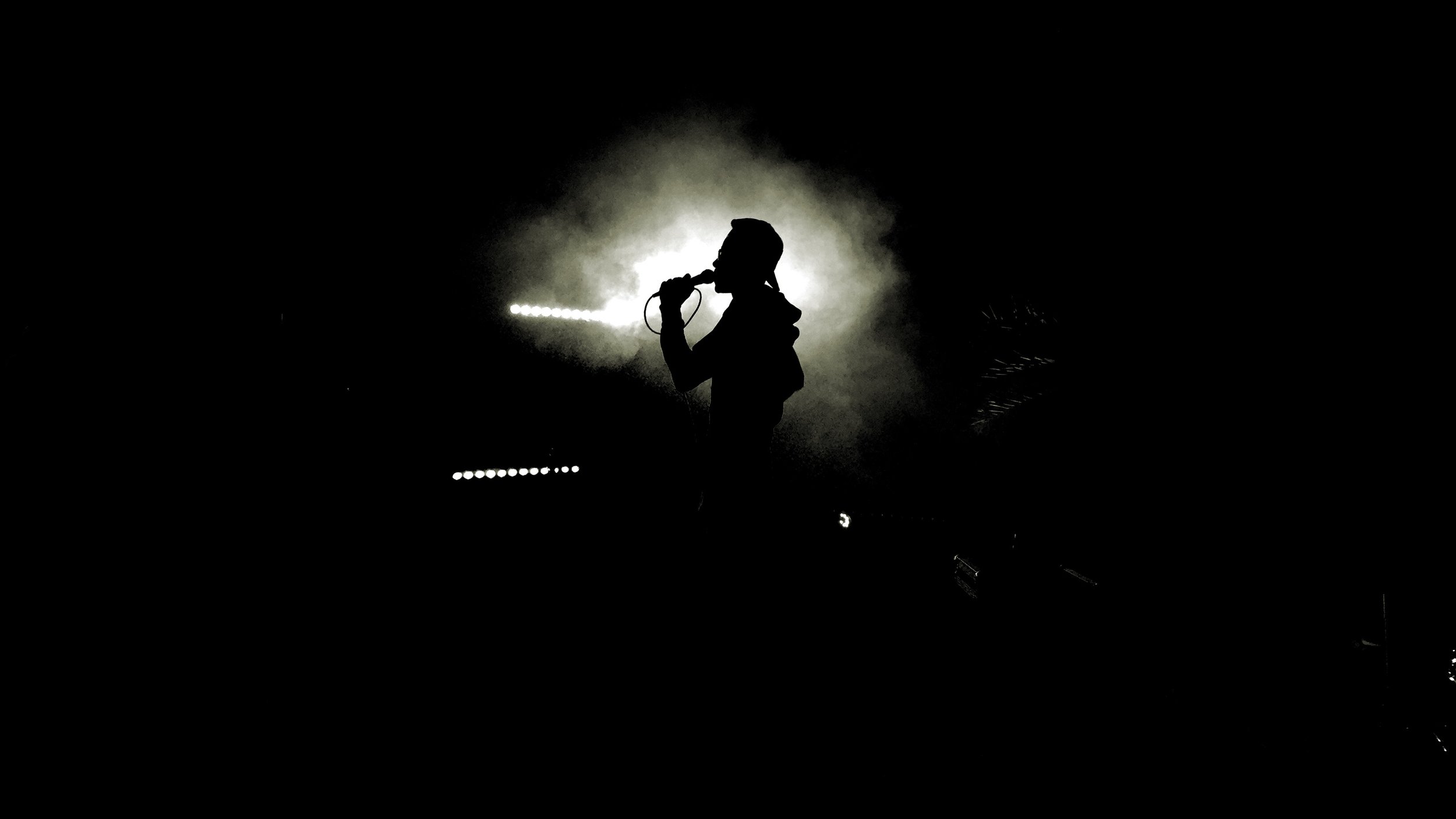
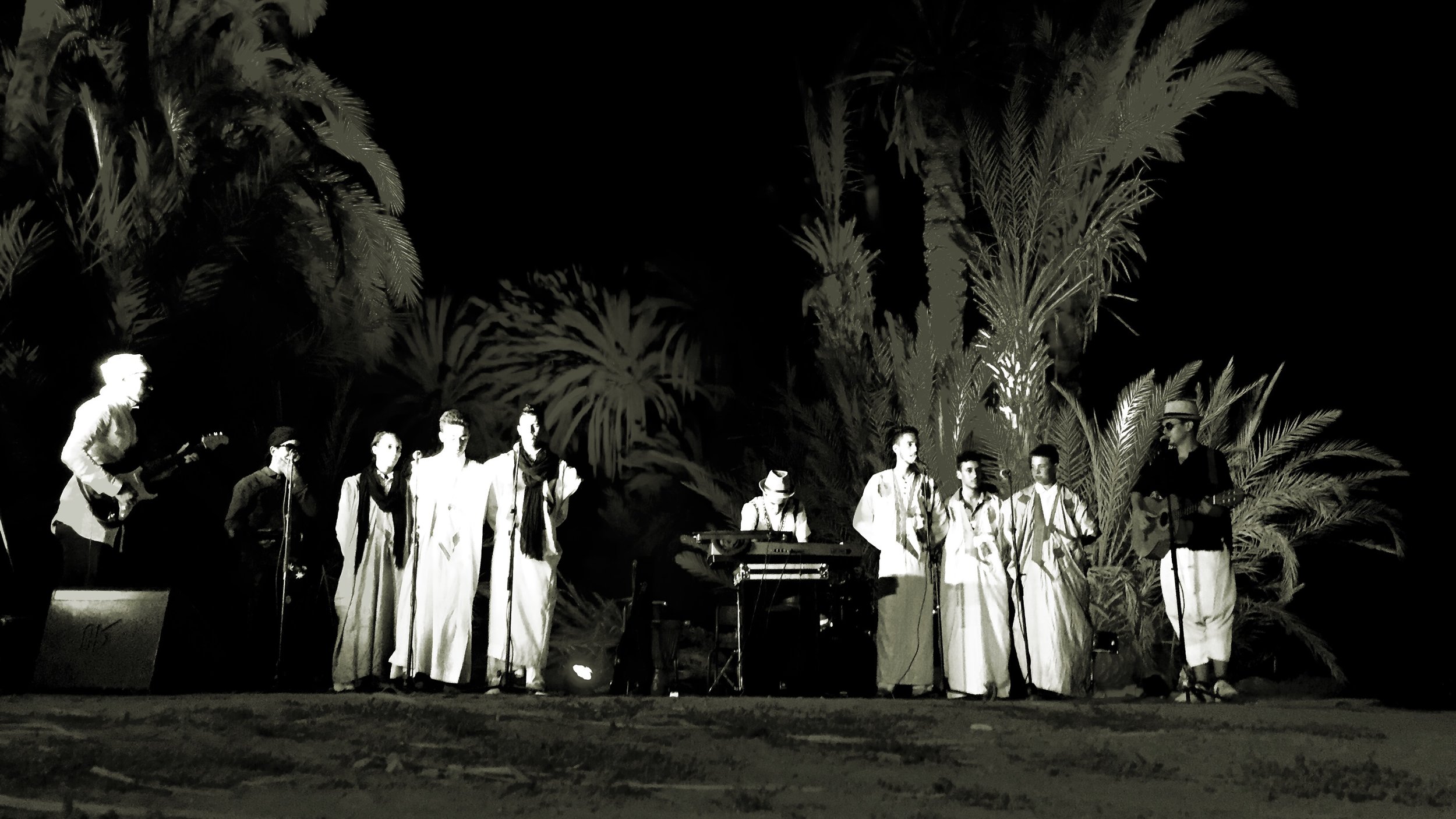
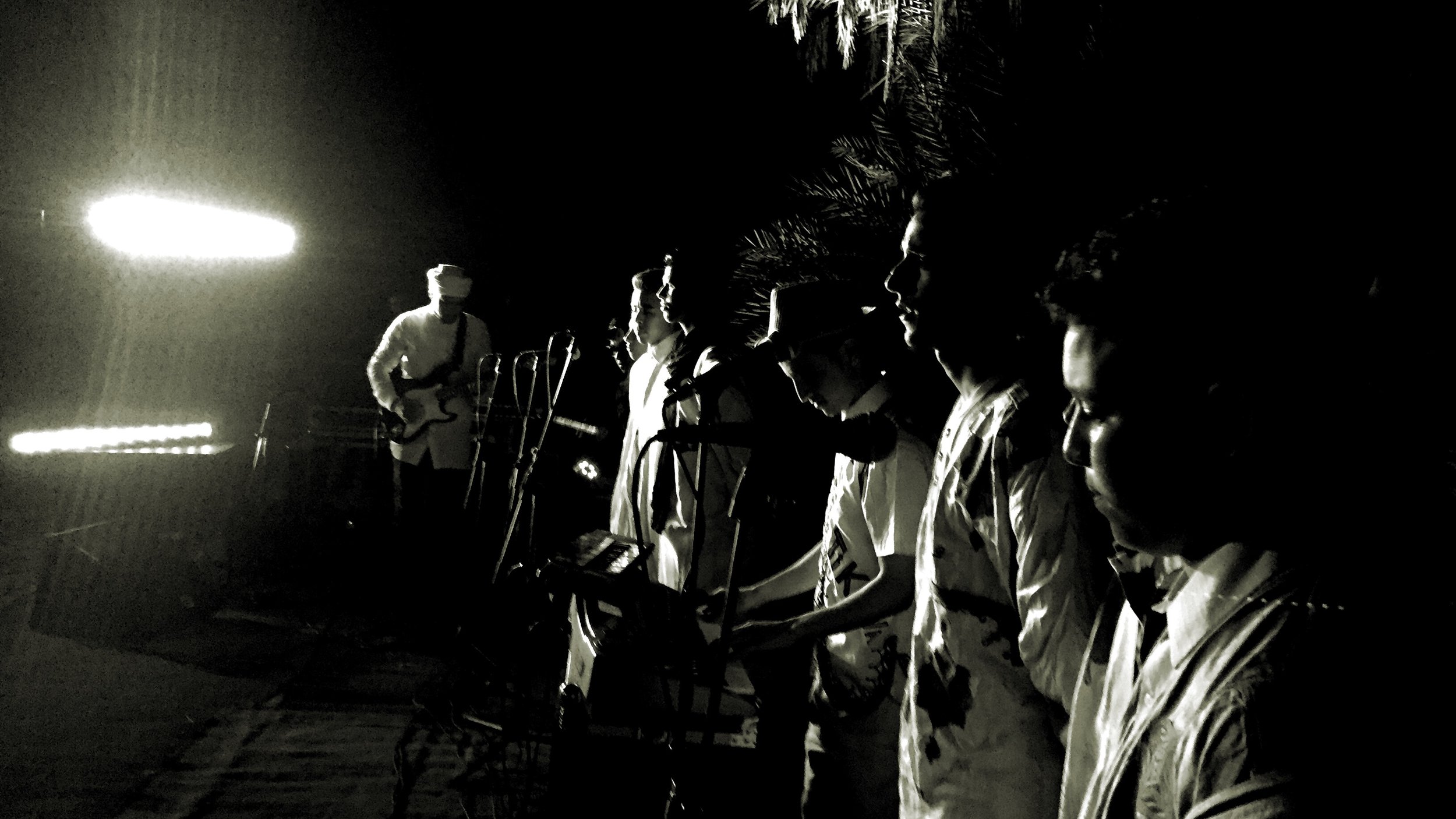

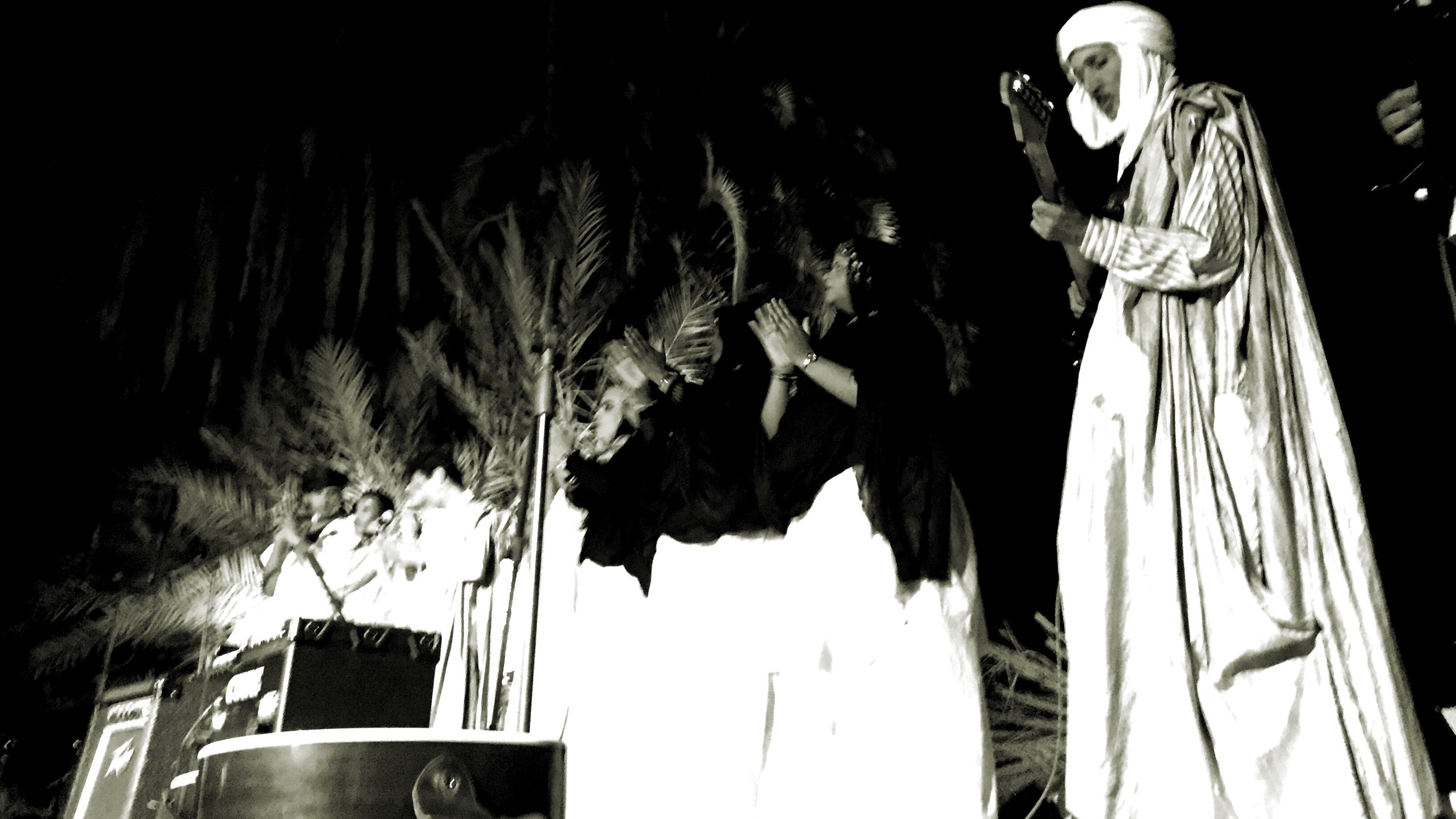
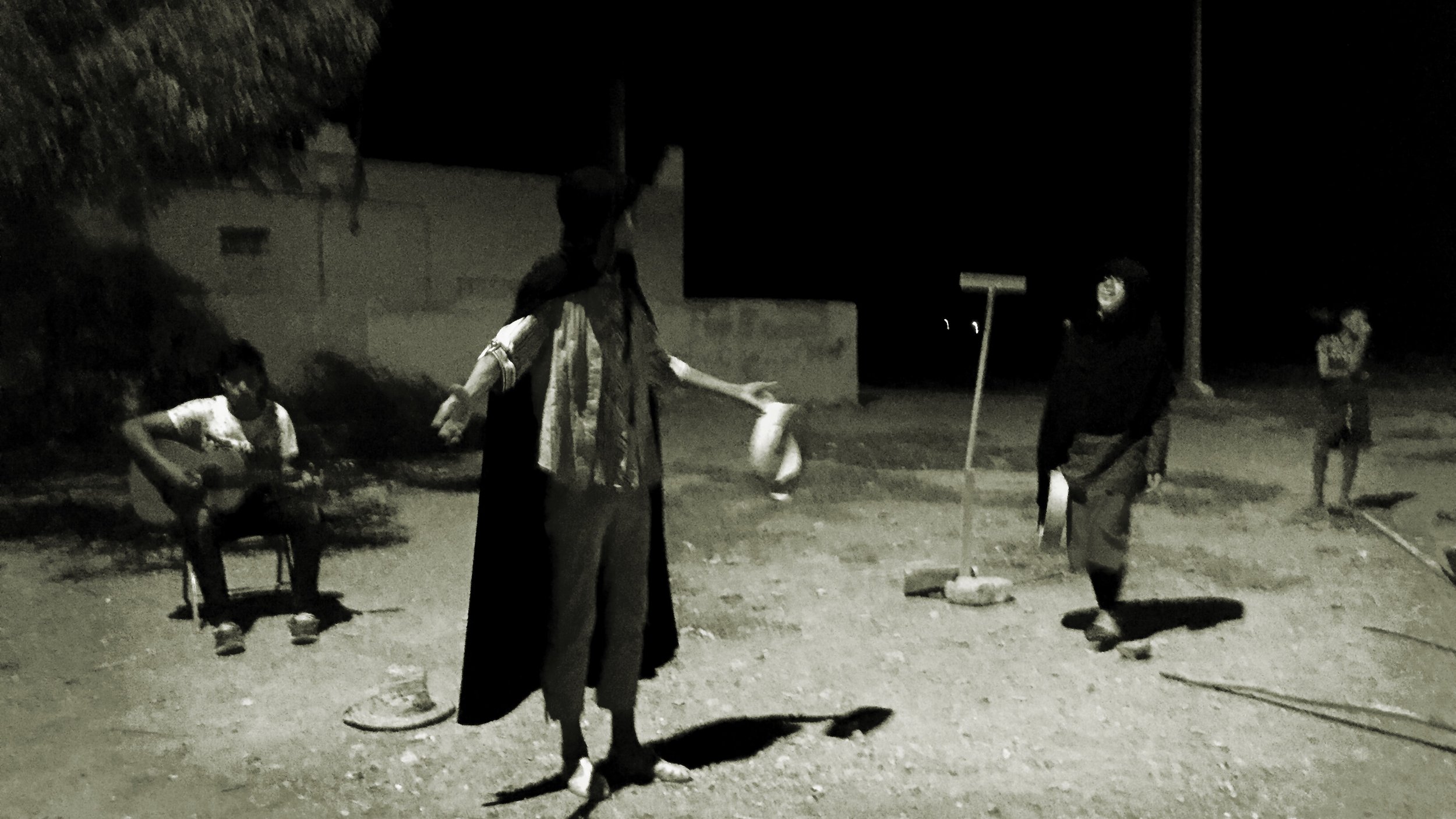
epilogue
The opinion of the artists, the locals and the organisers is always important if we want to improve the organisation and the experience. Personally, I appreciated Salmane's comment, "The art made in Tighmert it is not a product of the artist but of the oasis", and the new dimension the gathering took with the night we spent with the nomads that M'barek mentioned.
summary of the last three editions
Sometimes we need to look back to see everything we have accomplished and the importance to keep pushing the culture development in the oasis...
budget Caravane Tighmert 2017: 8.000 Dh (750 €)